Tim-D-AmazonBookPubl Misc 1 to 2
Tim-D-AmazonBookPubl Misc 1 to 2 - Part 1
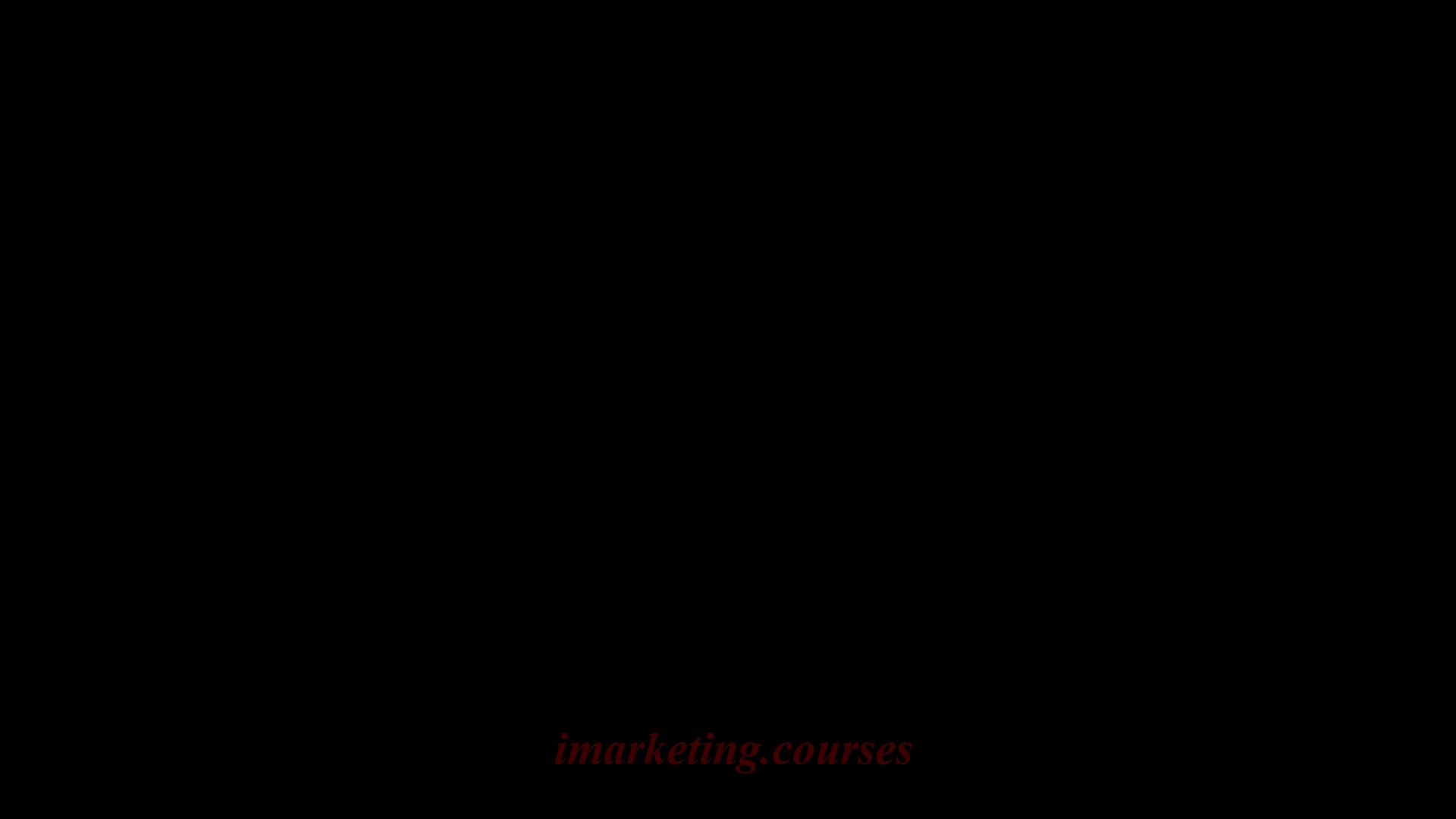
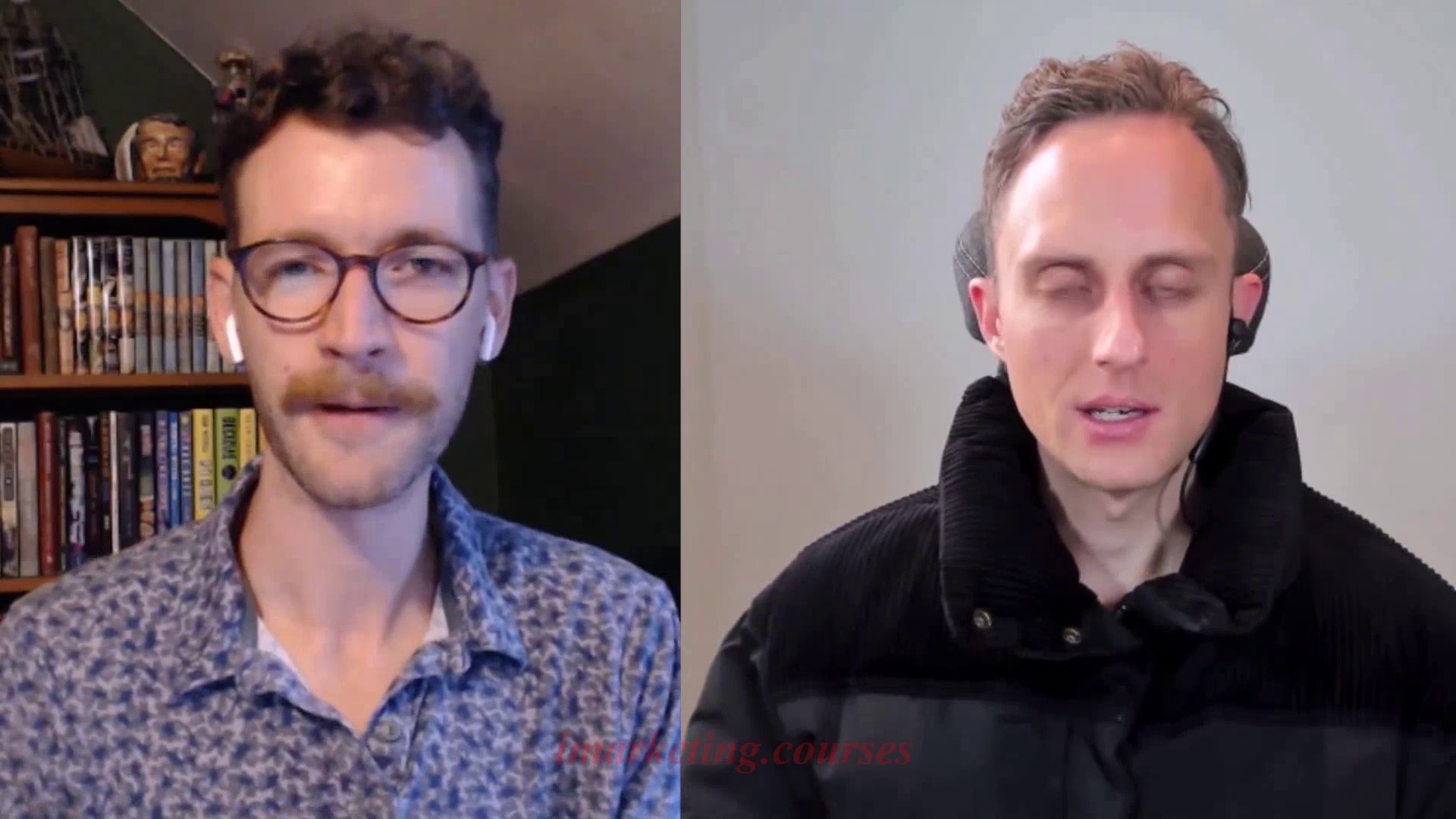
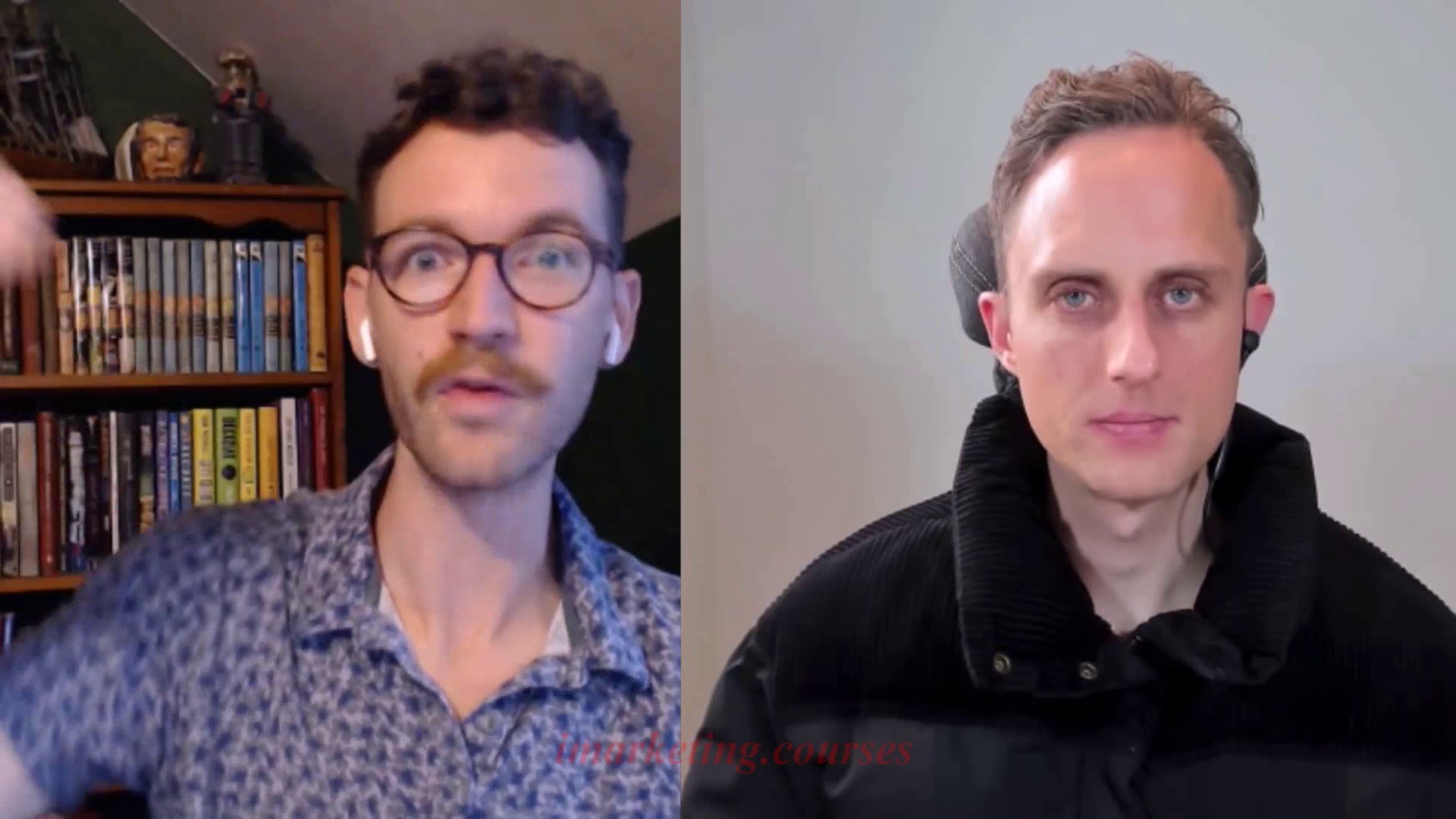
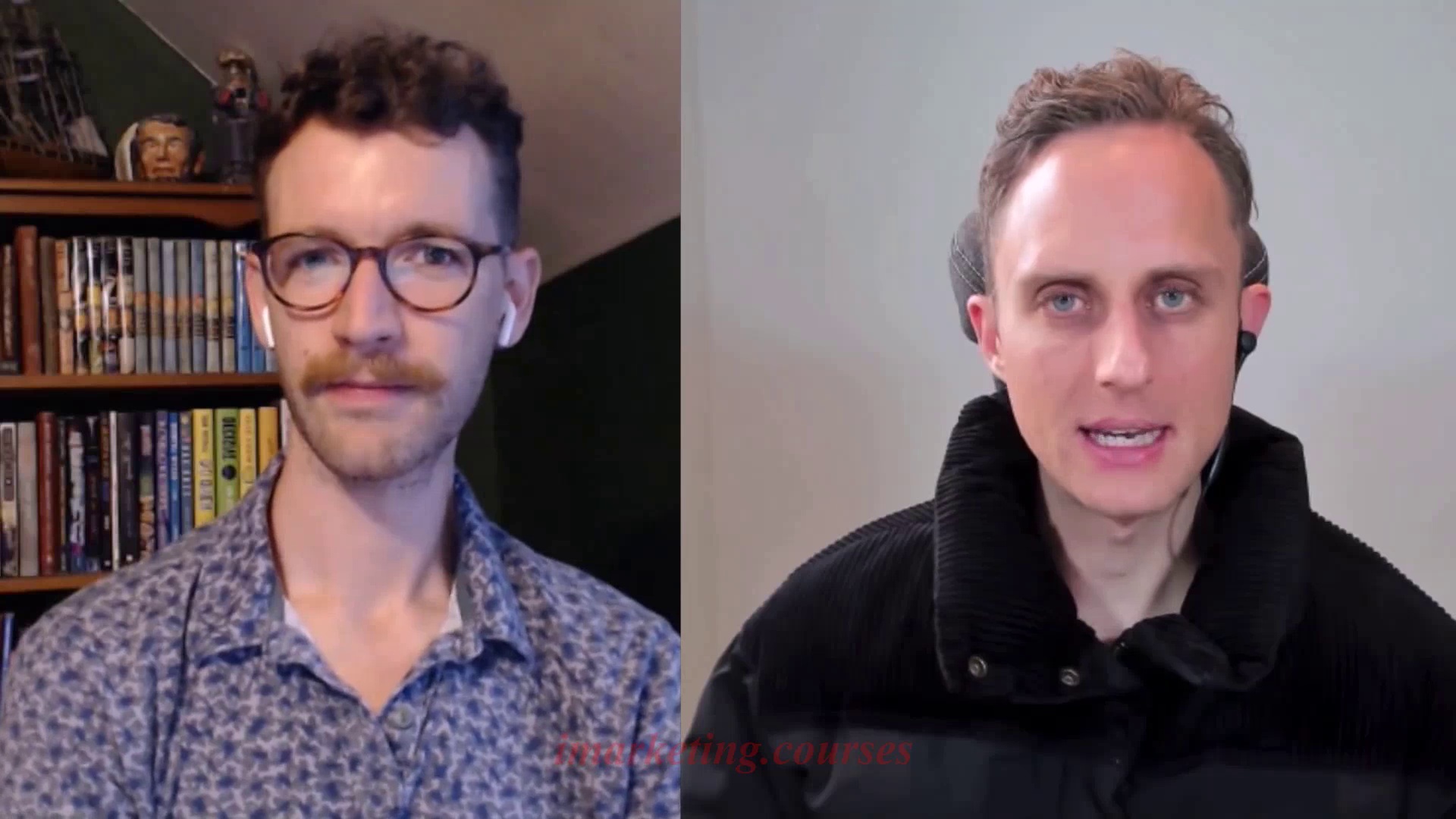
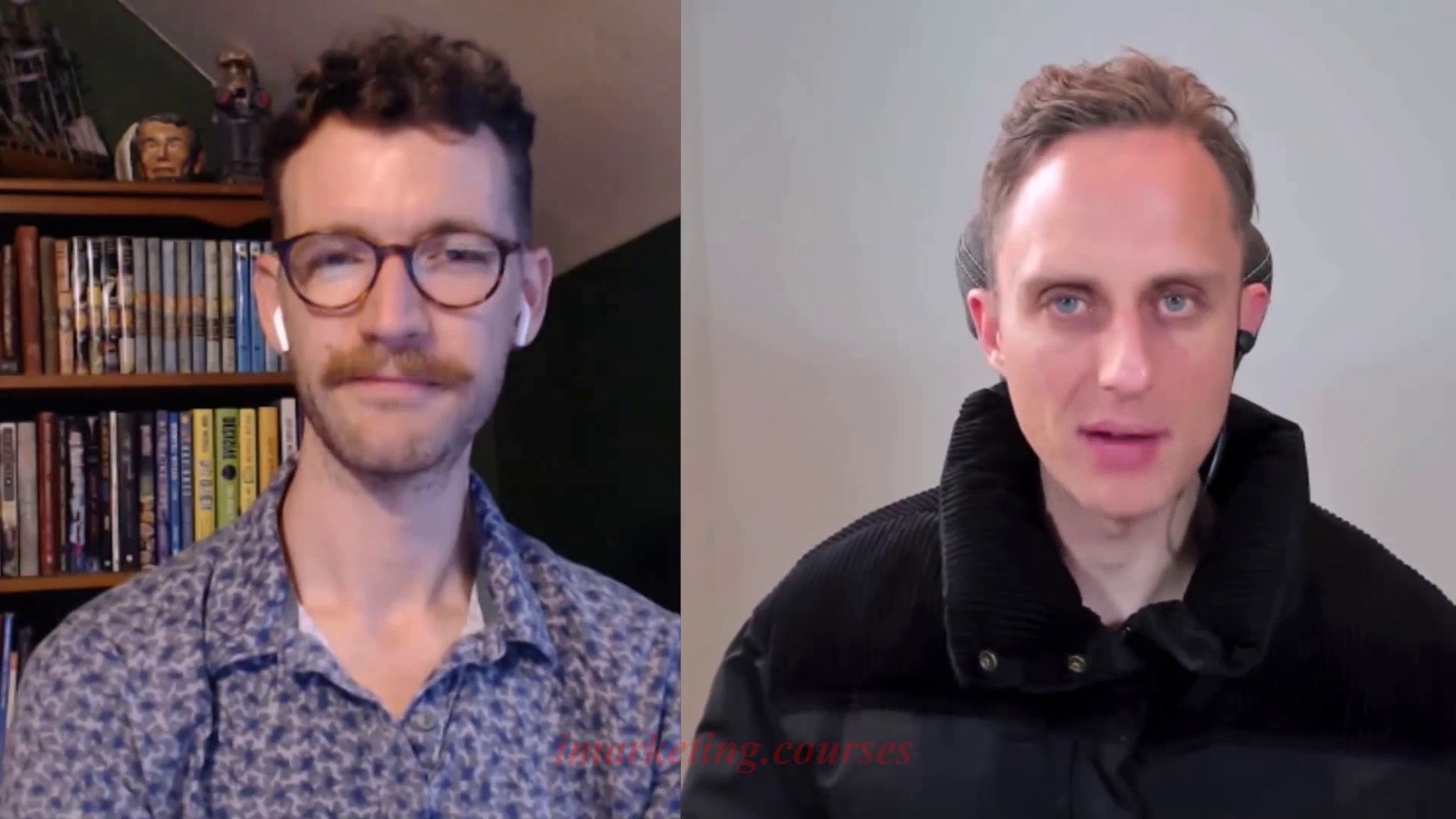
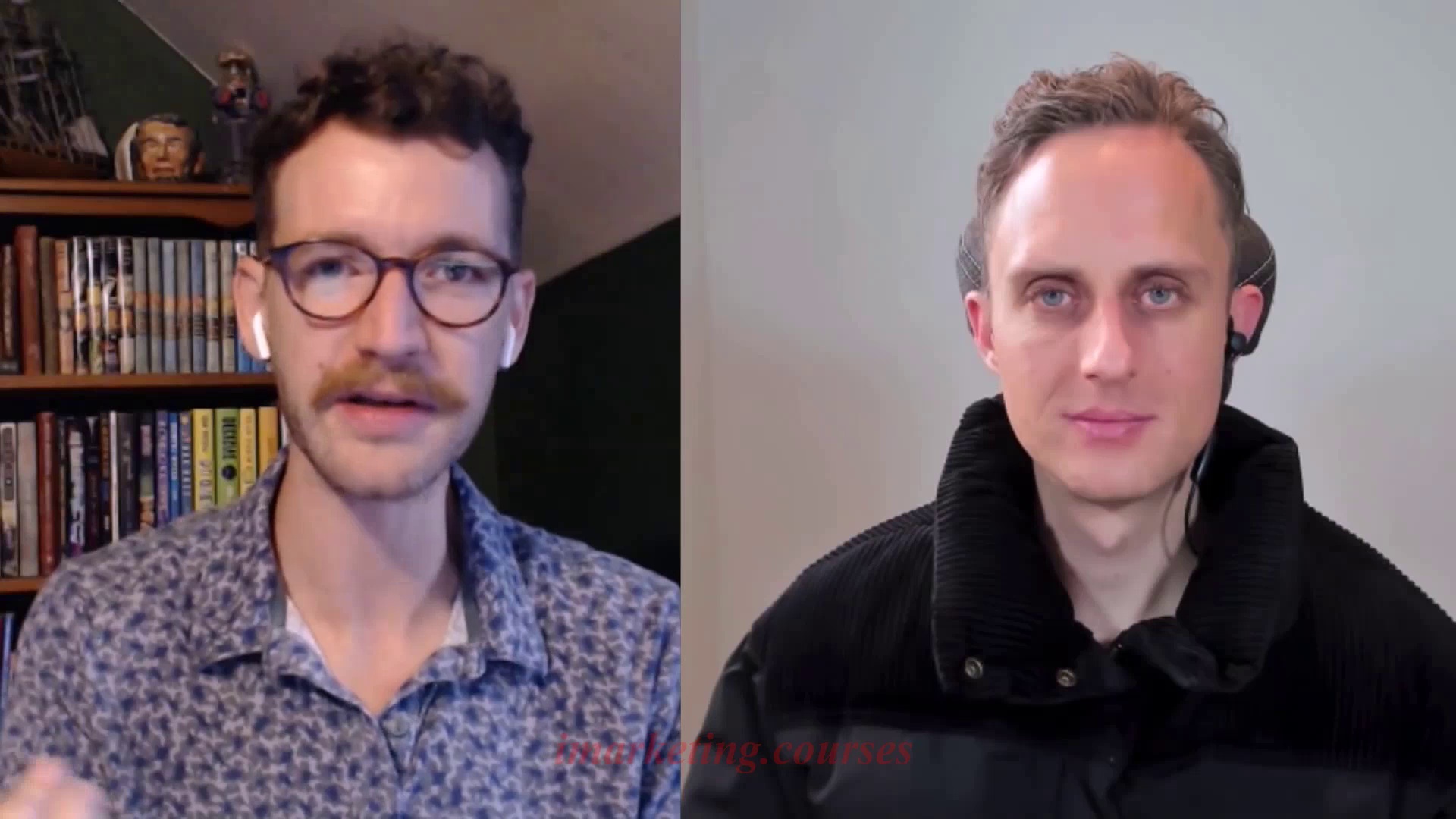
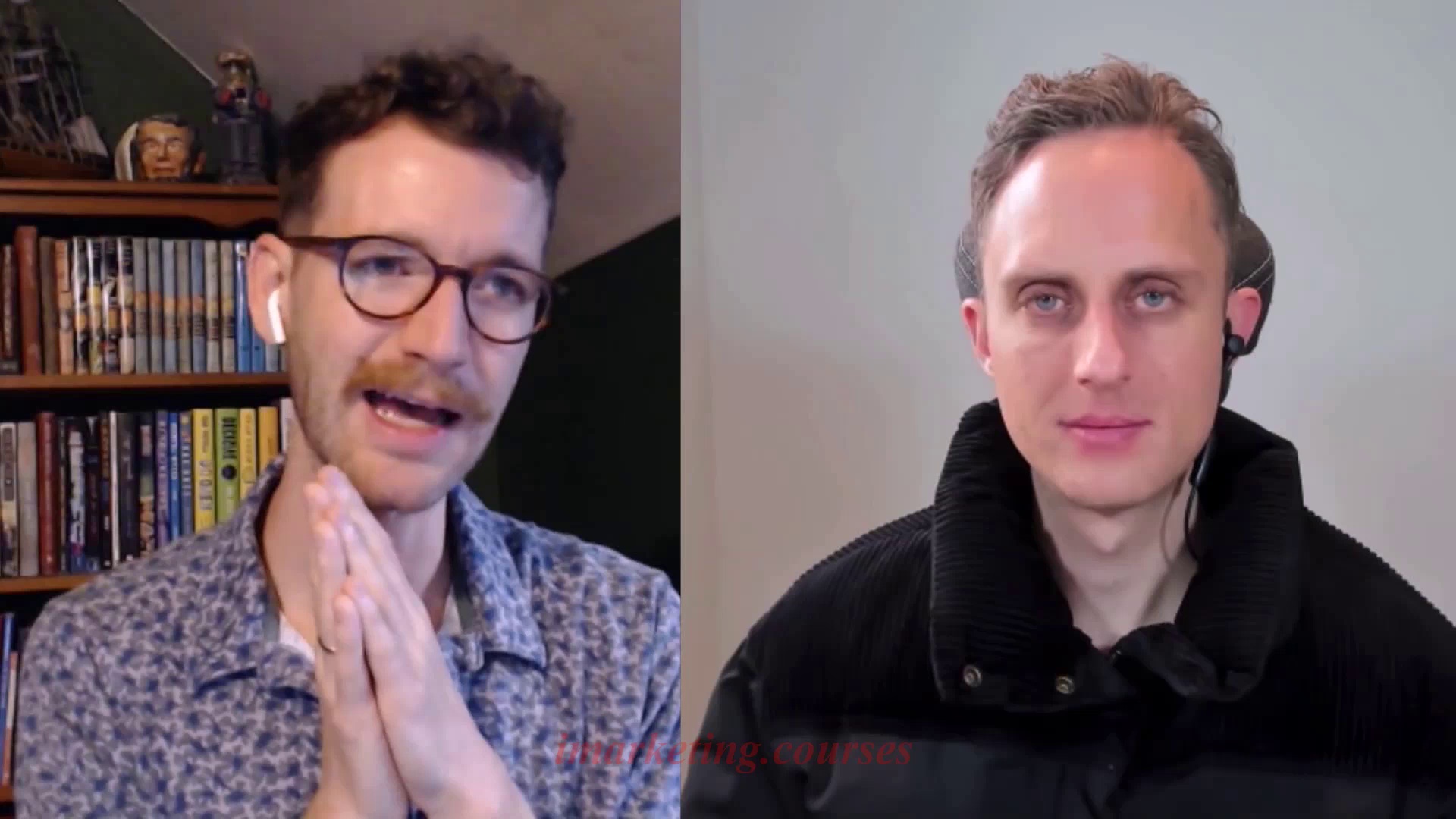
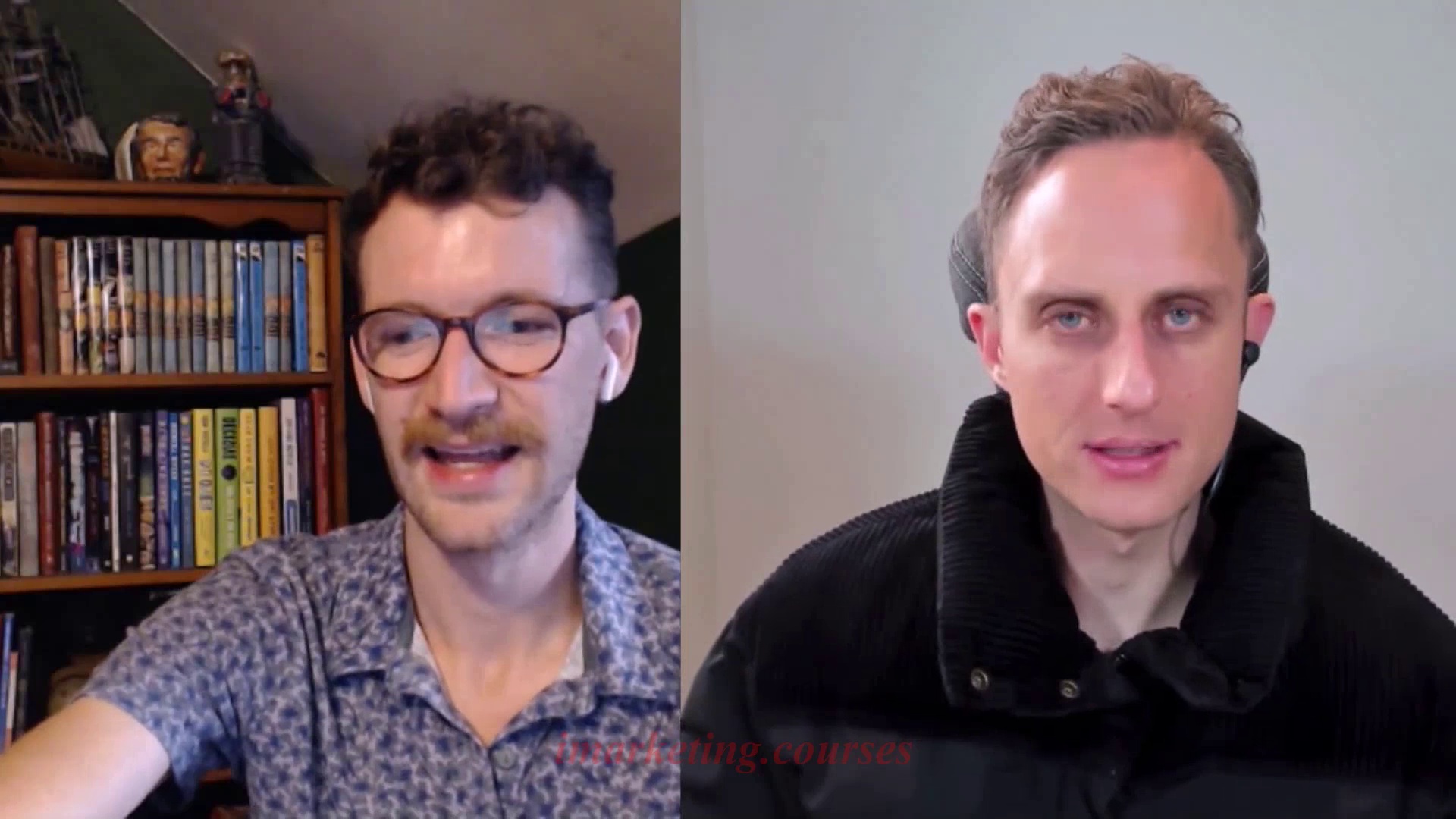
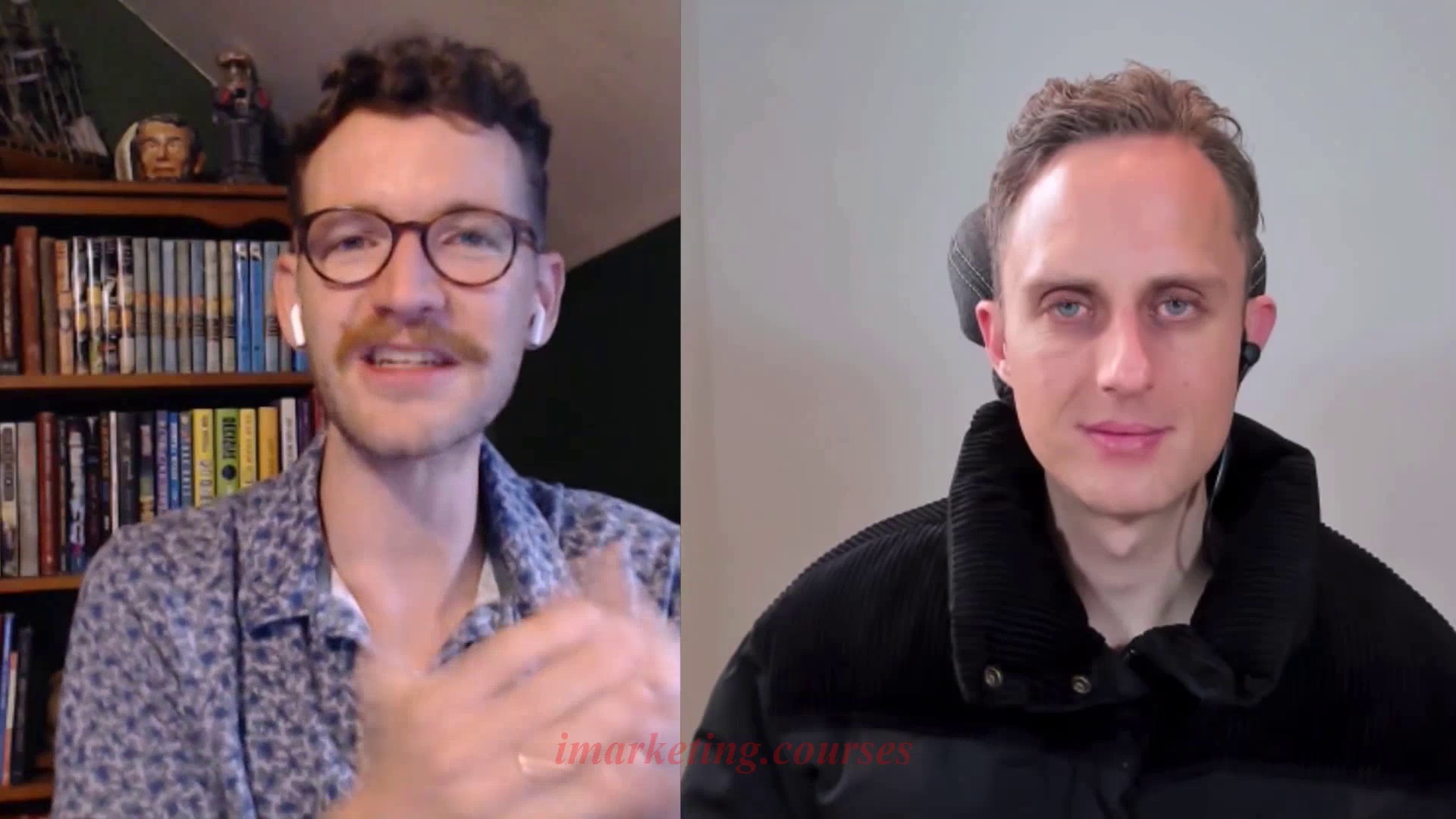
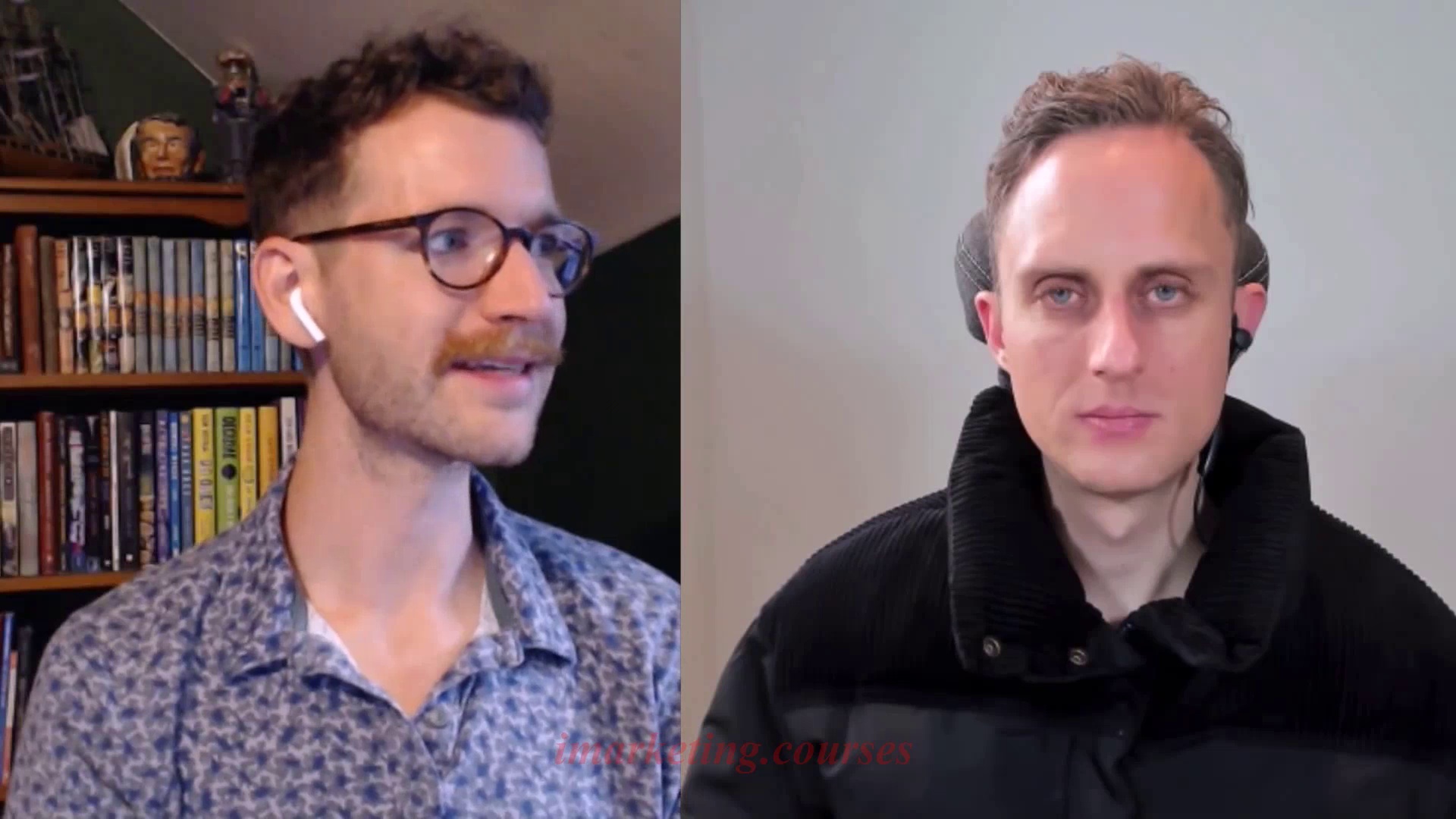
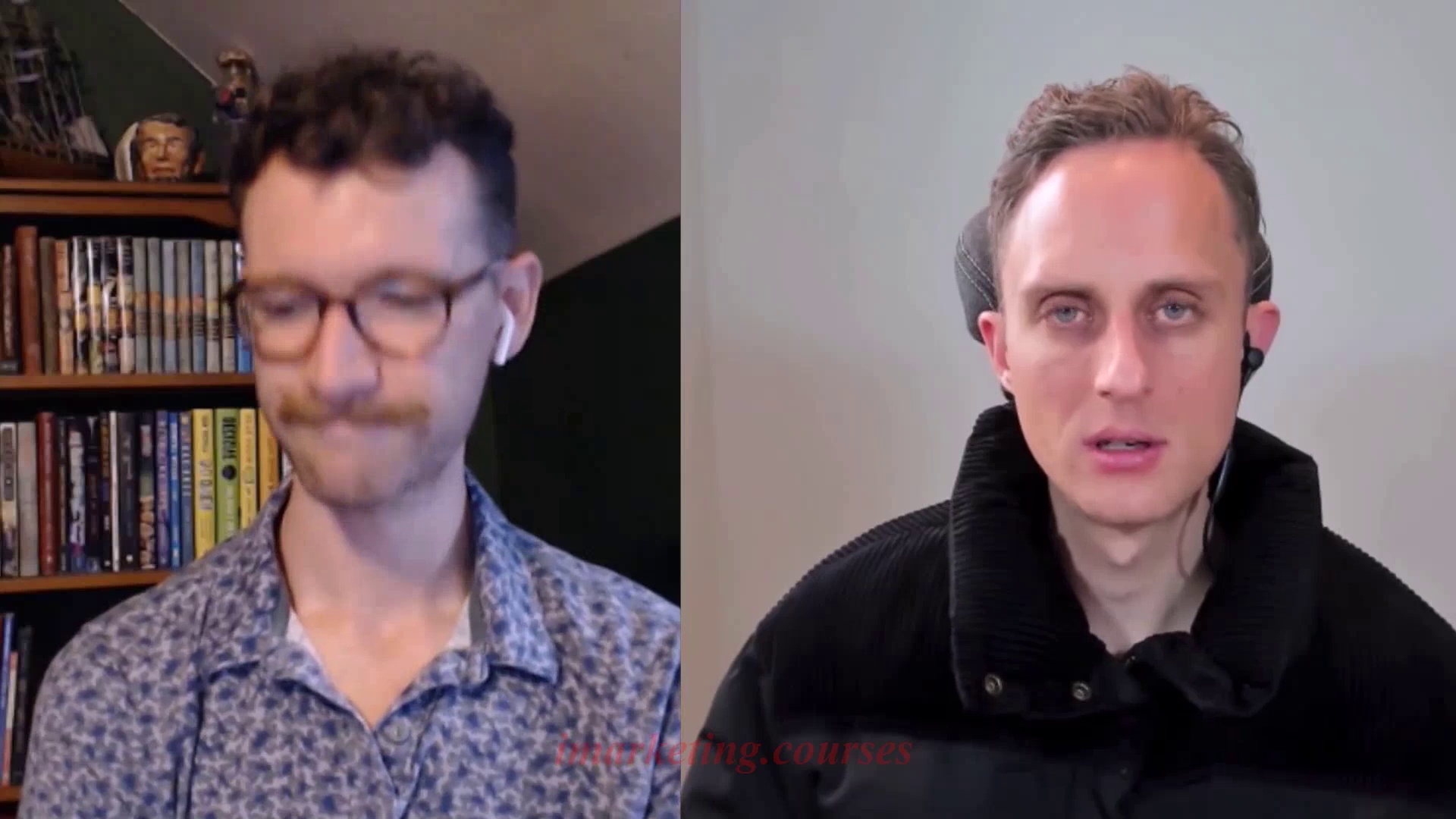
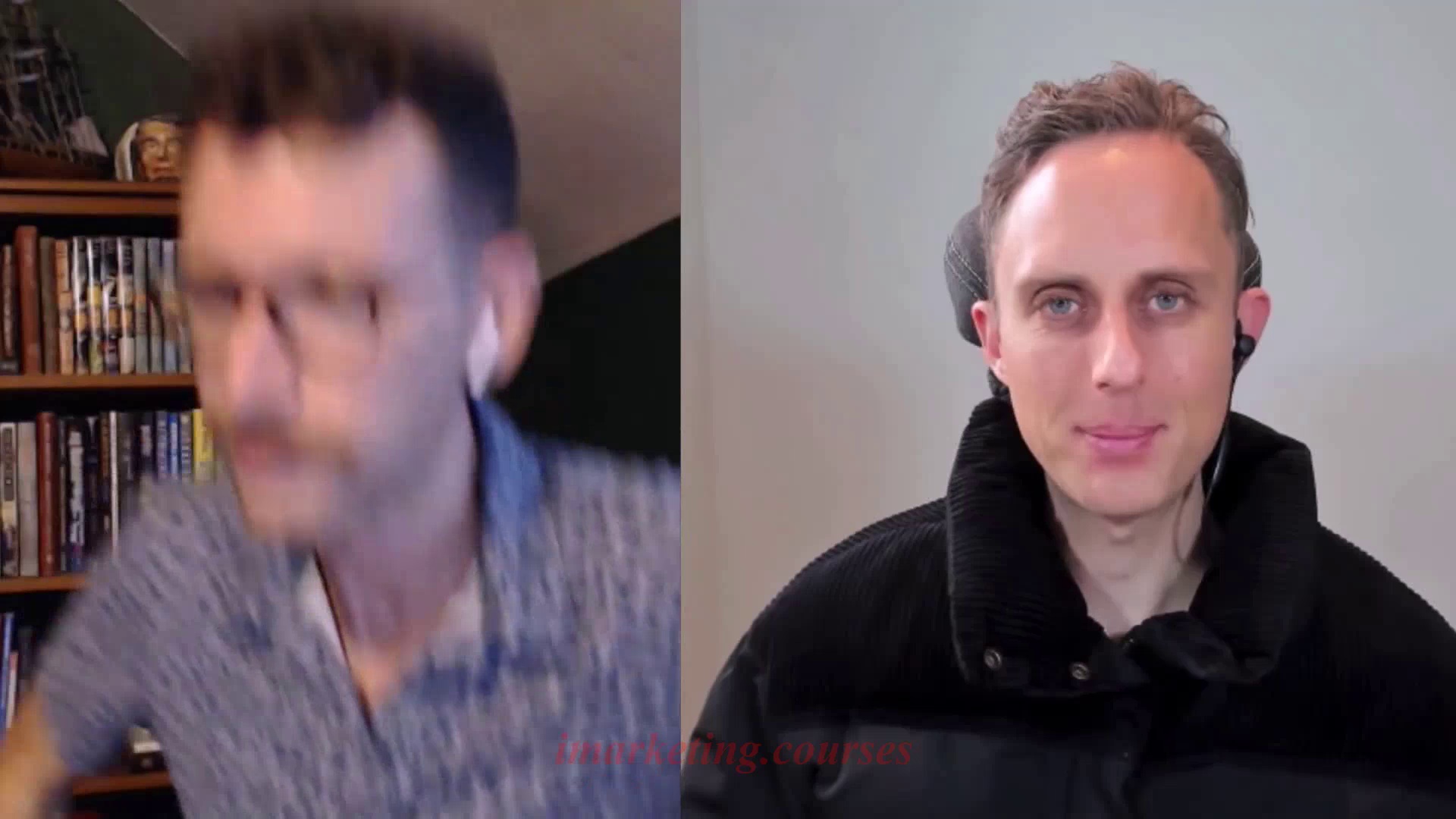
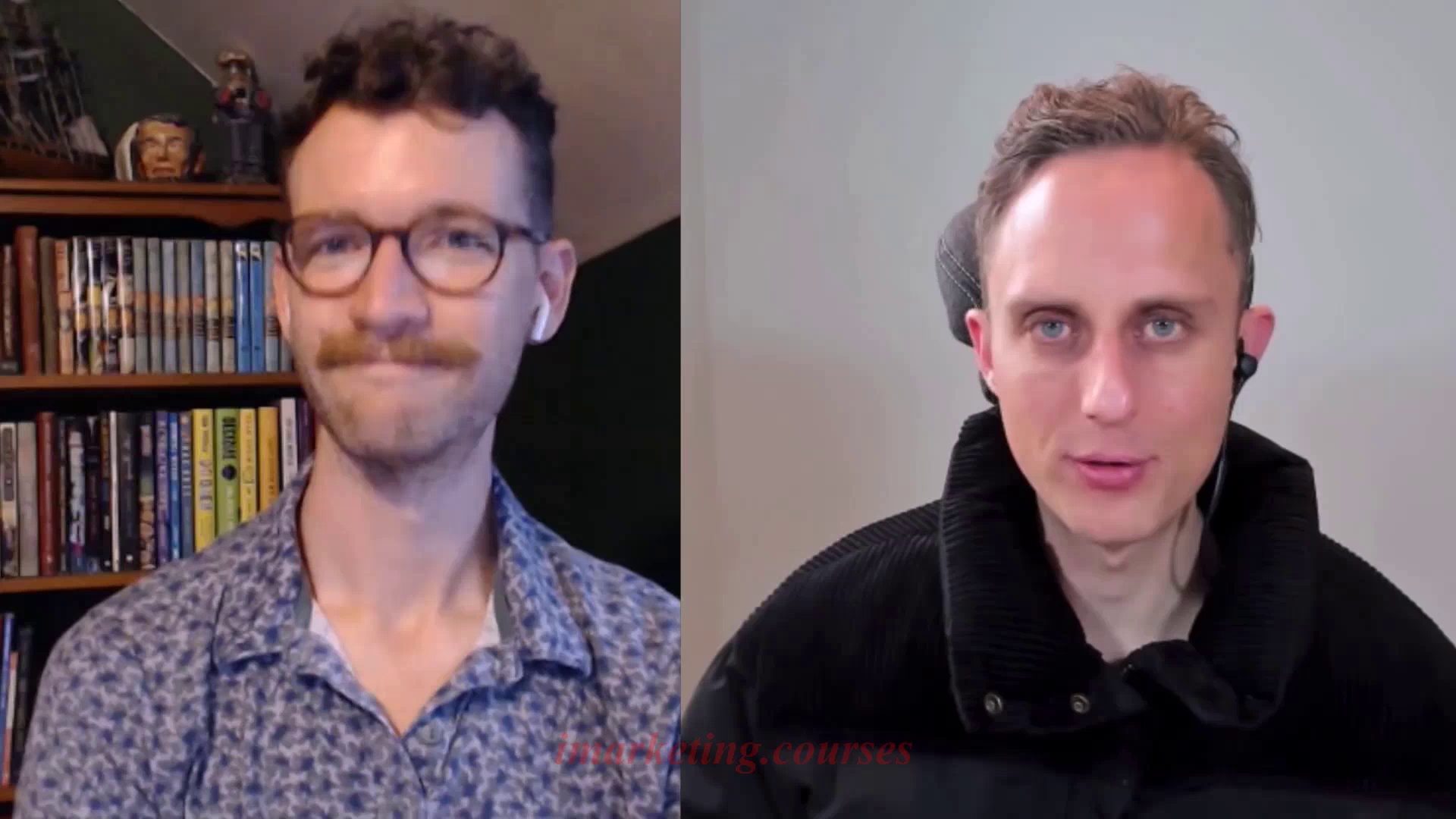
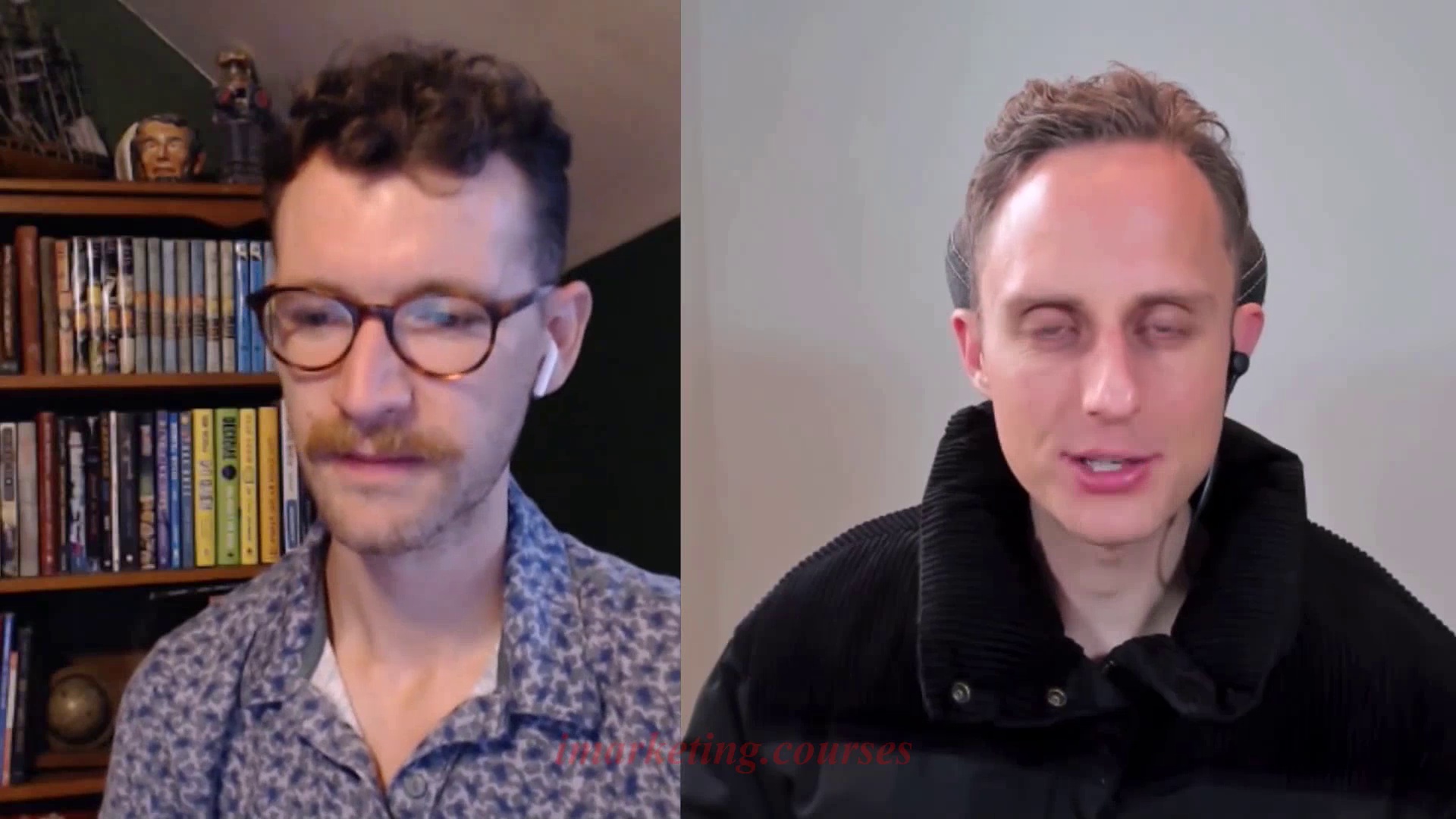
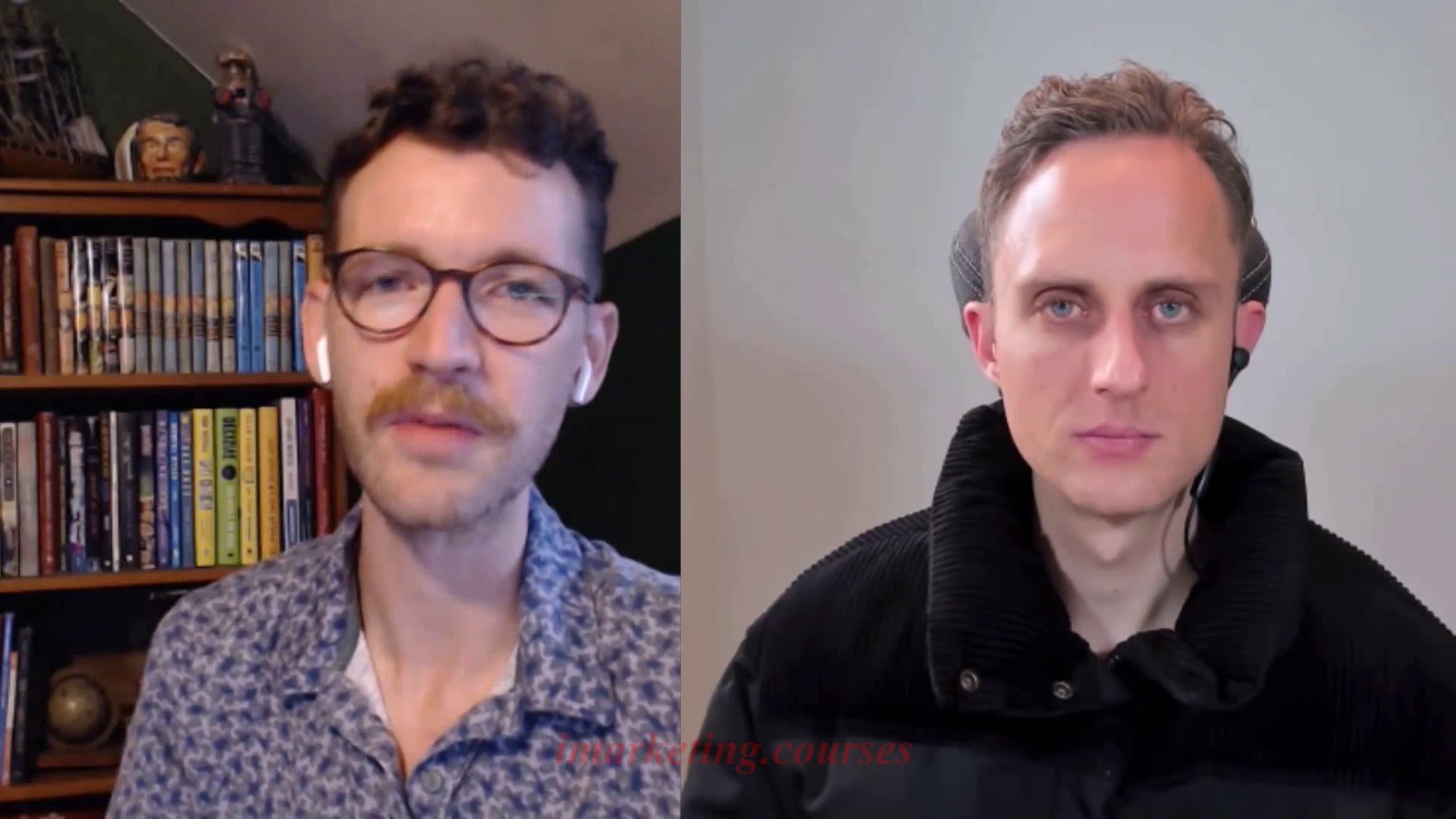
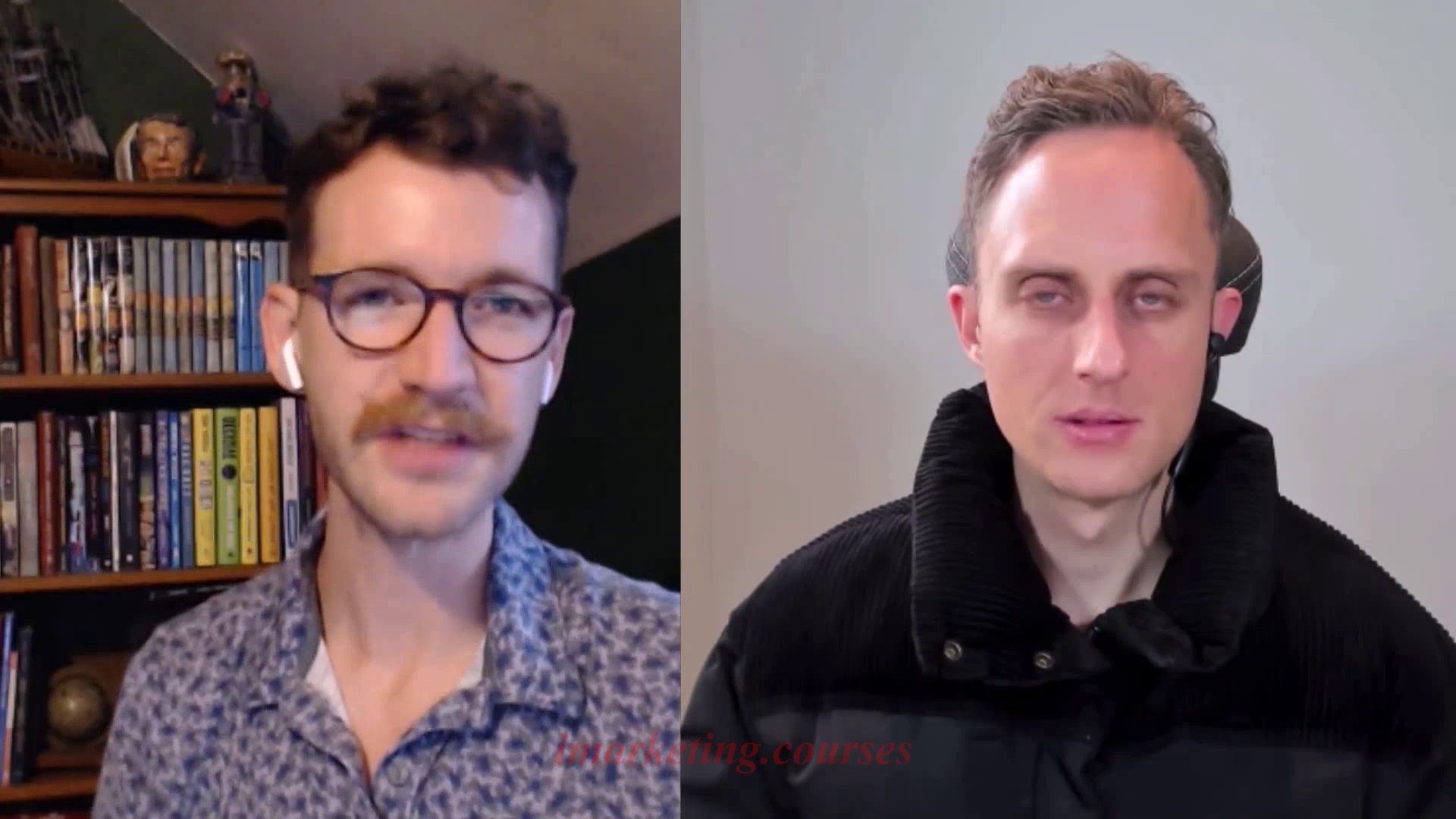
The narrator emphasizes that writing one book is just the start - you should aim to write multiple books over time. Treat each book like a long blog post, not your life's work. Use books to build an audience and fanbase who may be interested in your other offerings.
Amazon ads are an underappreciated way for authors to generate sales and get discovered. Following the simple $0.30 per click template can unlock Amazon's huge existing audience of book buyers.
Being in a small niche Amazon book category makes it easier to reach bestseller status and get more visibility from Amazon.
Don't wait to be picked by a publisher - self publish on Amazon first to demonstrate sales potential and possibly use that track record to get a future publishing deal.
The book itself needs to be high quality and deliver value, not just be an ad or sales pitch for the author's other products and services.
Consider providing exclusive extras to your biggest fans who want more access and content.
.Tim-D-AmazonBookPubl Misc 1 to 2 - Part 2
















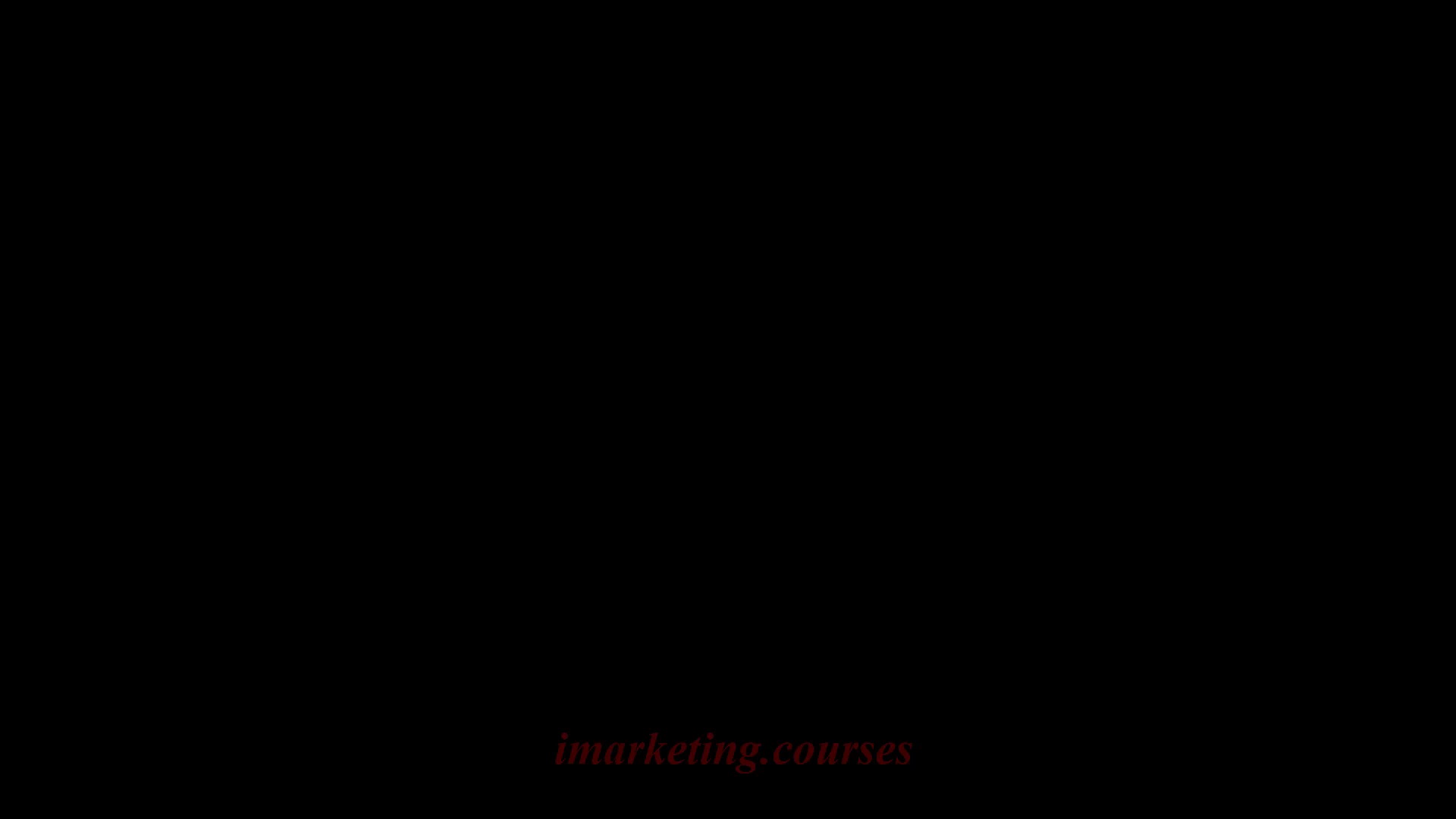
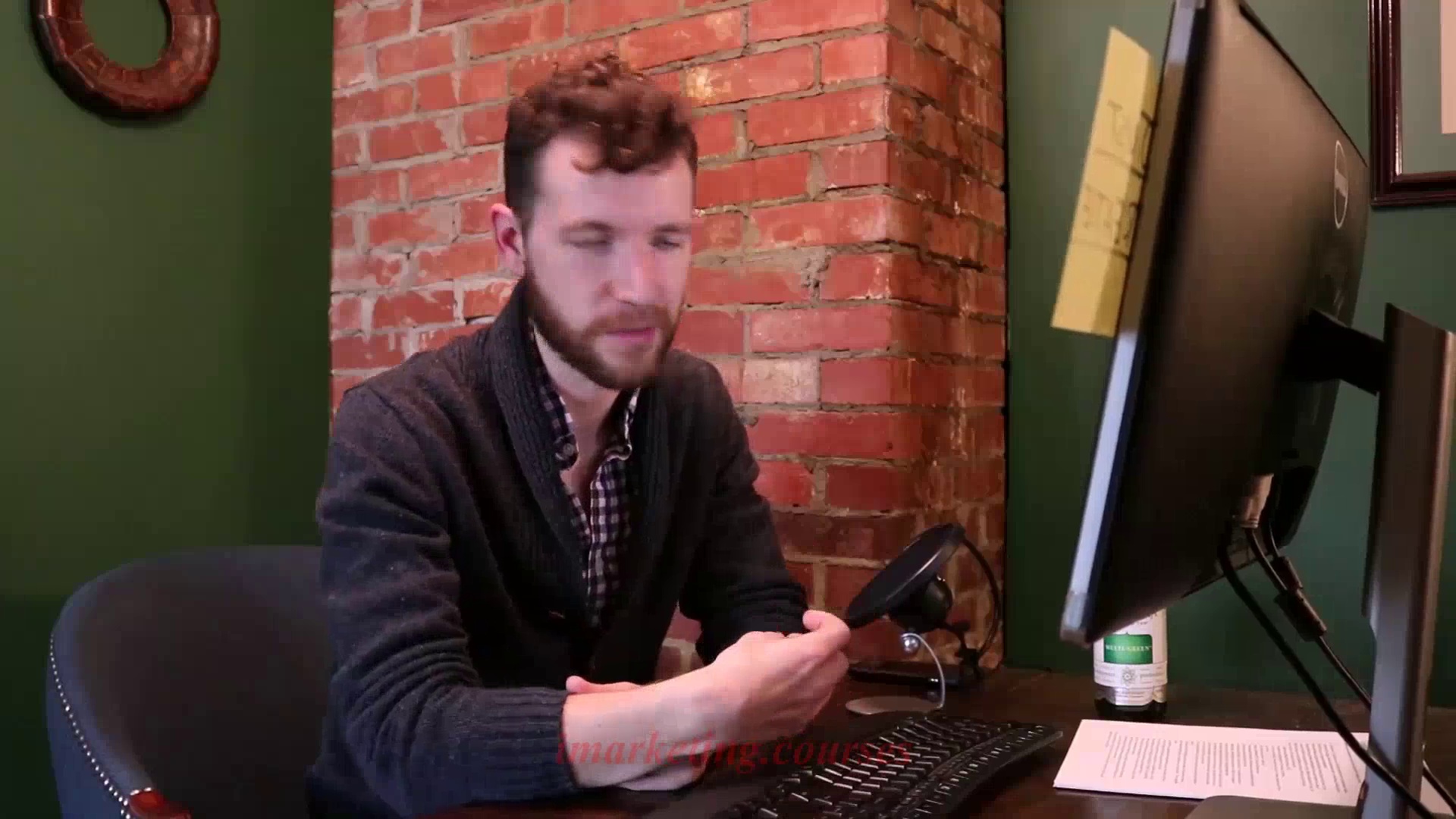
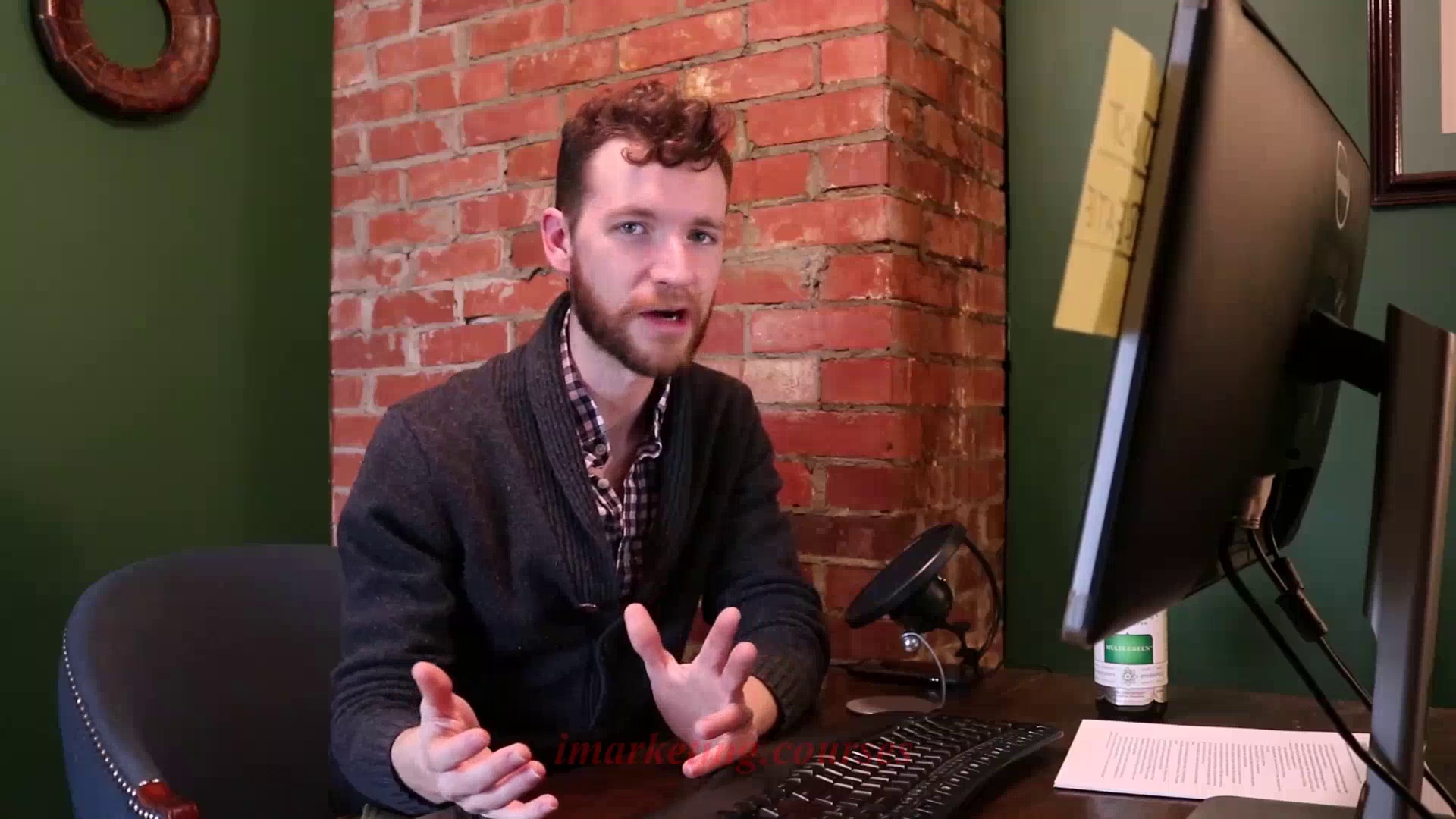
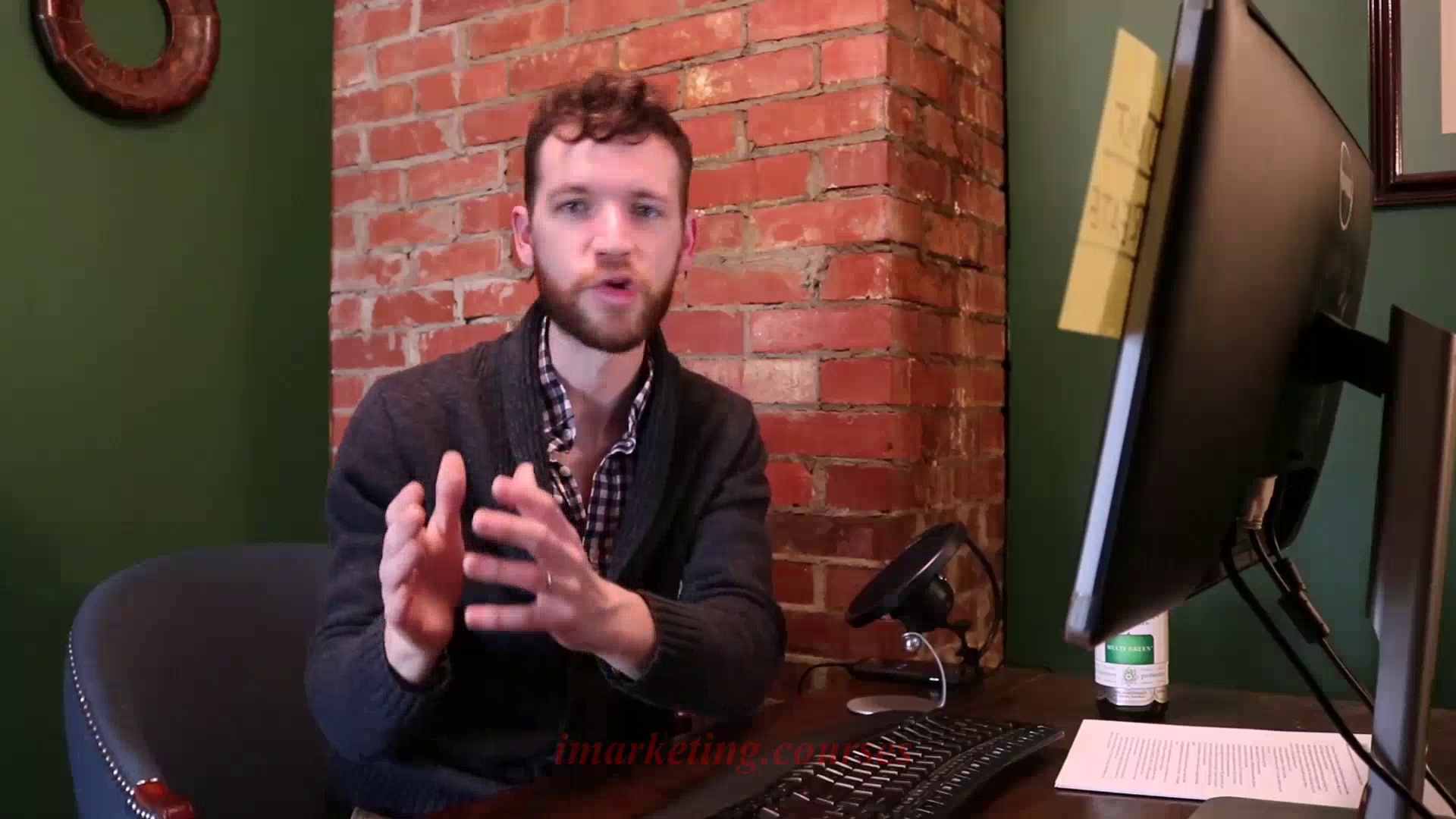
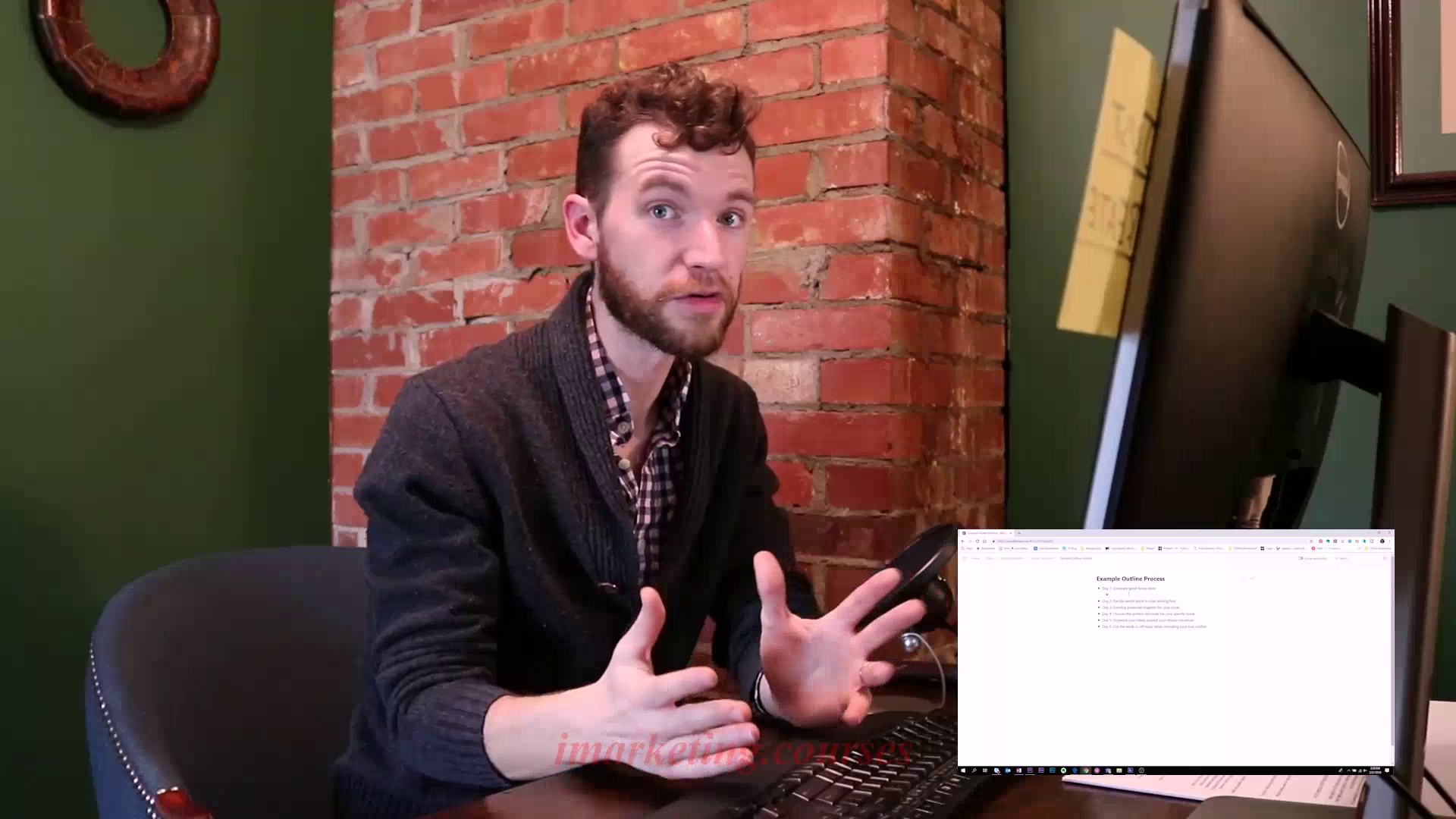
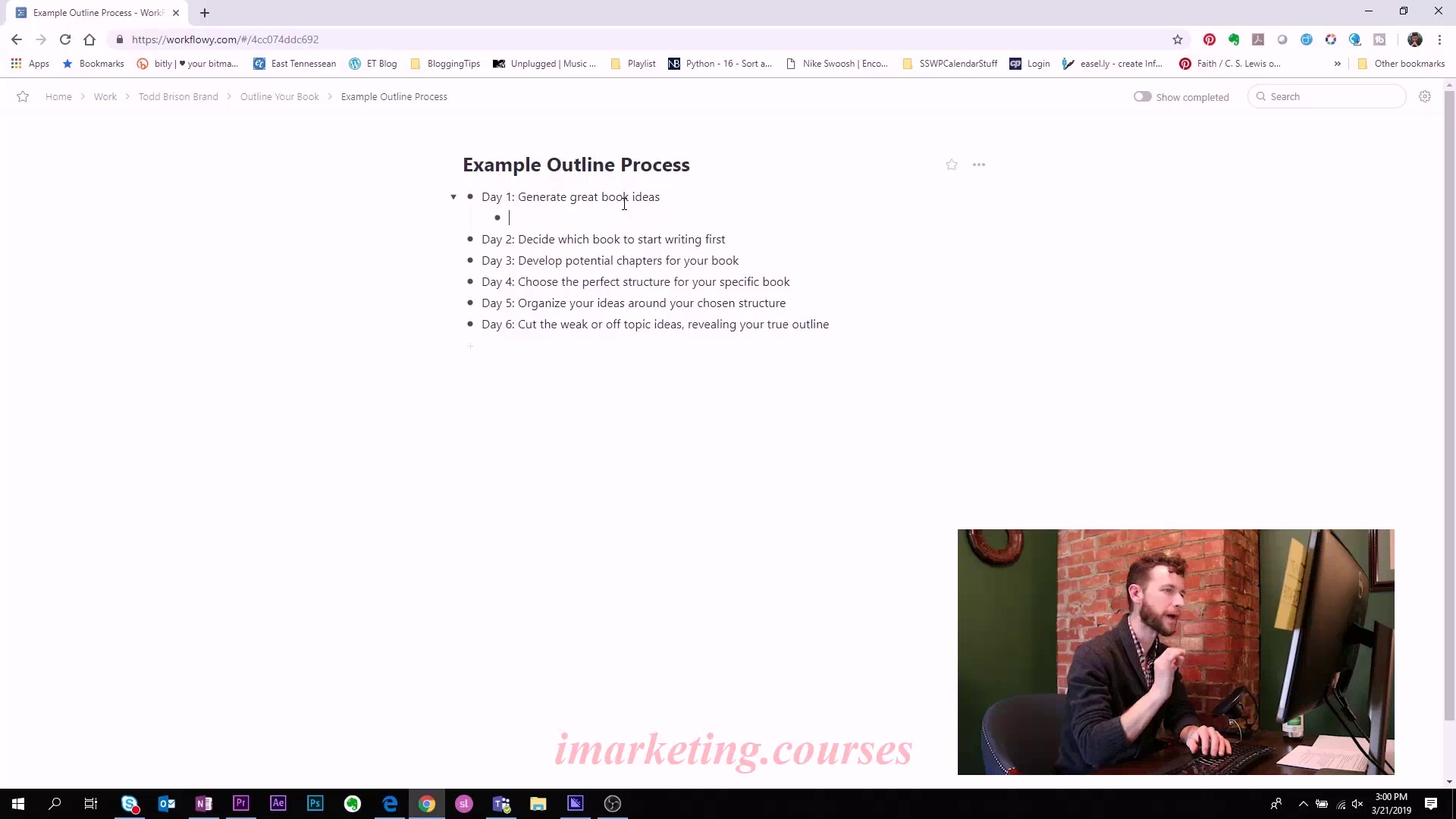
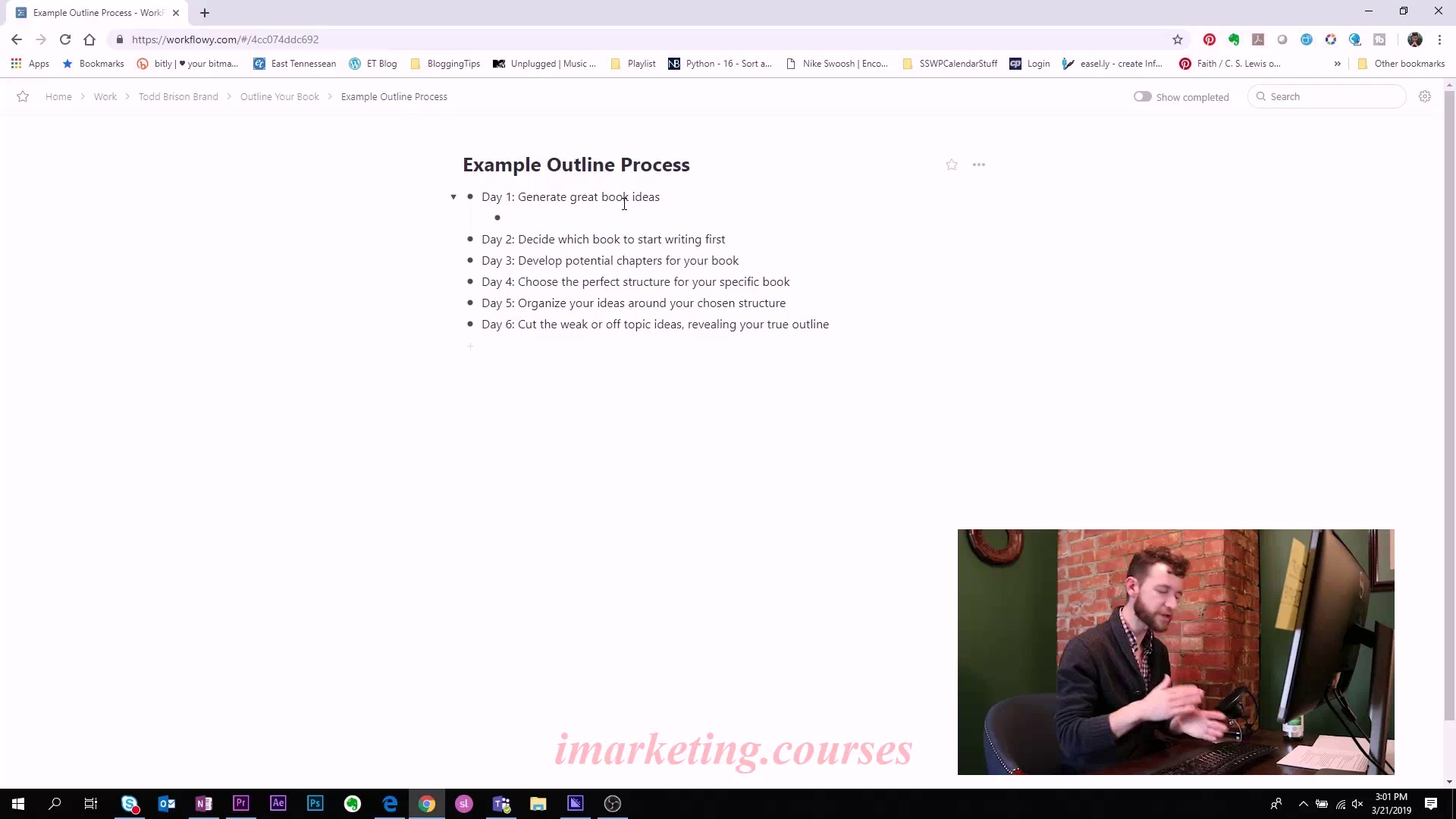
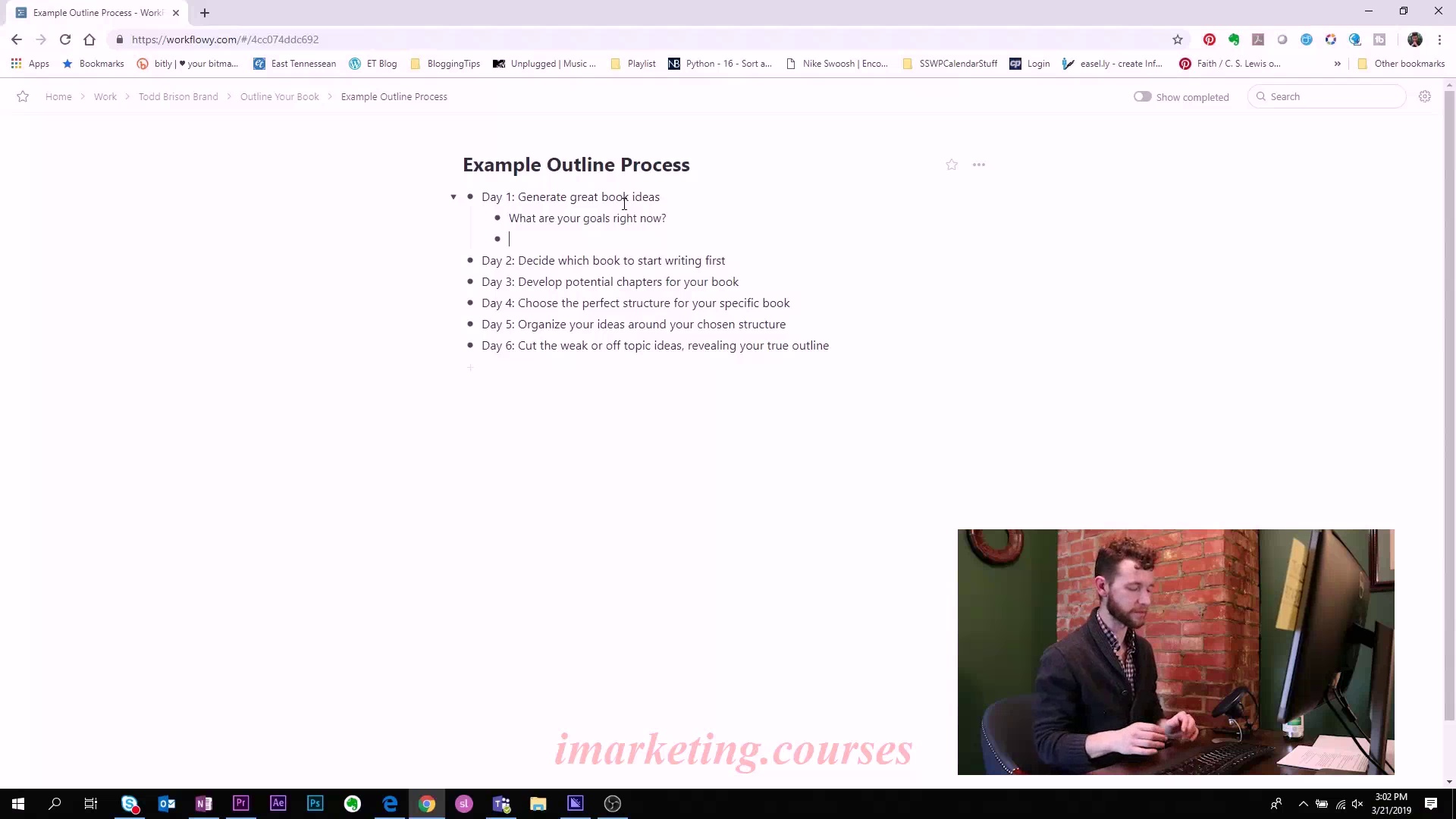
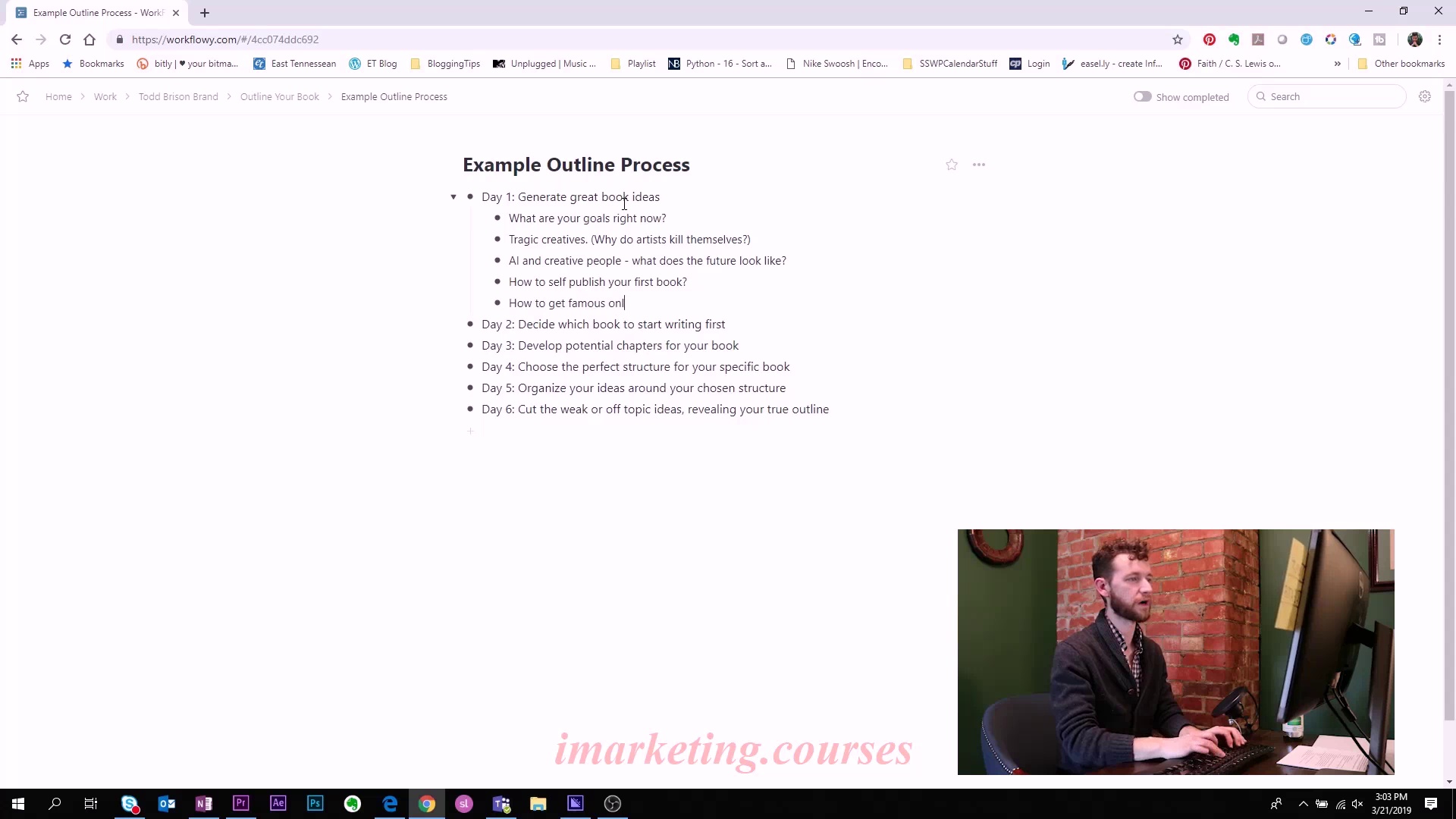
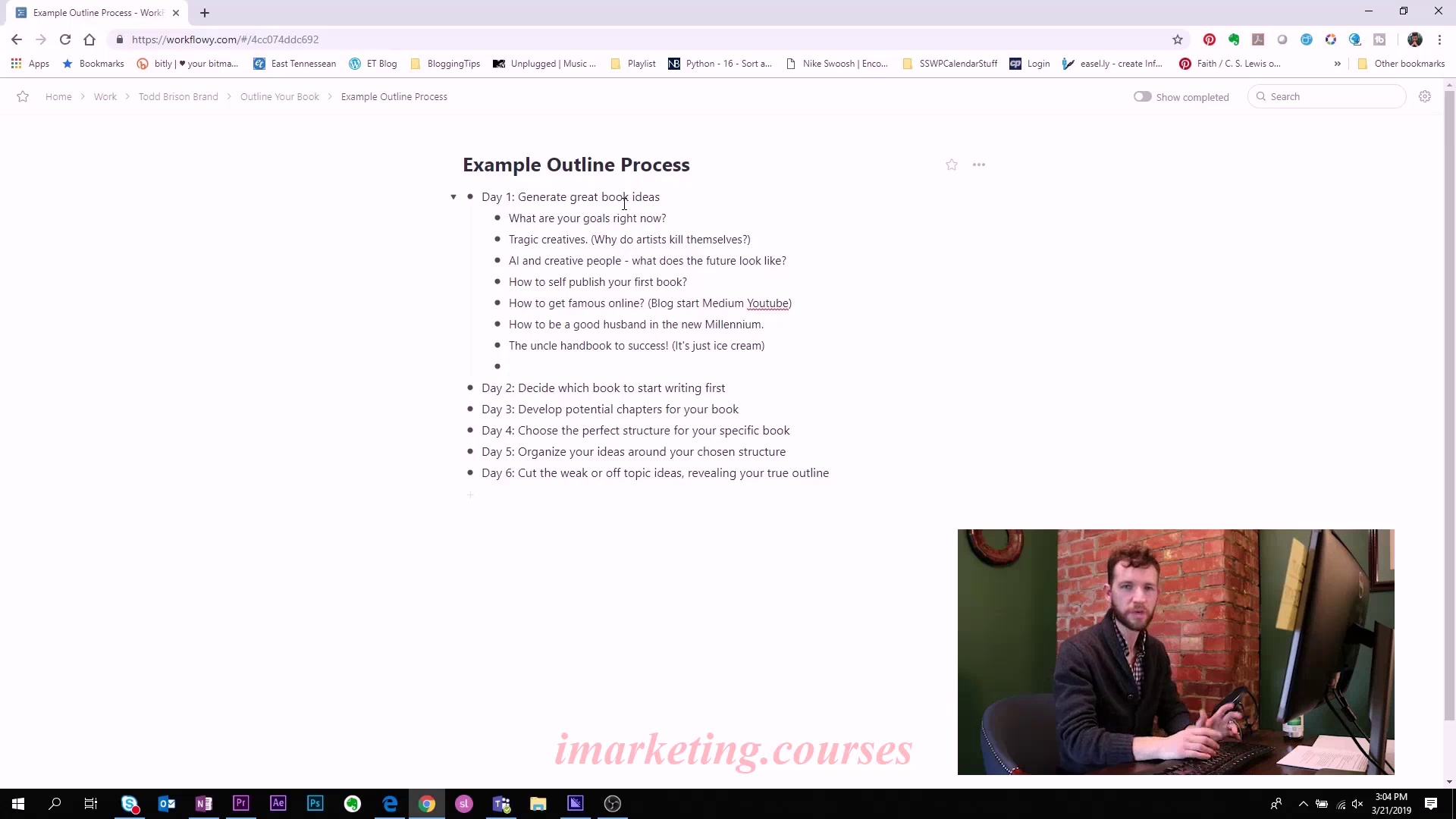
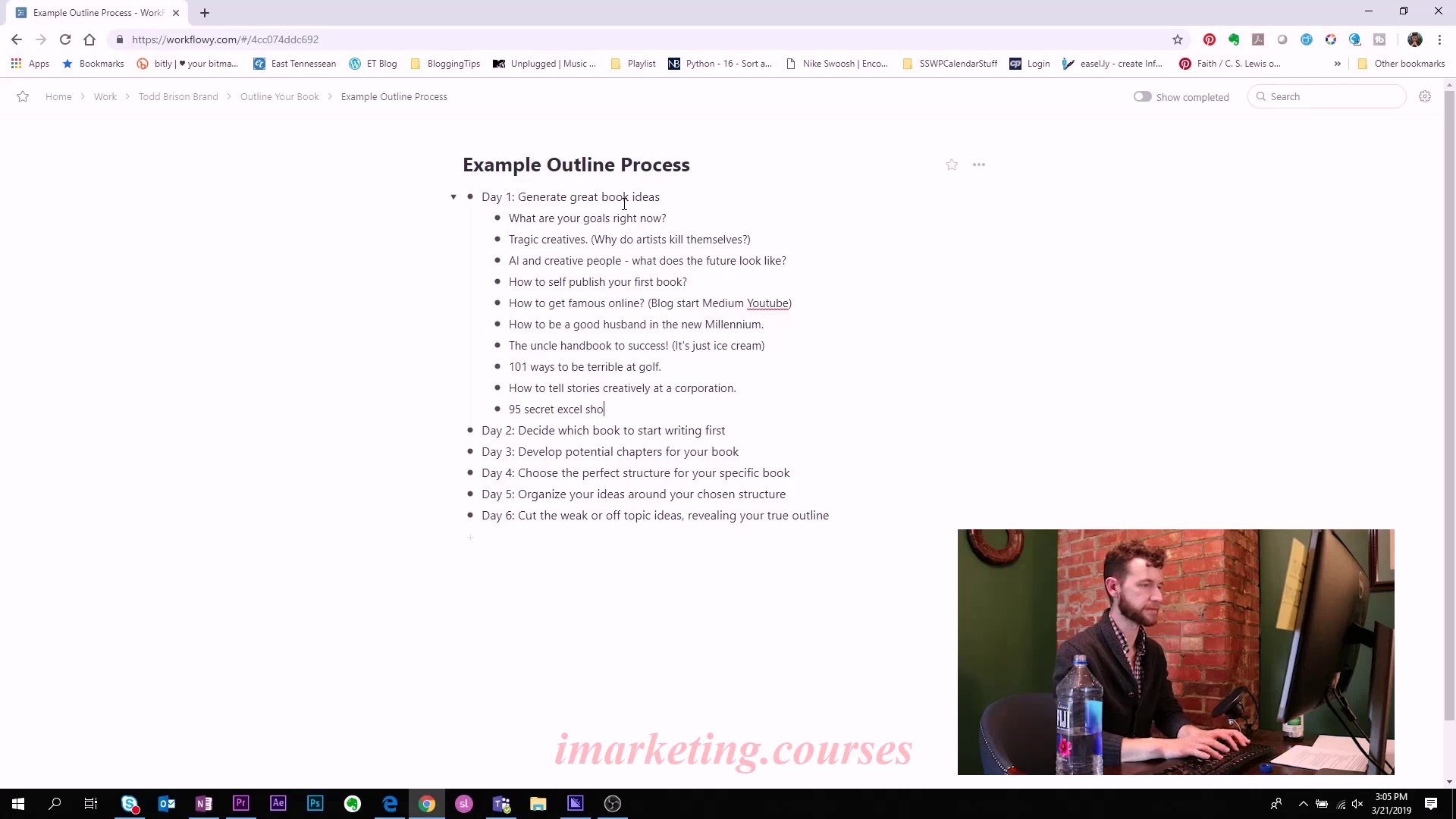
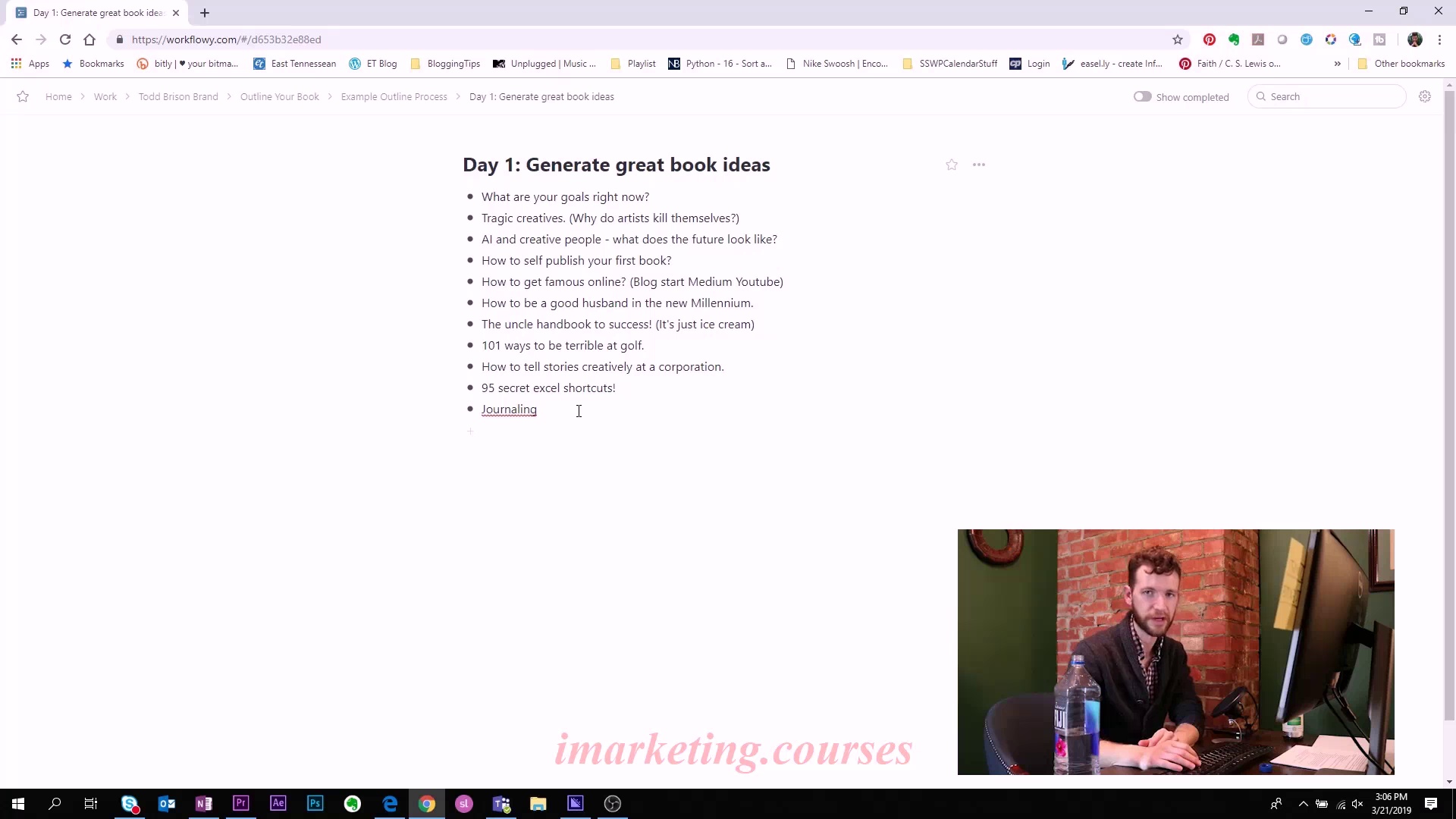
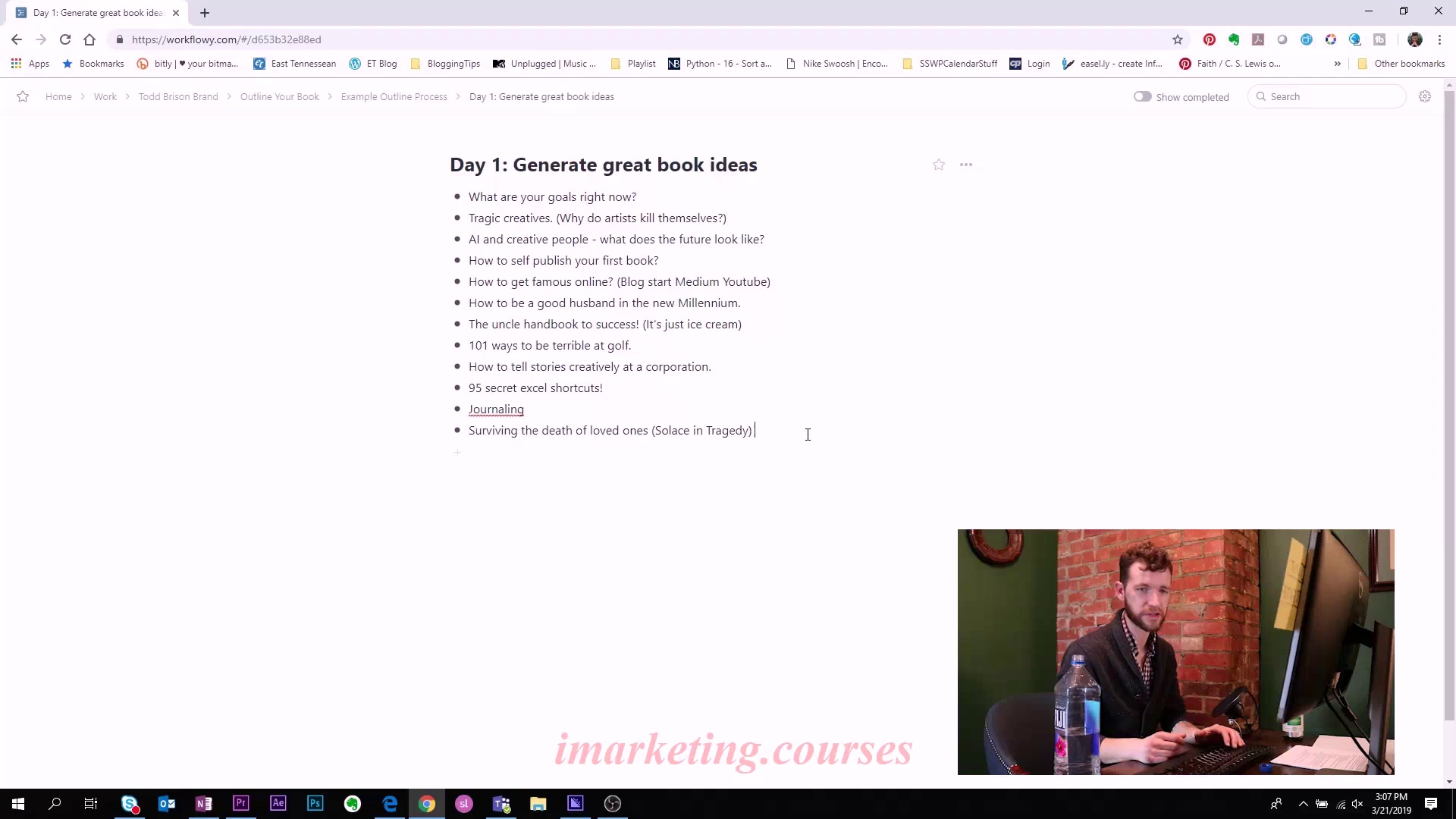
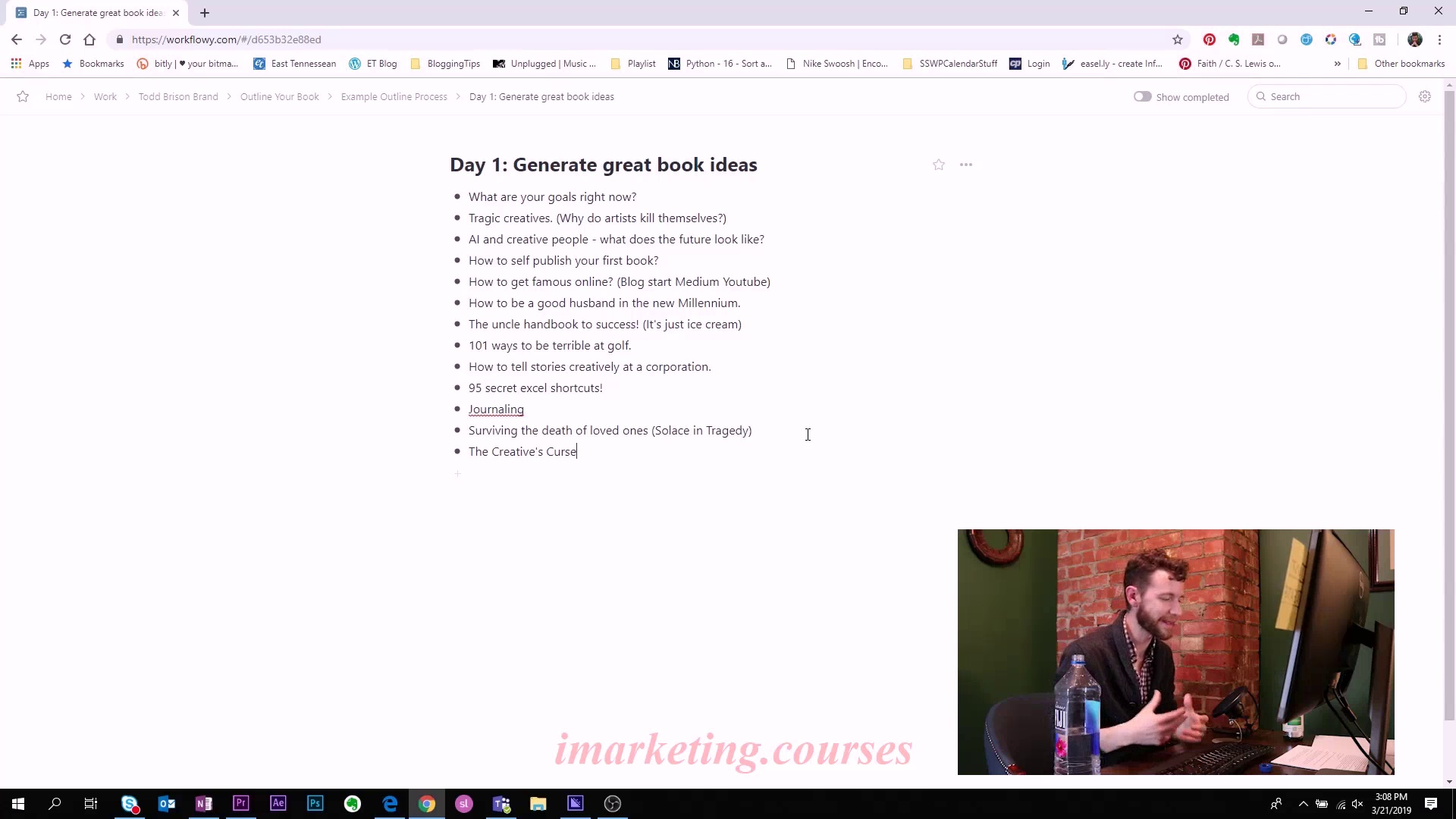
Todd B believes creative people should write books because books give credibility, open opportunities, help establish an author, and can generate income. He shares his personal experience of becoming successful after publishing his first book. Todd wants viewers to experience similar benefits.
He explains the process of generating book ideas, which involves: listing goals, passions, expertise, considering memoir ideas, and identifying well-performing blog posts. The key is to generate lots of ideas first, then evaluate and select the best ones later.
Todd demonstrates this by quickly brainstorming over 20 book ideas on various topics he's knowledgeable or passionate about. He encourages viewers to use whatever medium they prefer for recording ideas and to aim for at least 10 ideas to stretch their creativity.
The next step will be choosing one idea to pursue based on factors like goals, expertise, and book type. Todd tells viewers their homework is to create their own list of at least 10 book ideas before the next lesson.
.Tim-D-AmazonBookPubl Misc 1 to 2 - Part 3






























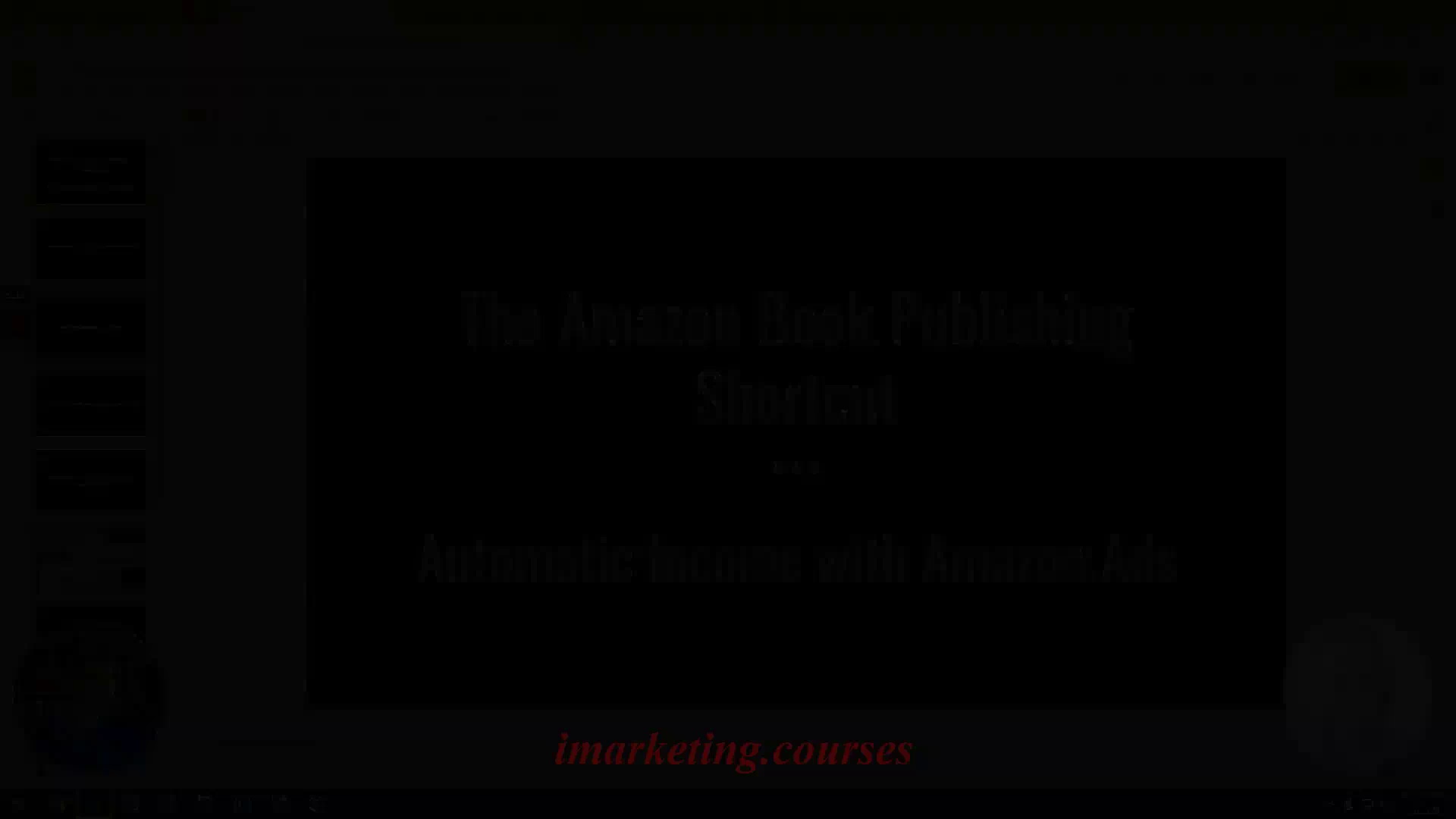
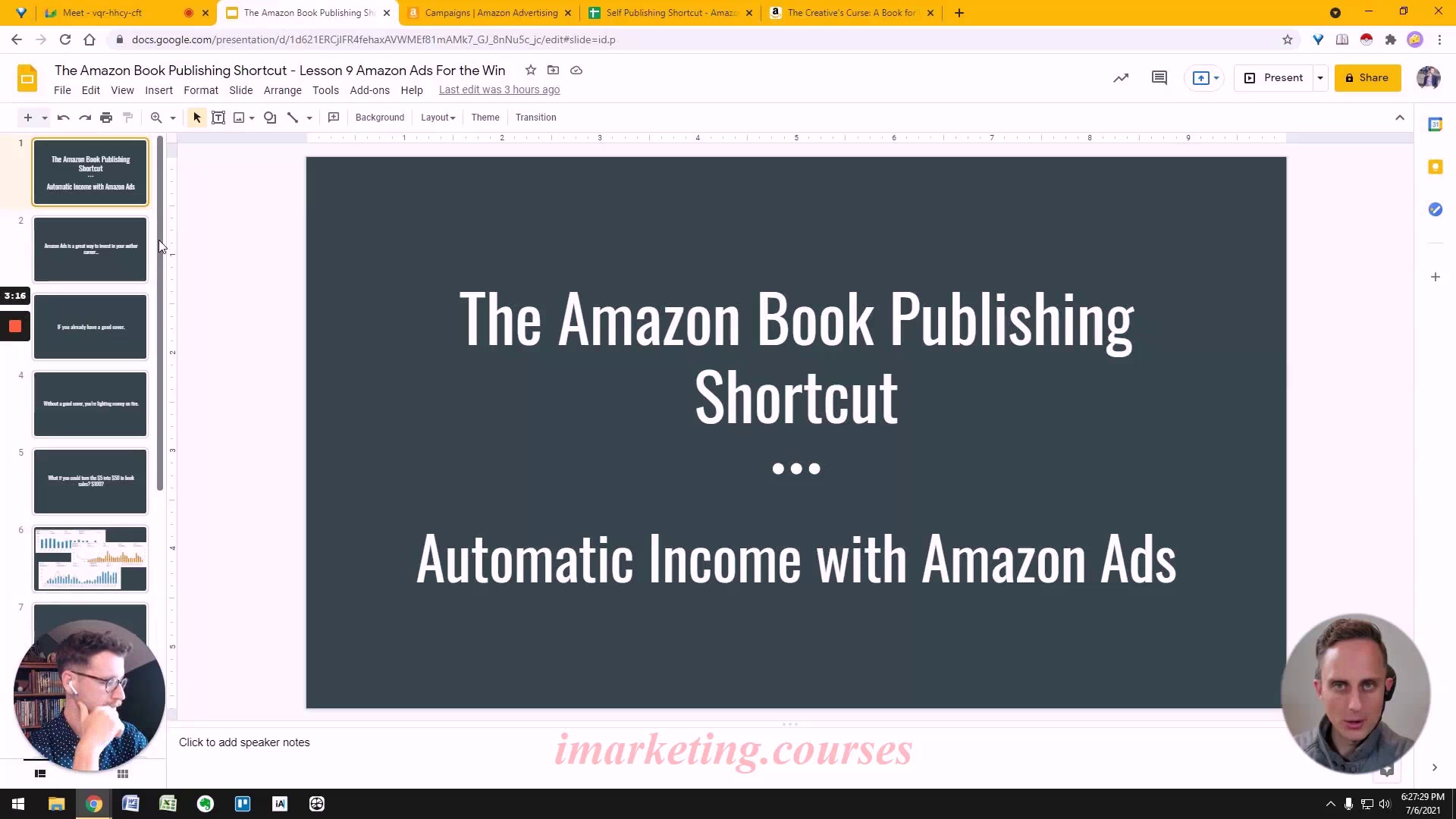
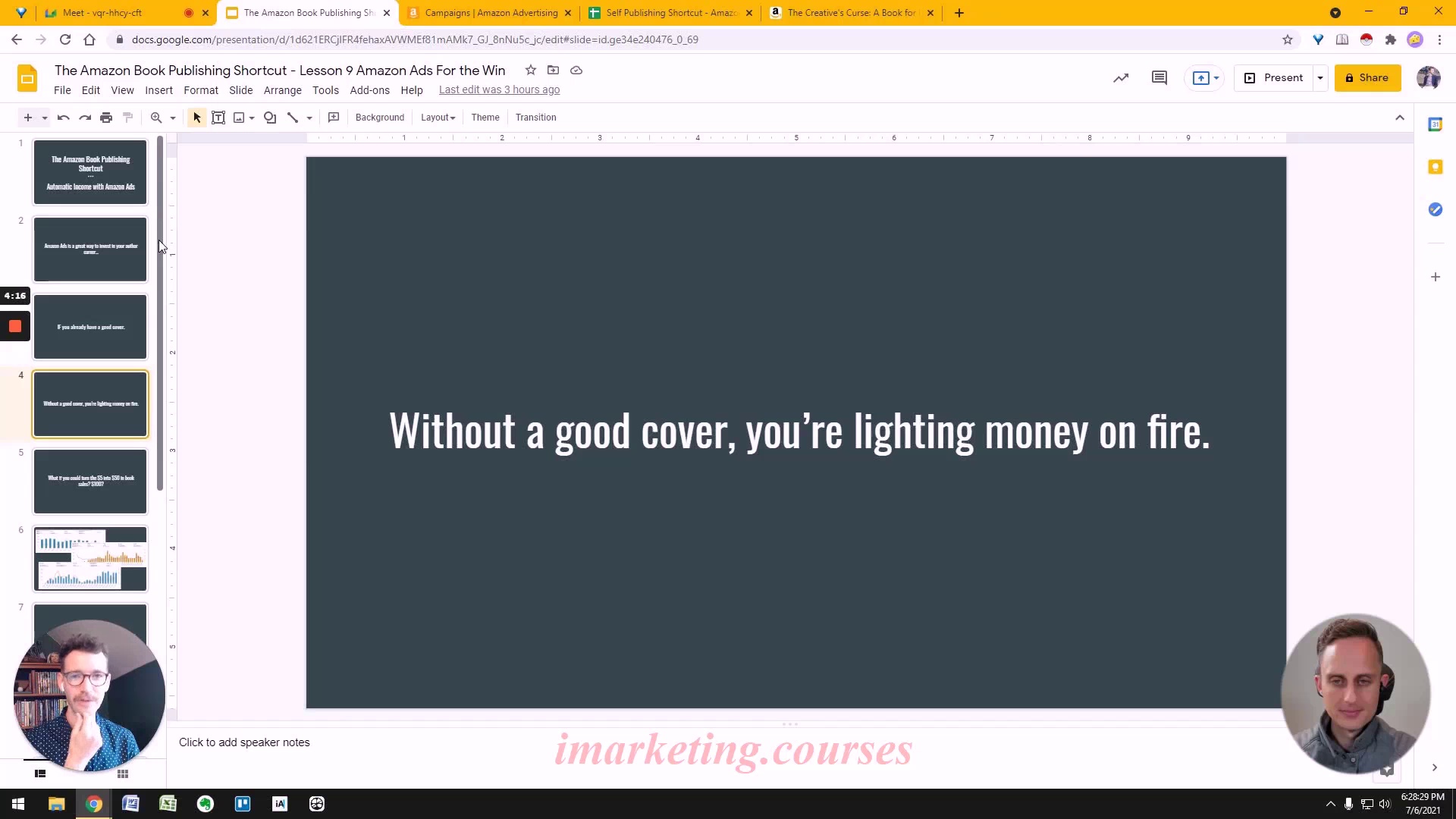
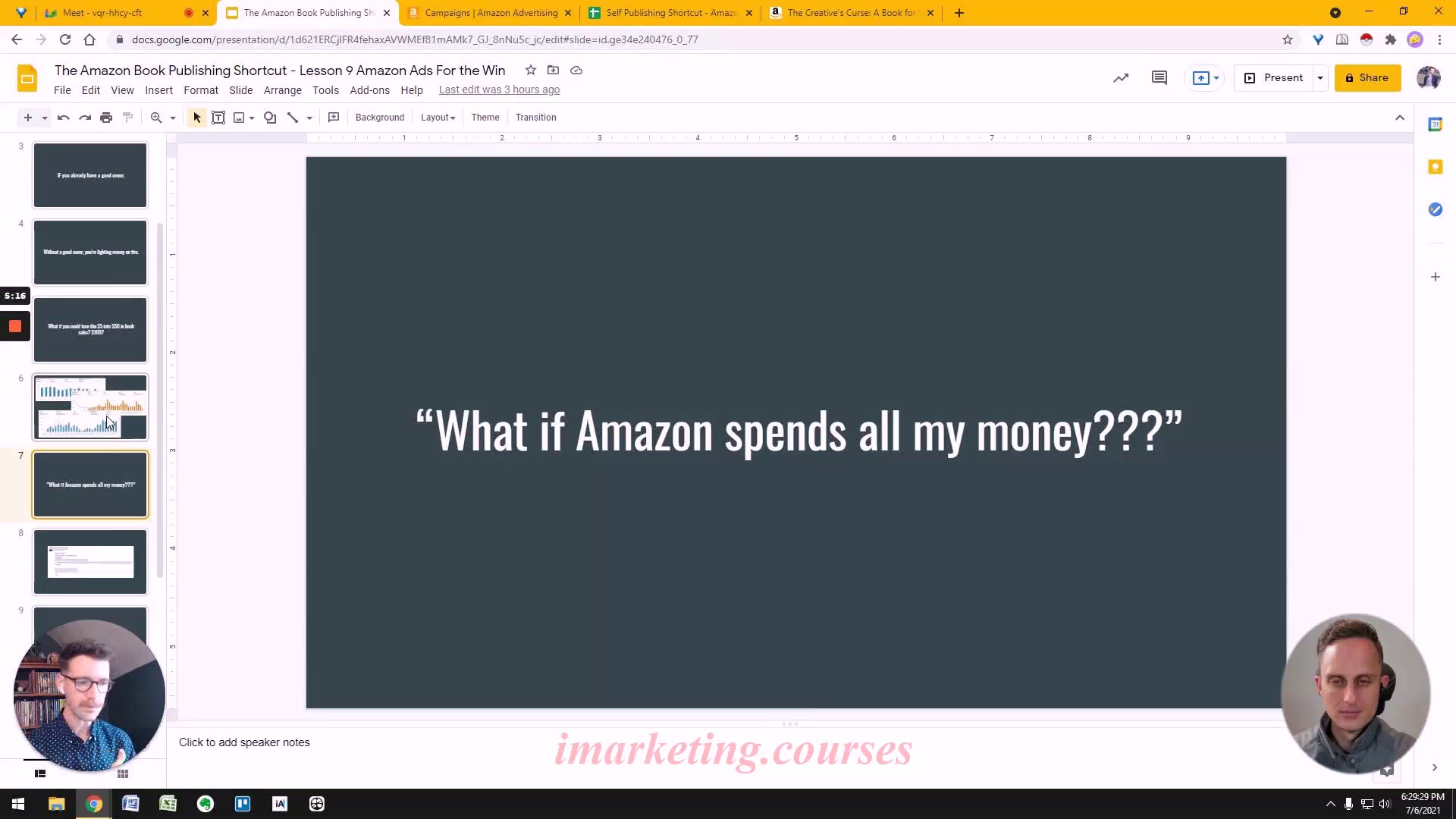
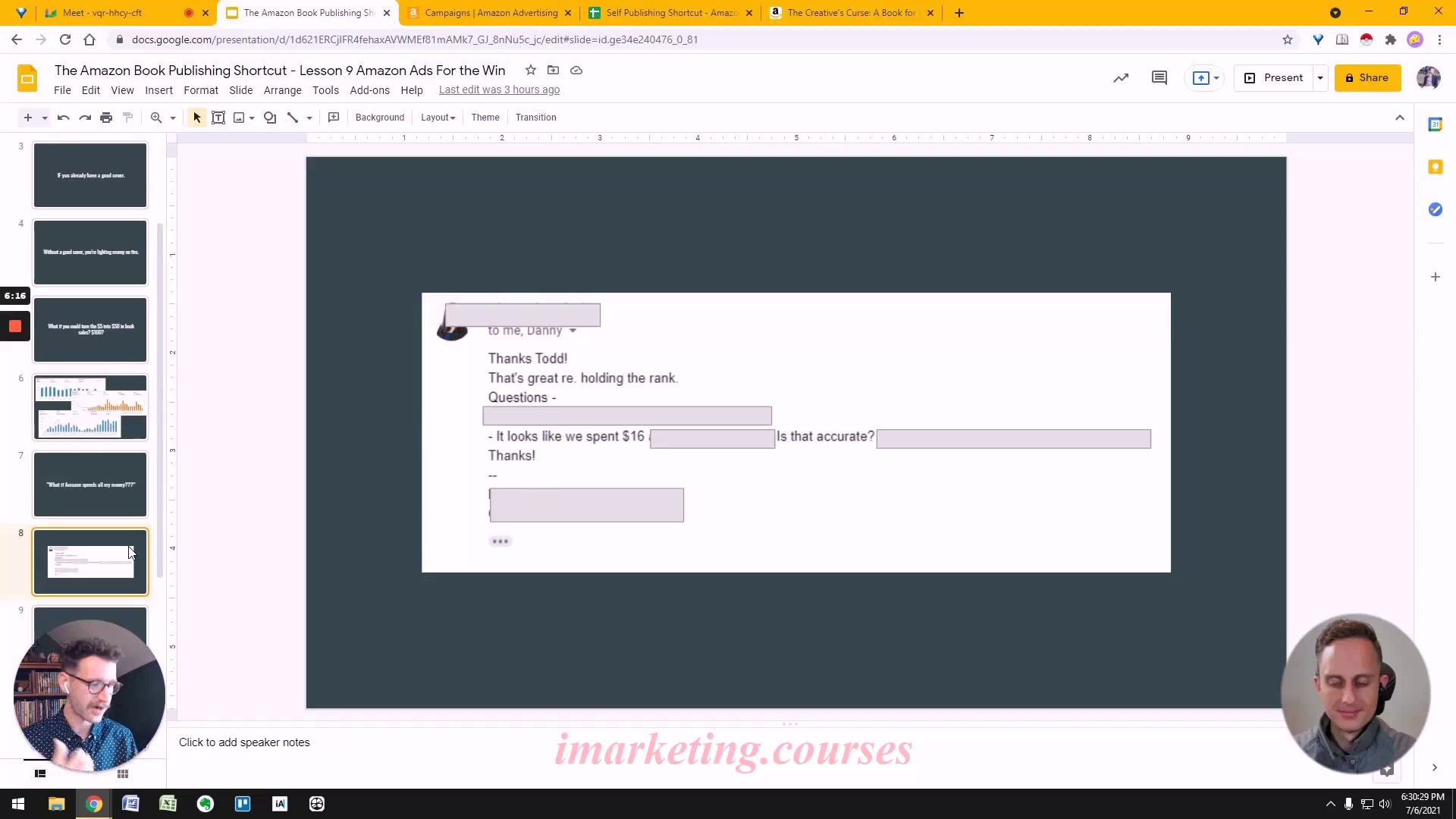
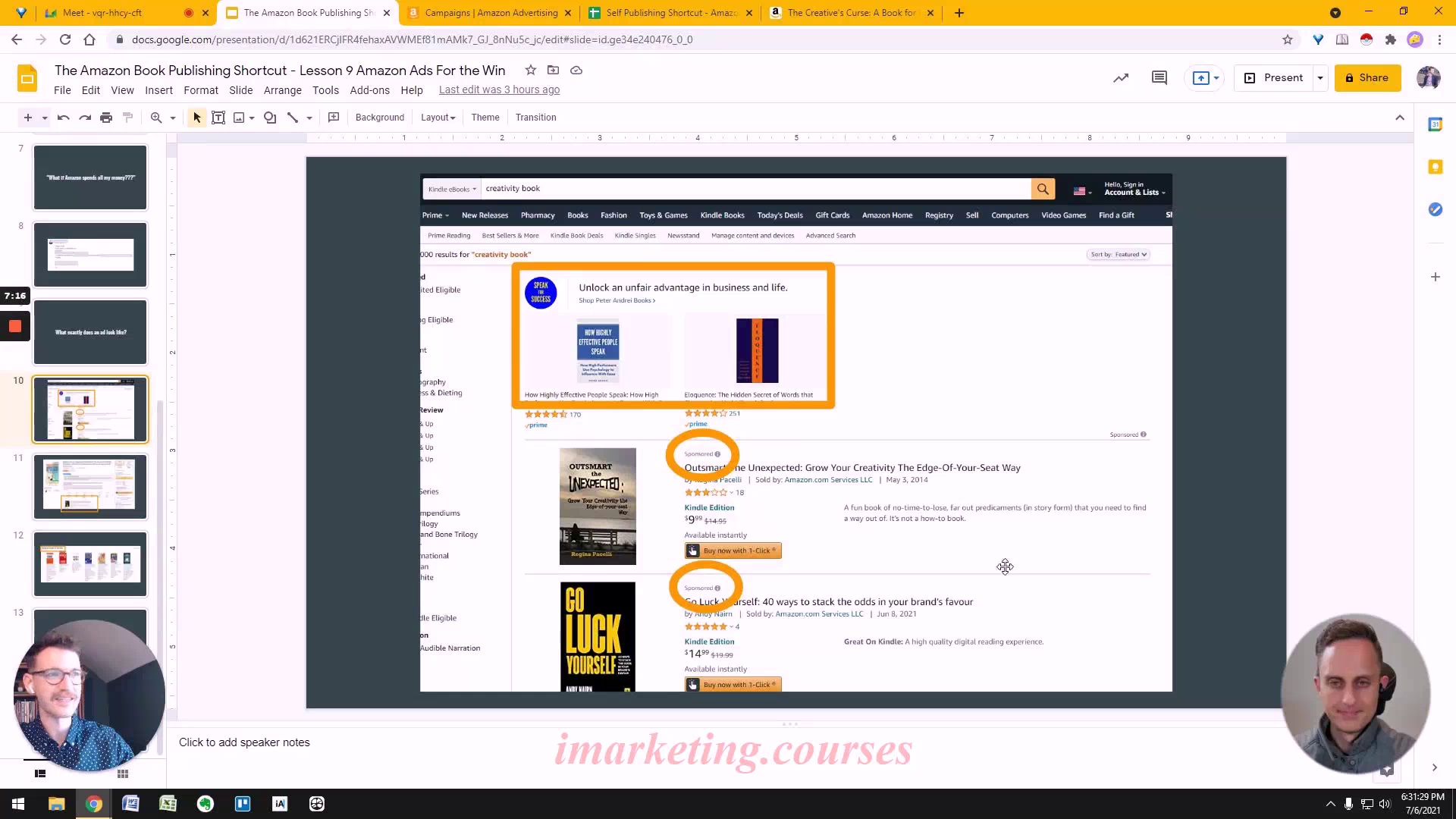
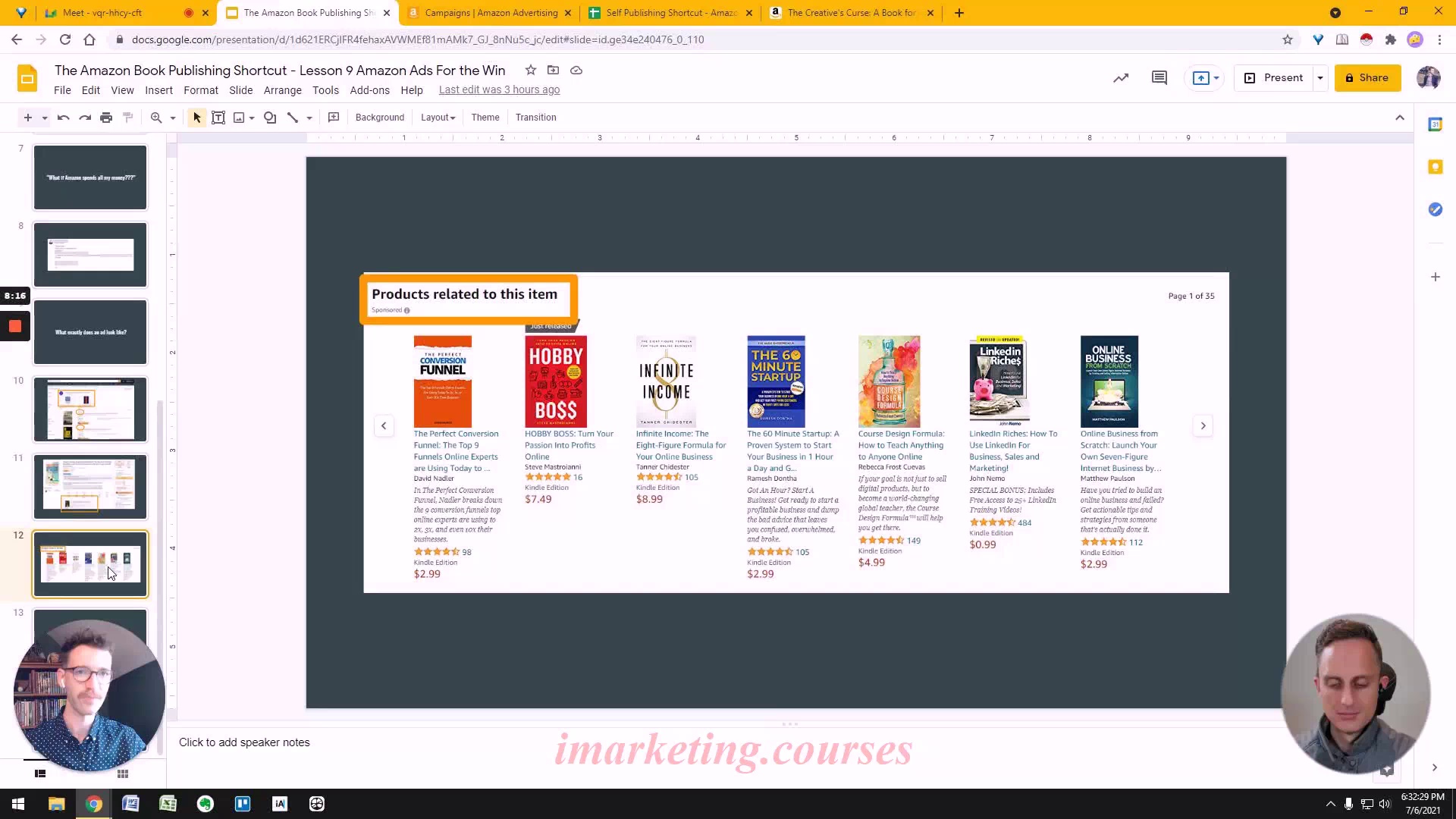
Amazon ads are a great place to invest money because you can turn small amounts like $5 into $50 or $100. The narrator's ad agency typically sees about double the return on ad spend shown in the Amazon dashboard because the dashboard metrics are unreliable.
Having a good book cover is critical before spending money on Amazon ads, otherwise it's like "lighting money on fire." With a good cover and the right bid amounts and targeting, it's actually difficult to spend much money with Amazon ads.
Ads show up in Amazon search results, below product listings, and in "related products." Essentially Amazon runs an auction in real-time when someone searches, and the highest, most relevant bids get the ad spots.
Success with Amazon ads is about finding better targets so your ads are highly relevant to searches, not just throwing money at them. The narrator will show how to set up an ad quickly without much keyword research or set-up time needed.
.Tim-D-AmazonBookPubl Misc 1 to 2 - Part 4





































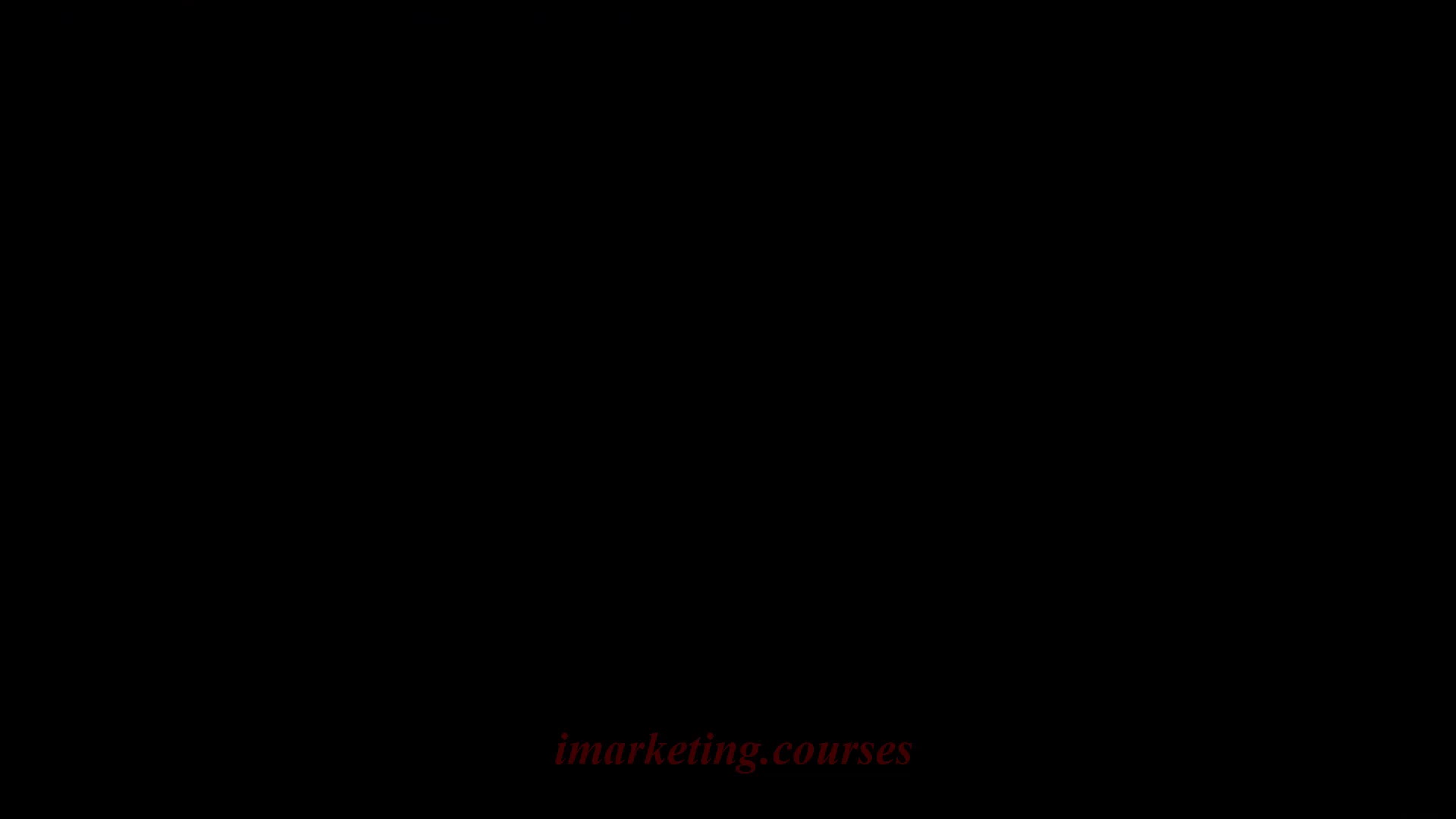
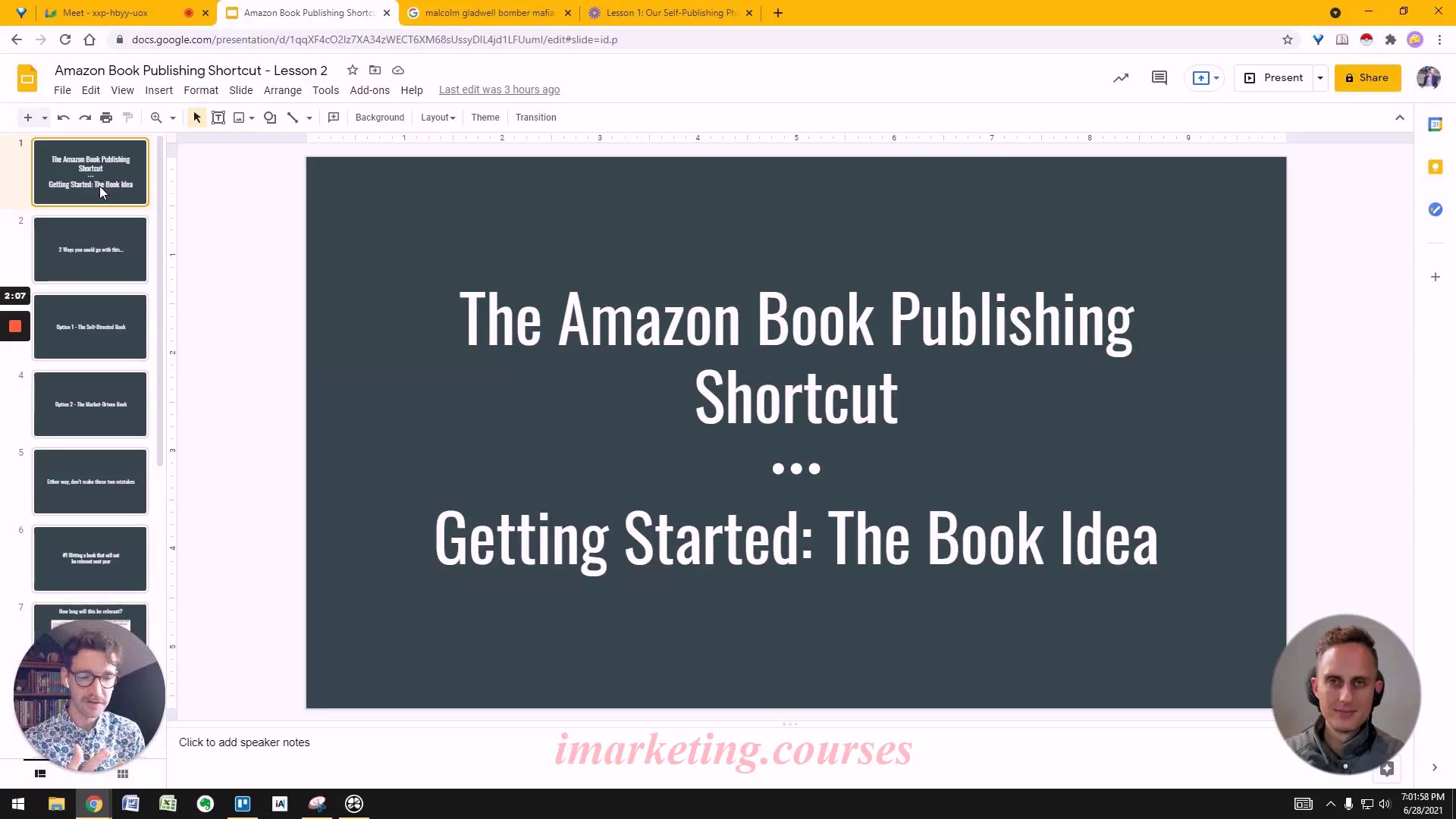
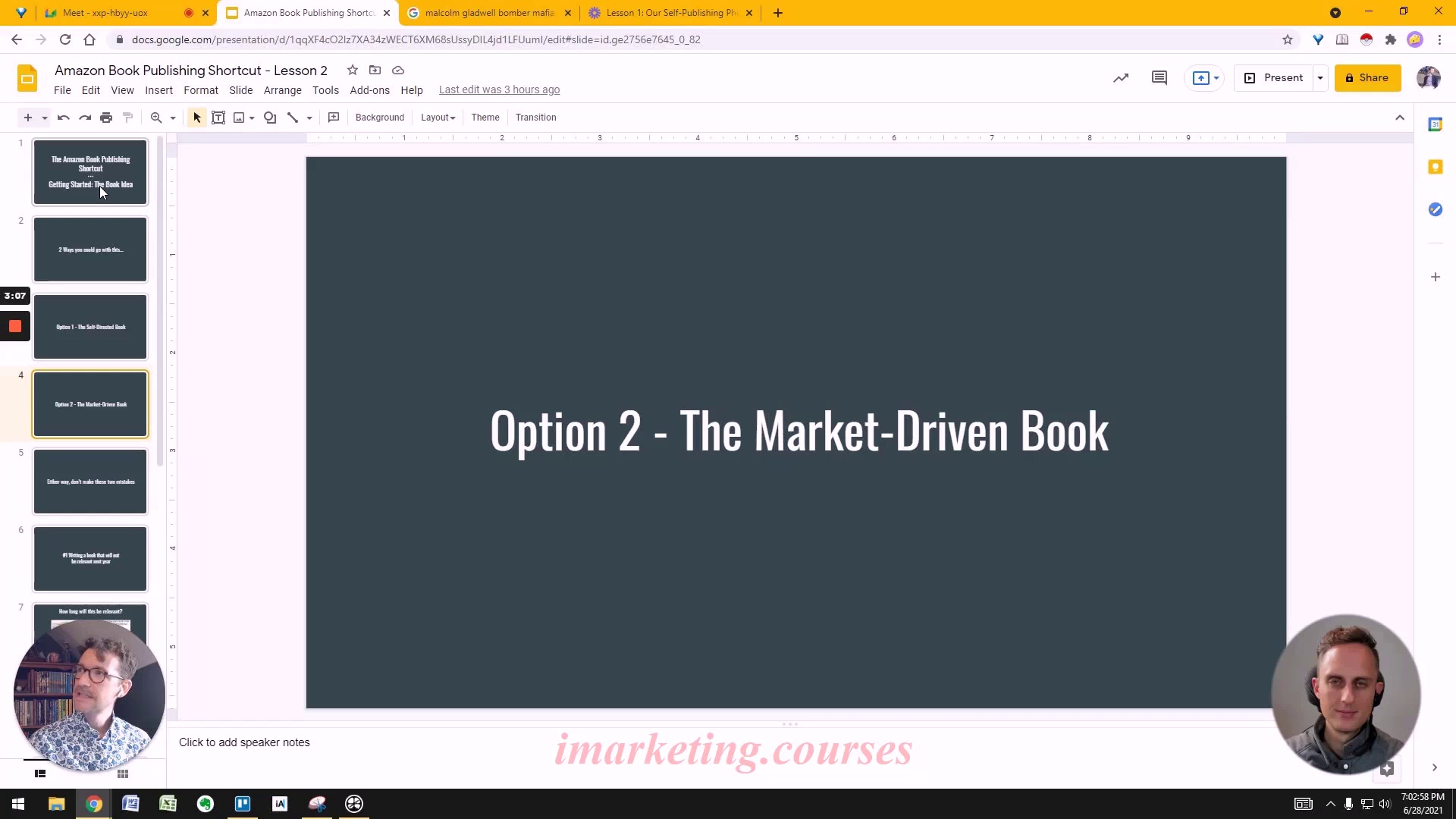
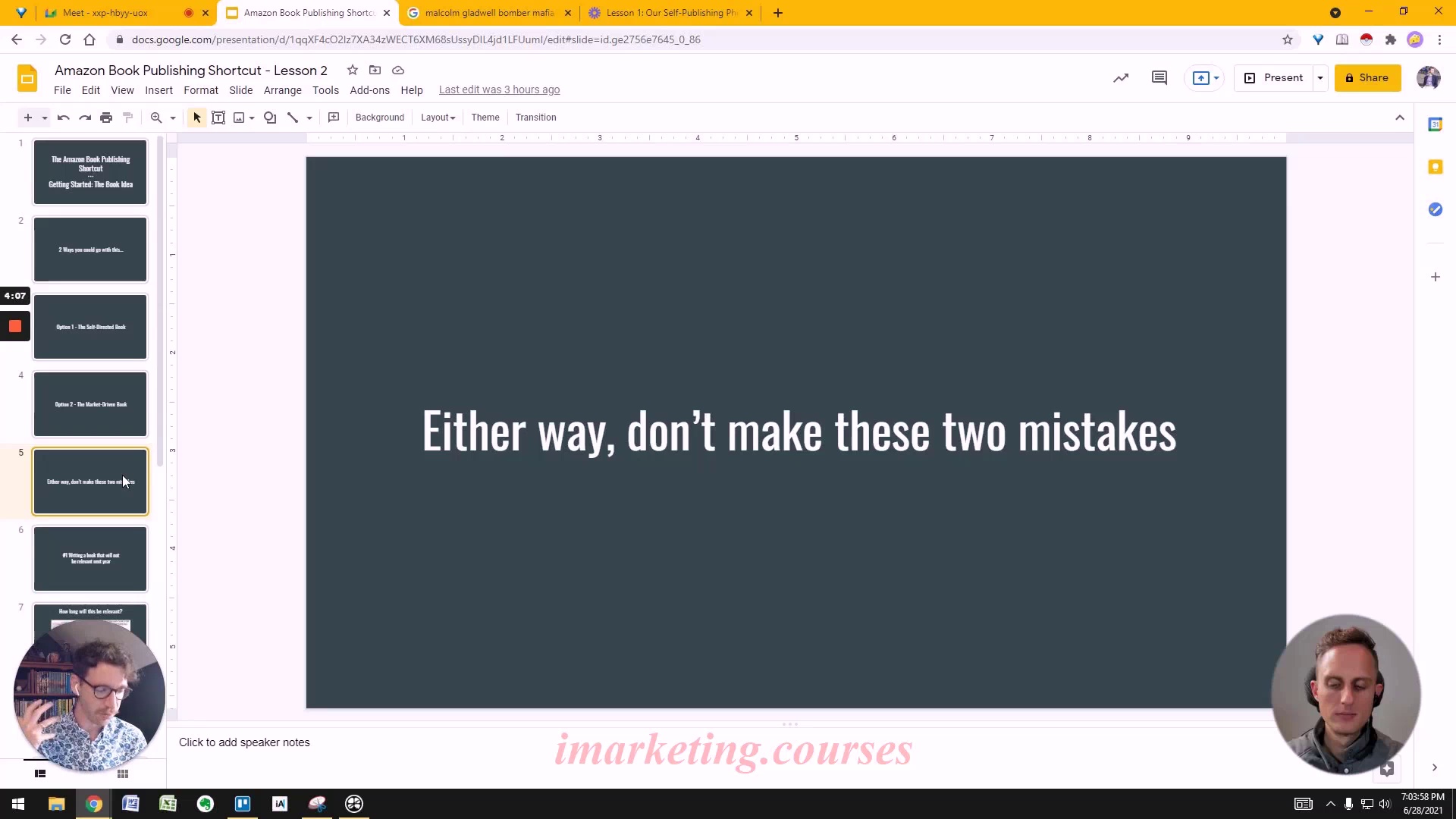
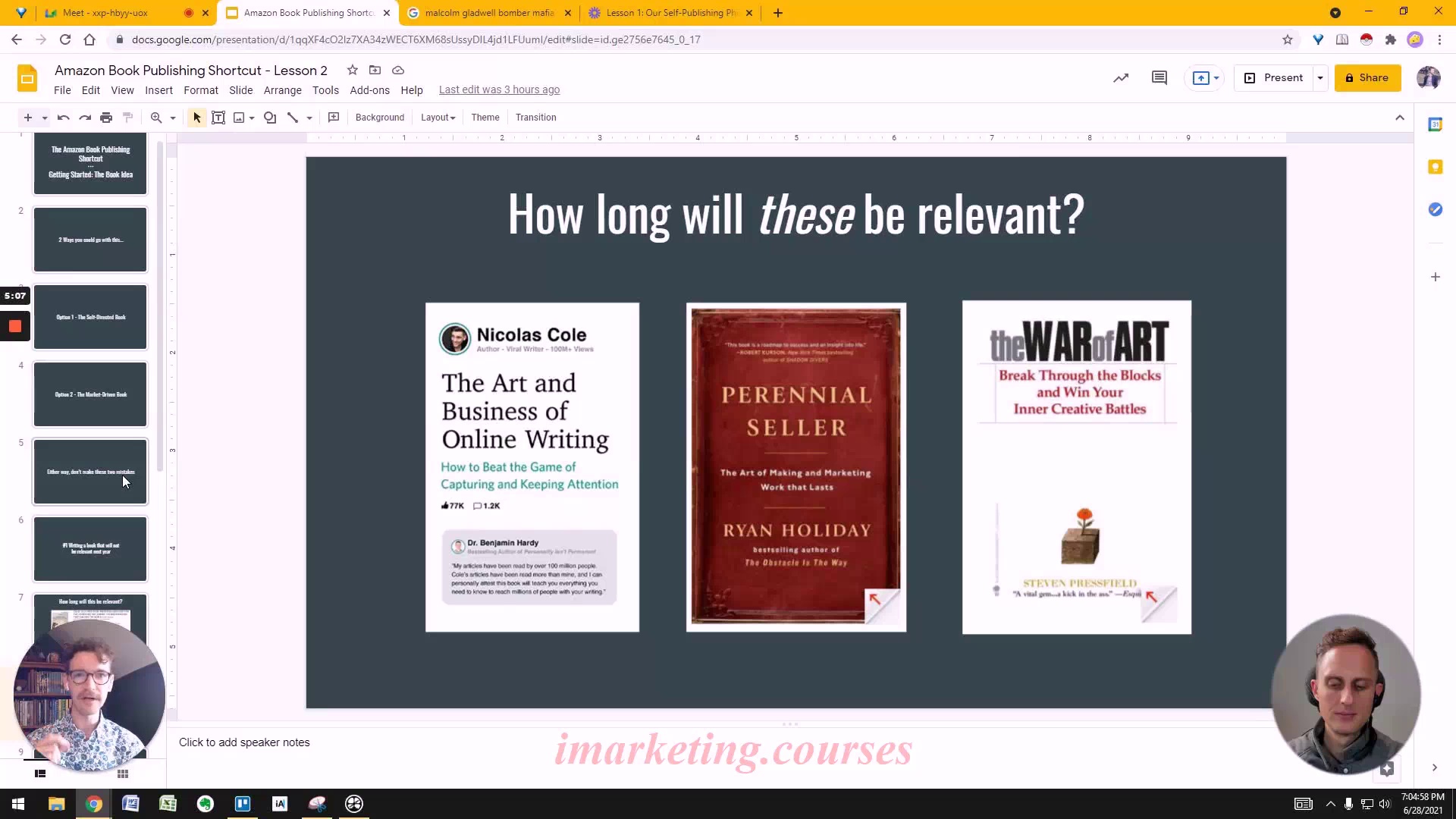
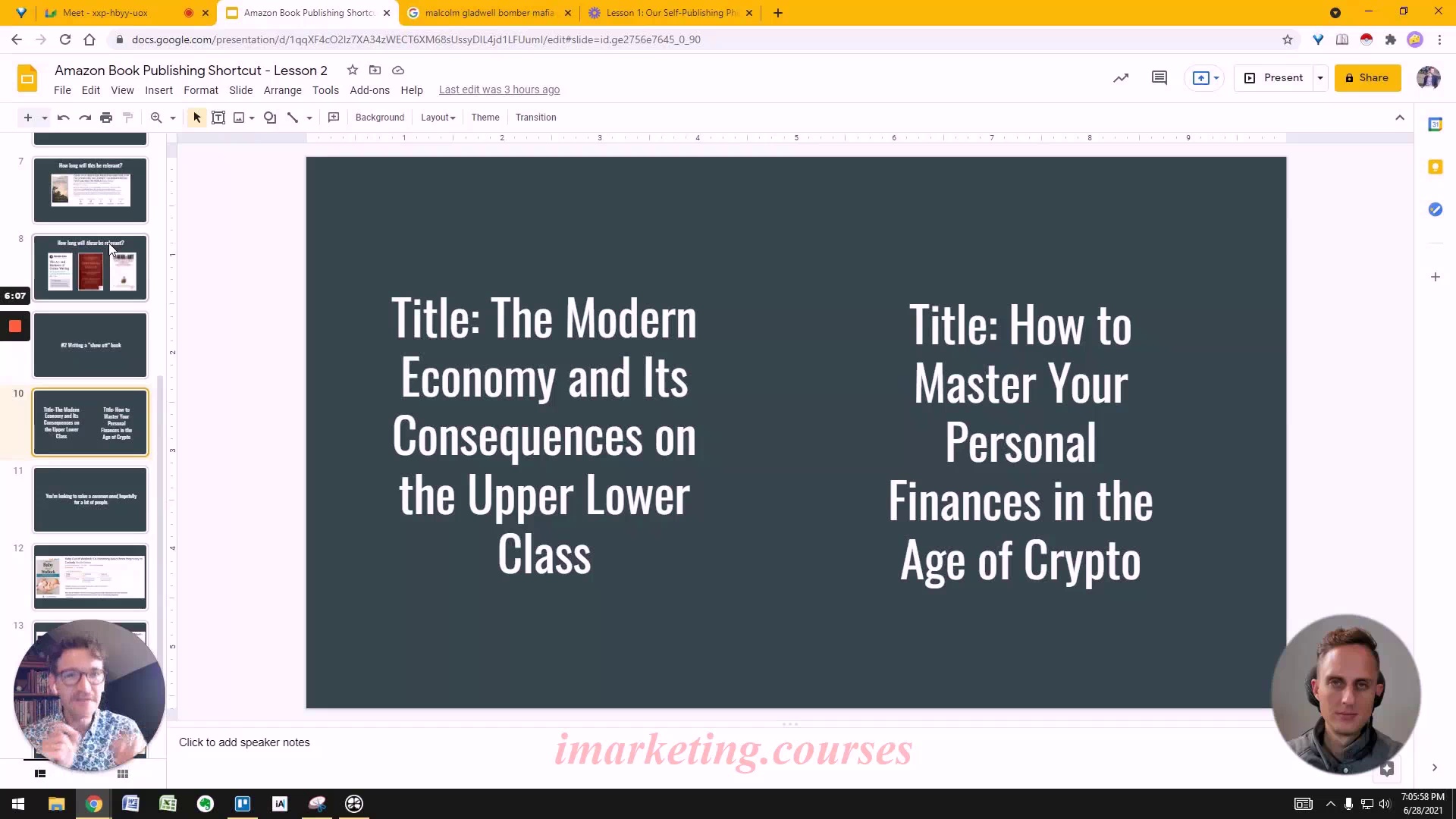
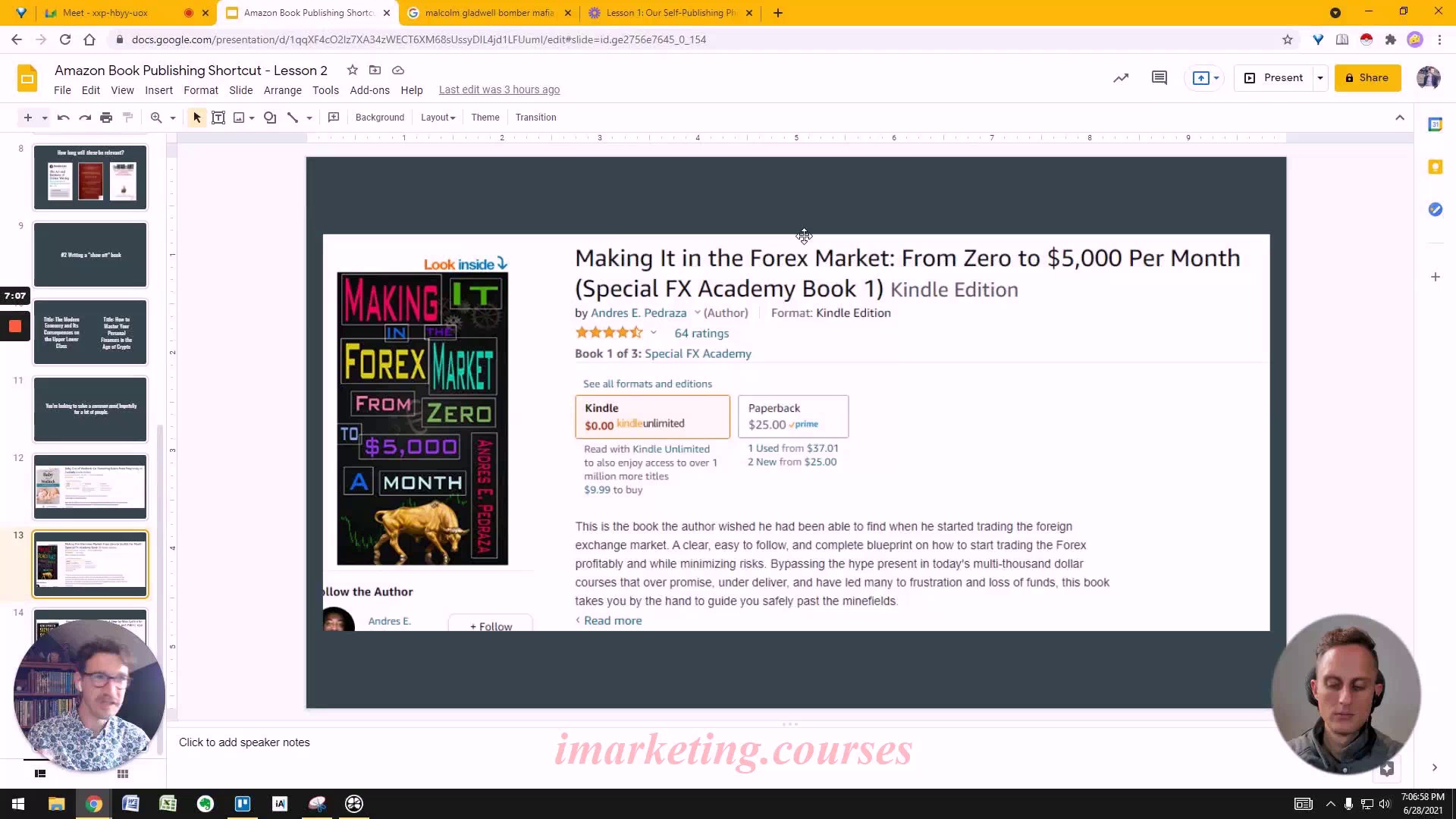
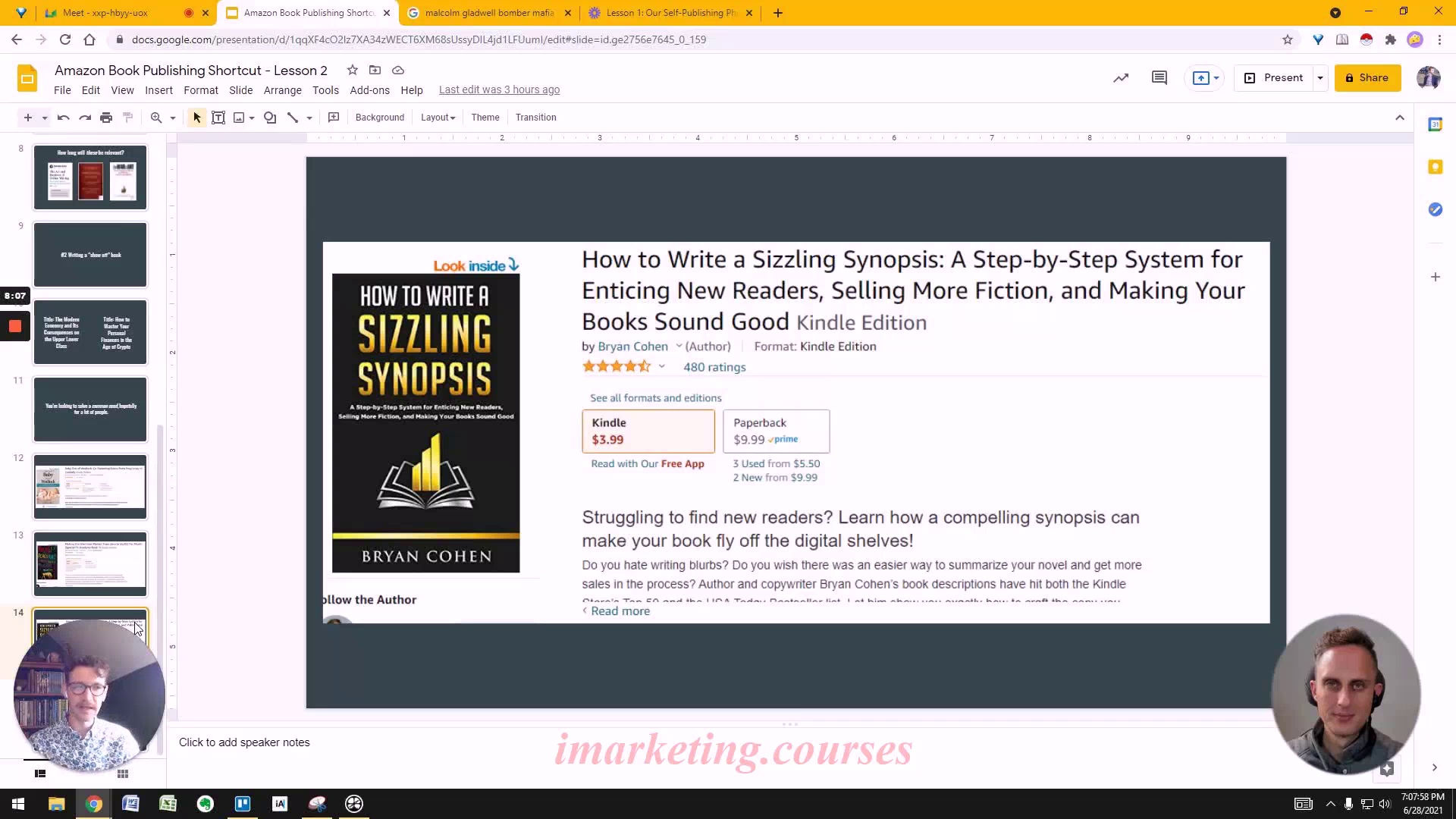
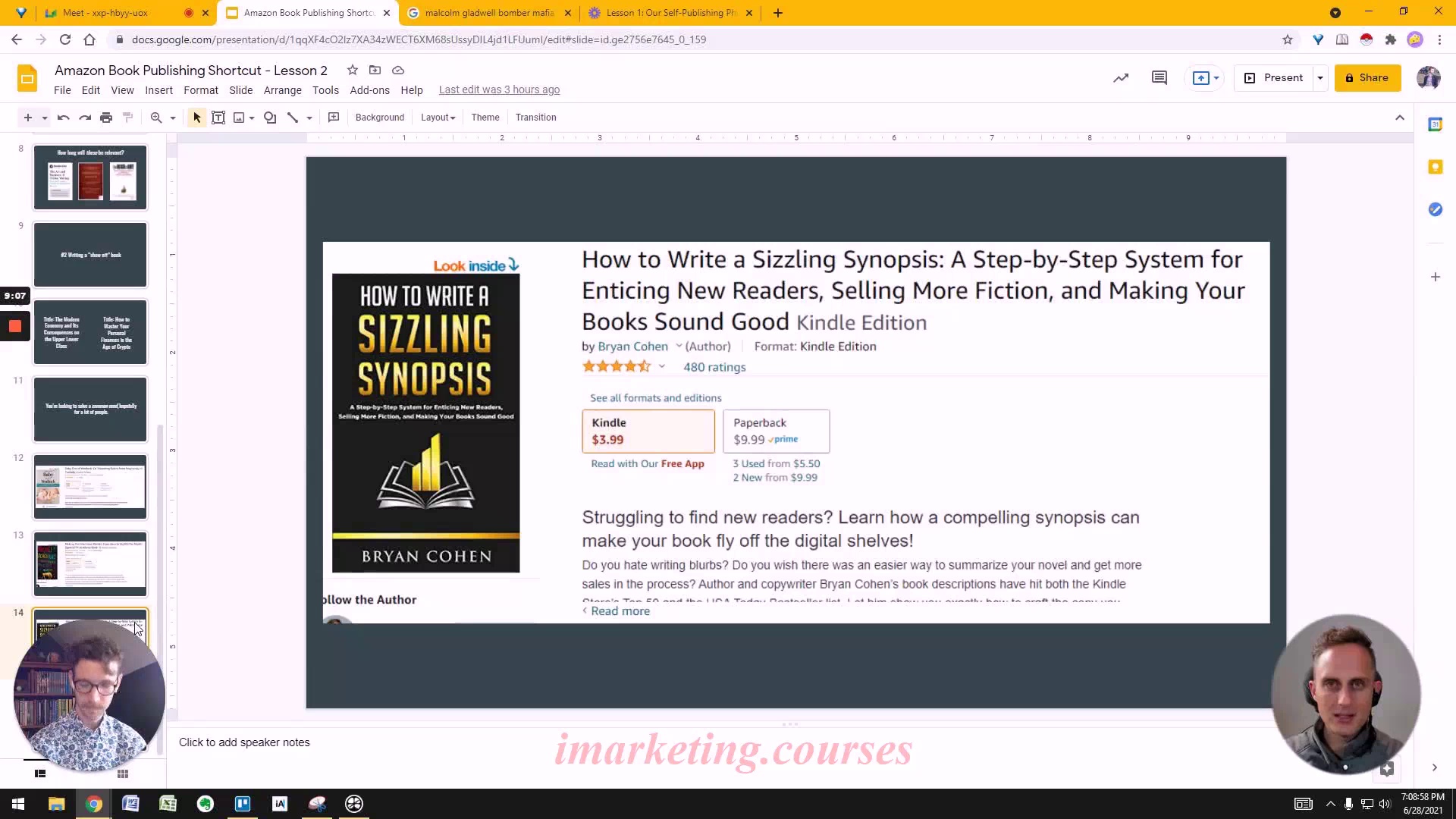
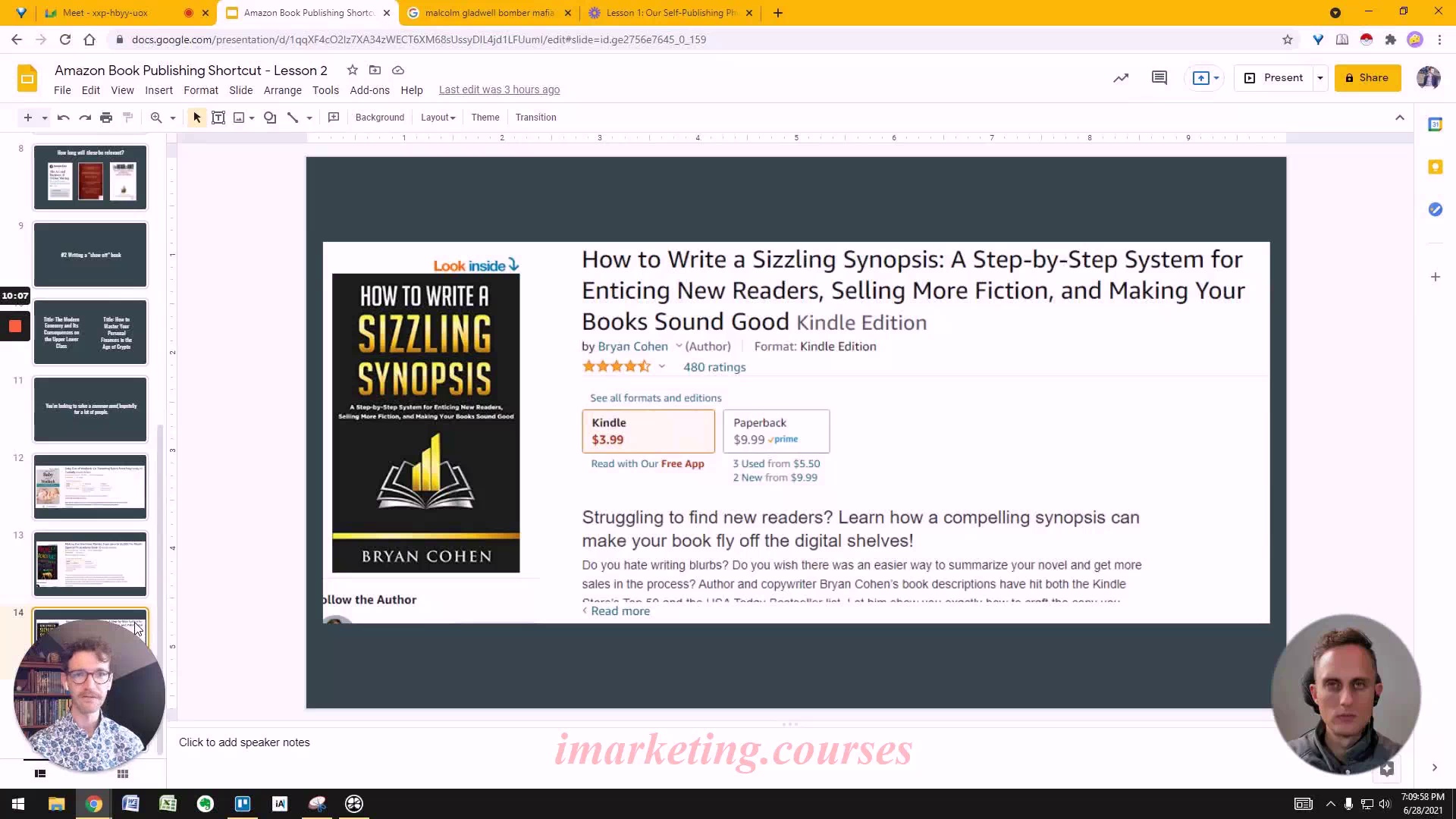
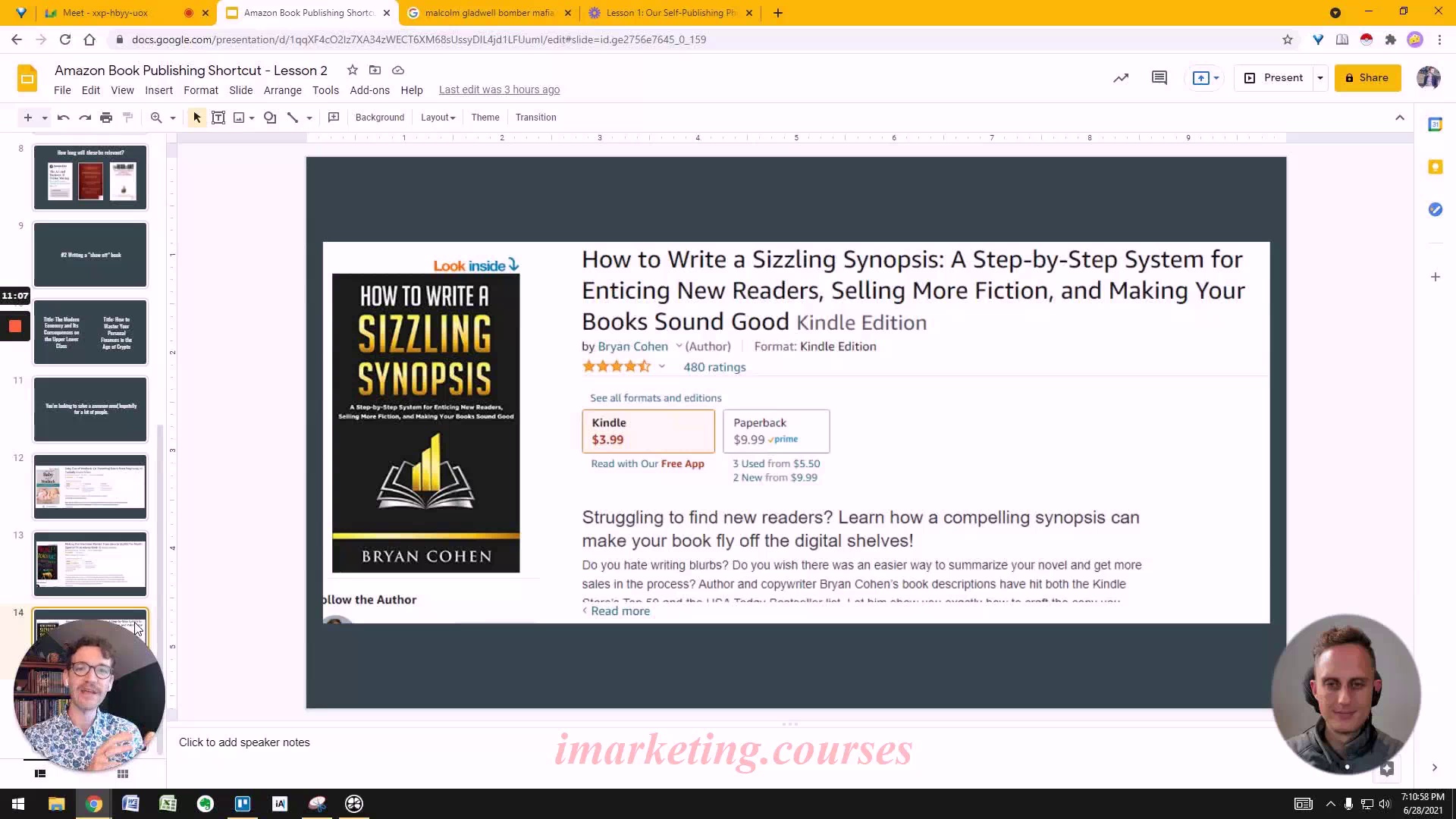
The narrator welcomes viewers to a lesson on validating book ideas using Amazon data. The goal is to create books from existing work to gain momentum. There are two options: 1) write on a topic you're passionate about and use Amazon for title ideas, or 2) start with Amazon data to identify selling topics first.
The narrator advises avoiding two mistakes: 1) writing on short-term trends, and 2) writing to show off instead of solve reader problems. Good book ideas solve common needs in niche markets like forex trading, writing killer book blurbs, or poetry for people going through rough times.
The narrator notes not to worry if your idea already has competing books. This indicates a hot market. You can differentiate by reading negative reviews of other books. The narrator also mentions adding low-content books like journals to complement a niche.
The narrator's co-host Tim shares an example of wanting to write a self-improvement book but after analyzing data, realizing readers want personal finance books from him. Tim advises focusing on helping the audience versus showing off credentials. He agrees niche books can perform well when tied to an existing audience.
Next, the narrator will demonstrate researching book ideas on Amazon.
.Tim-D-AmazonBookPubl Misc 1 to 2 - Part 5
















































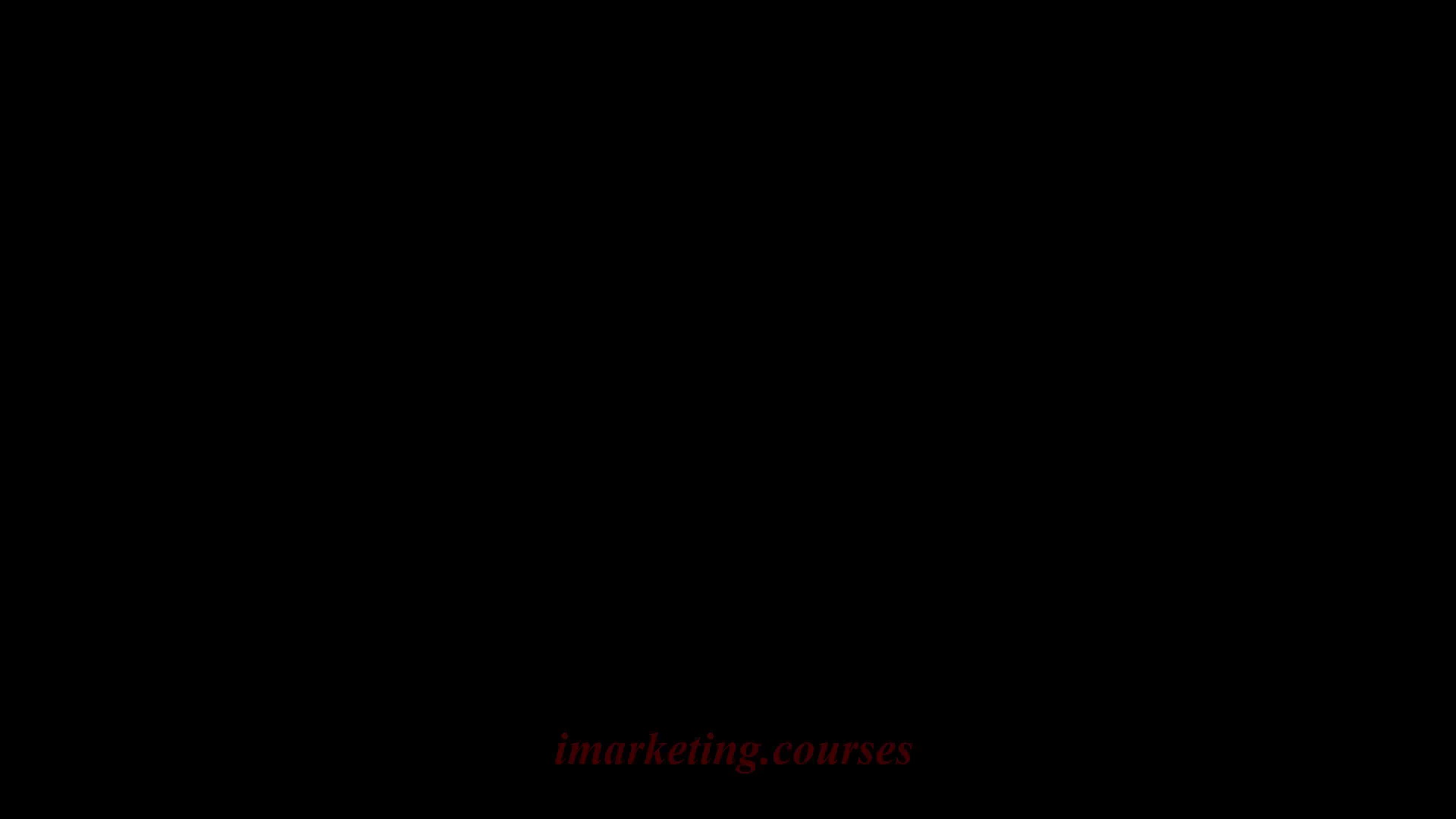
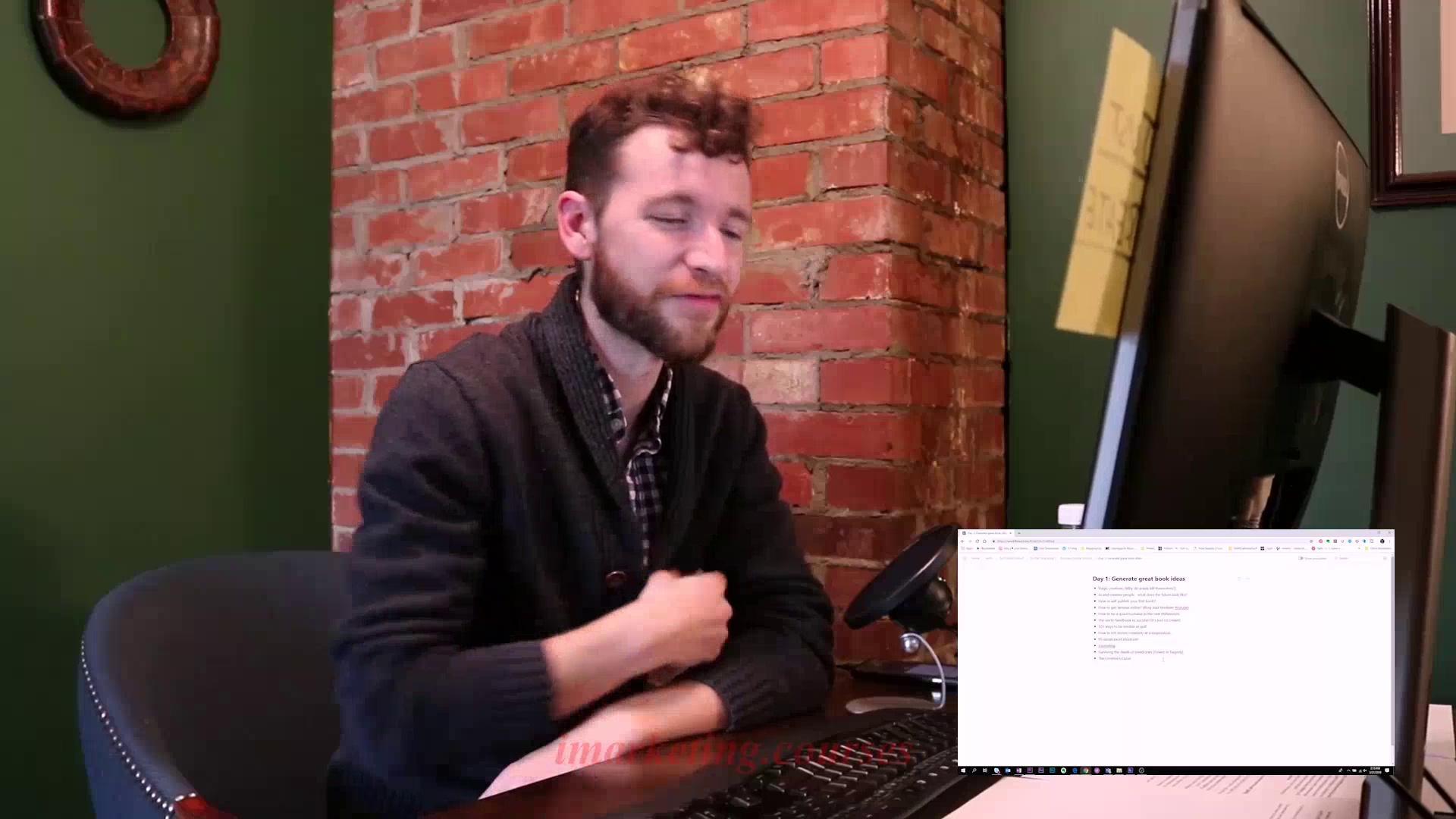
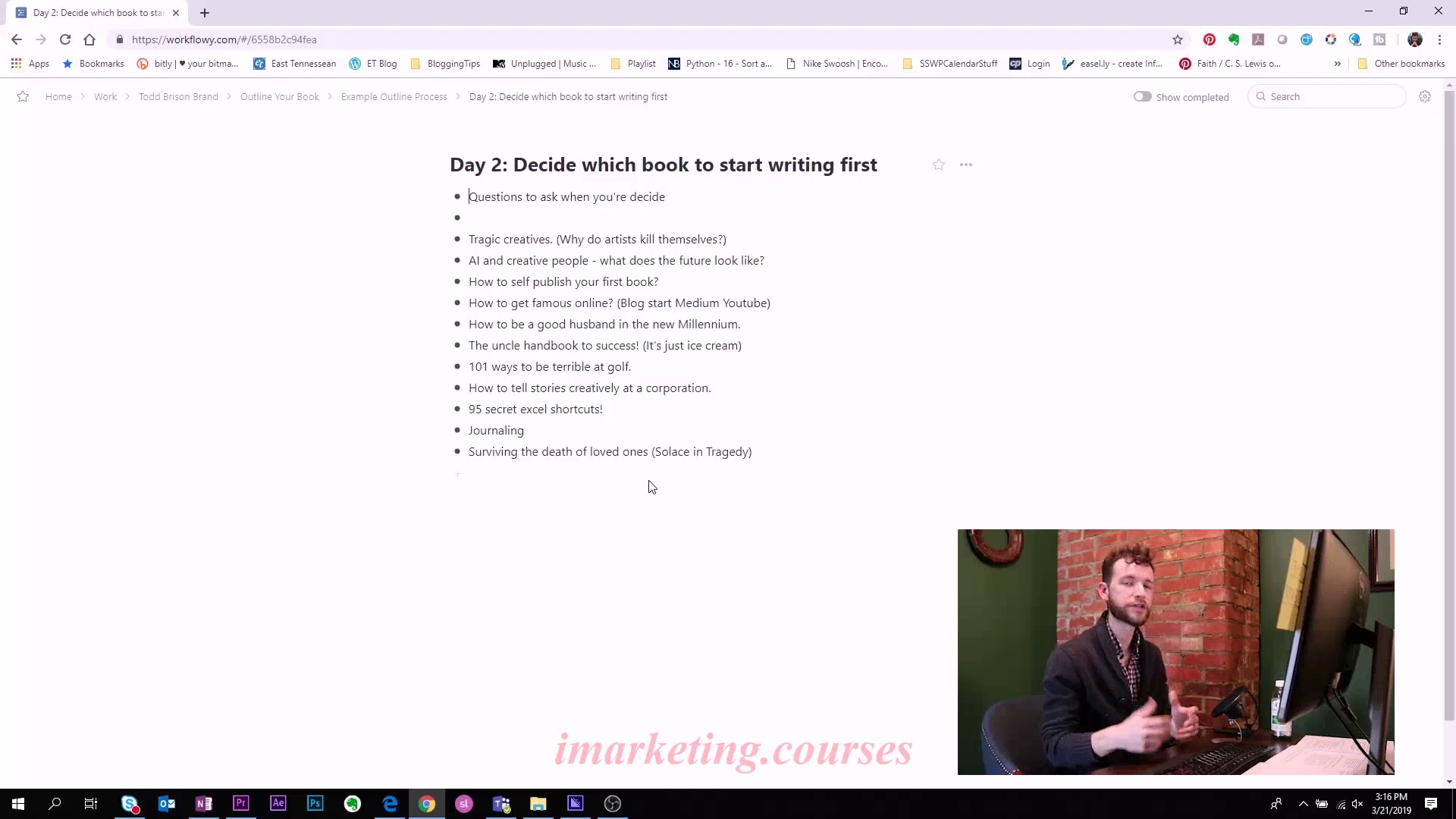
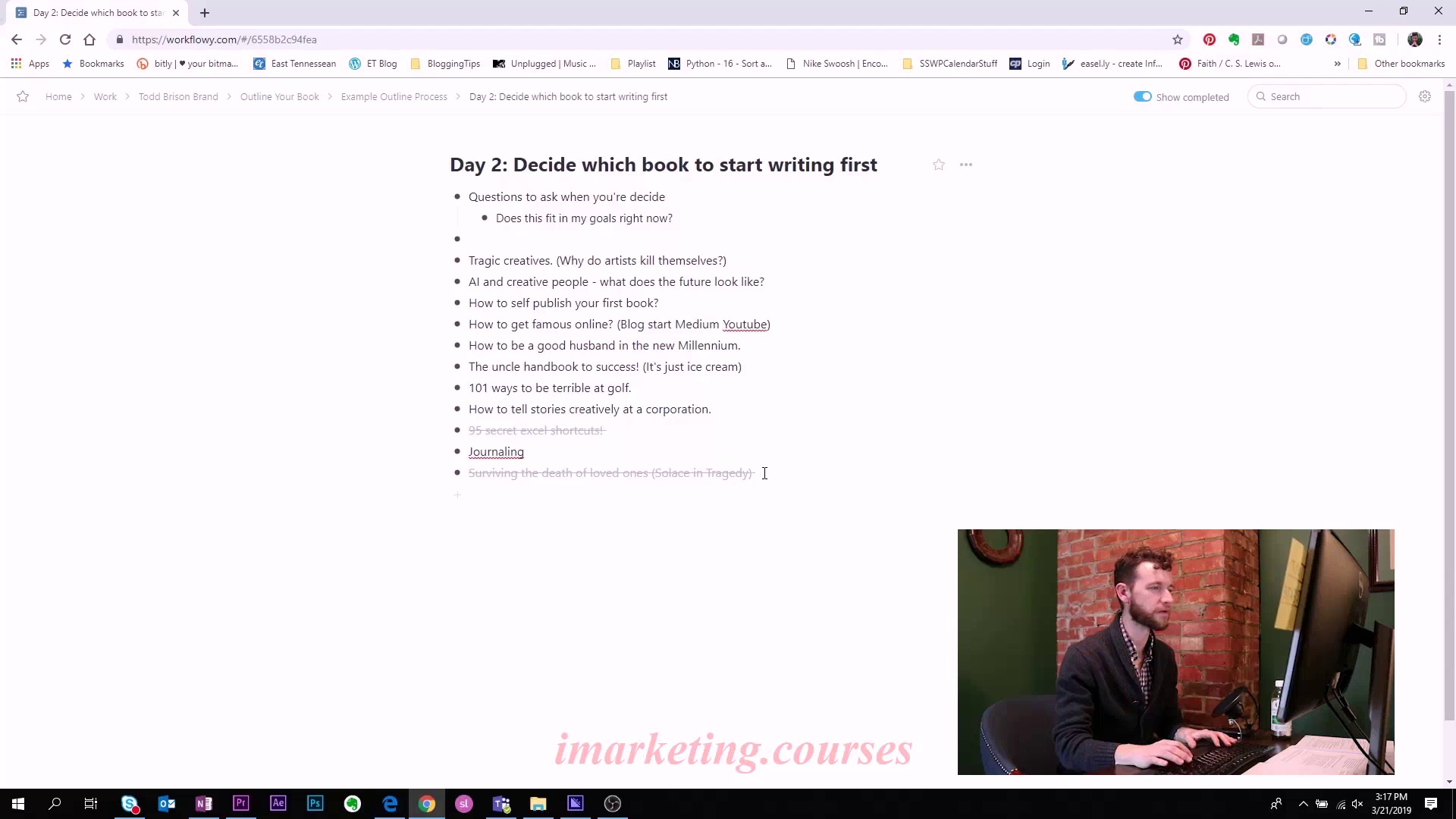
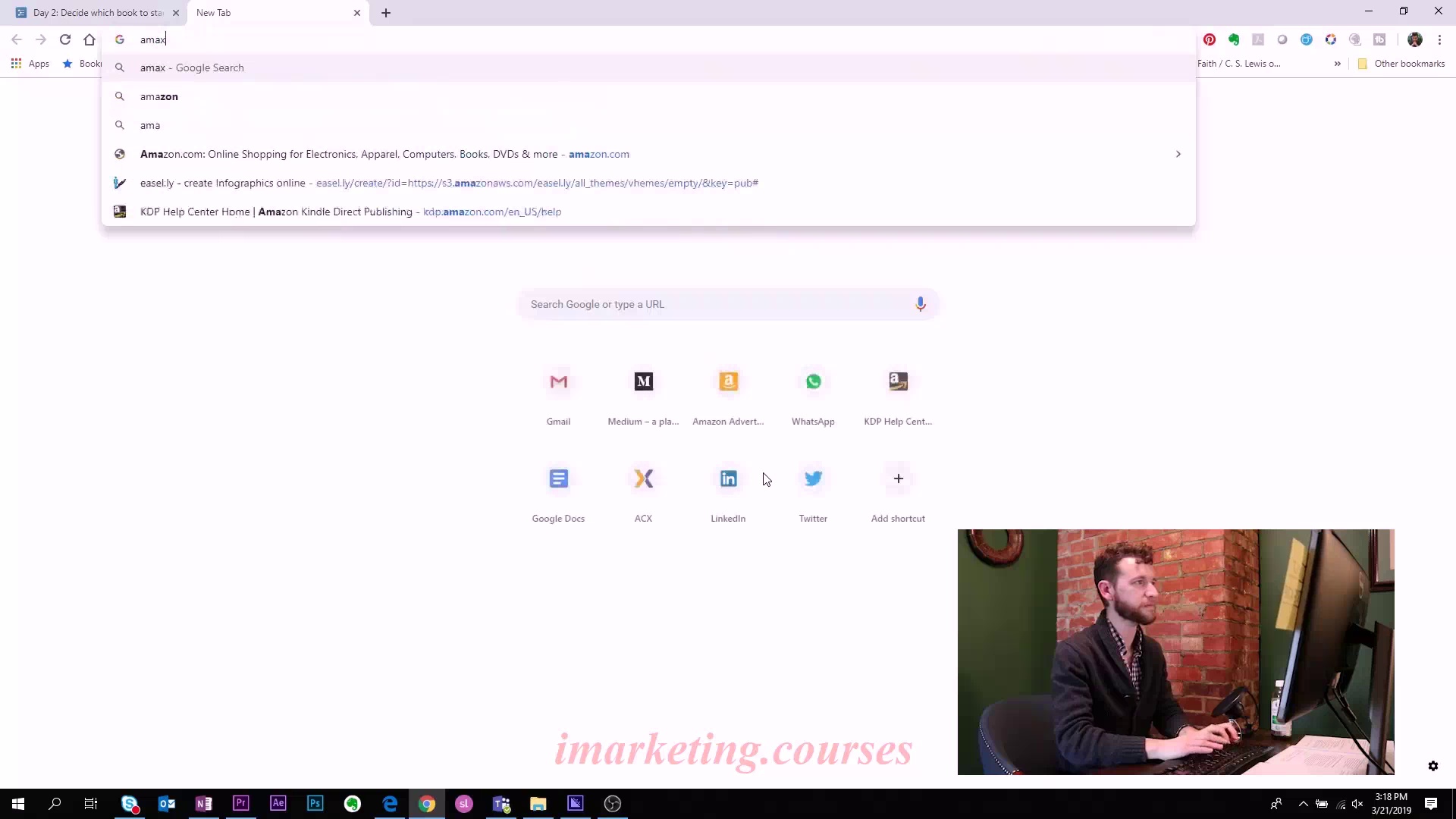
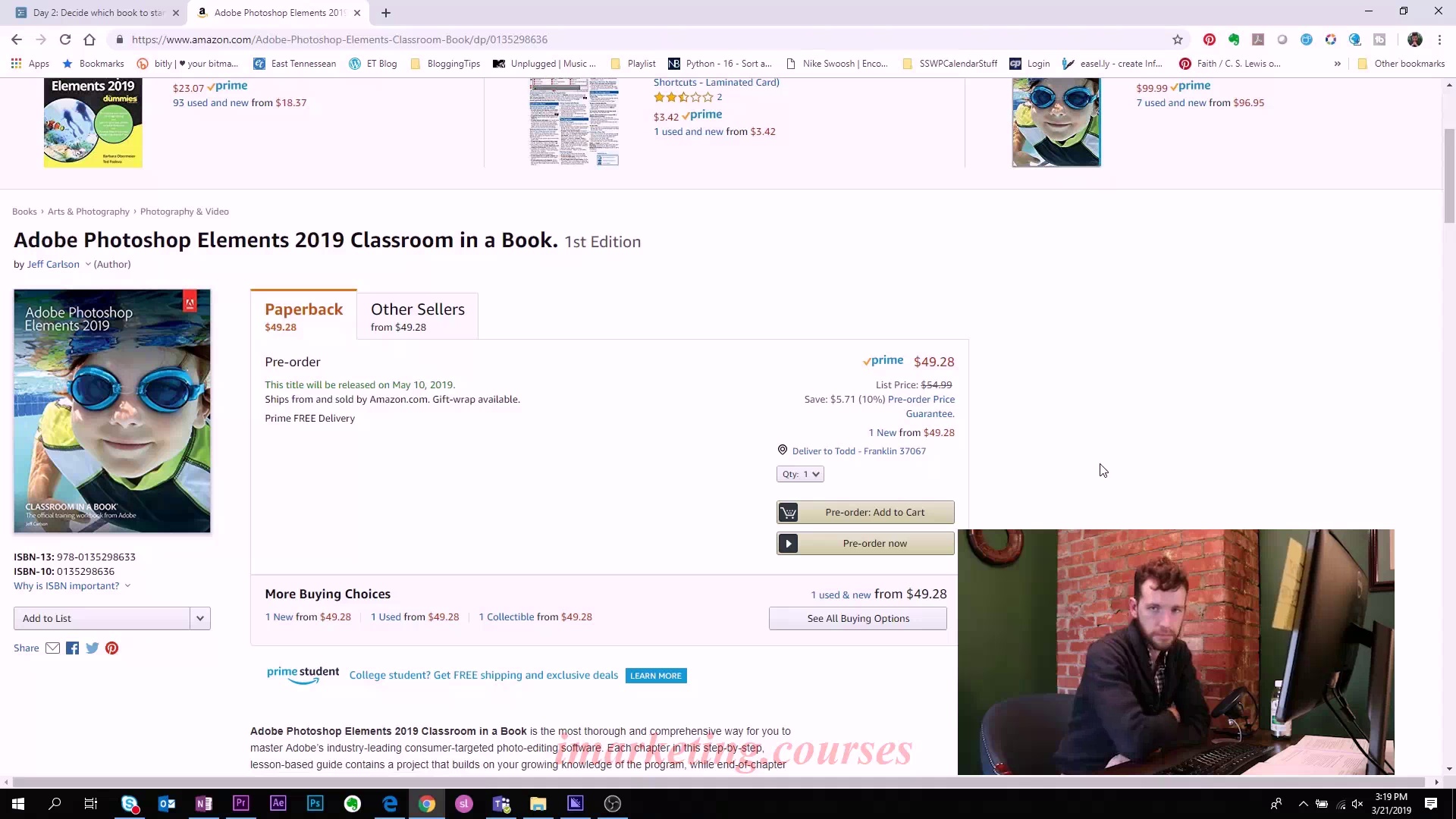
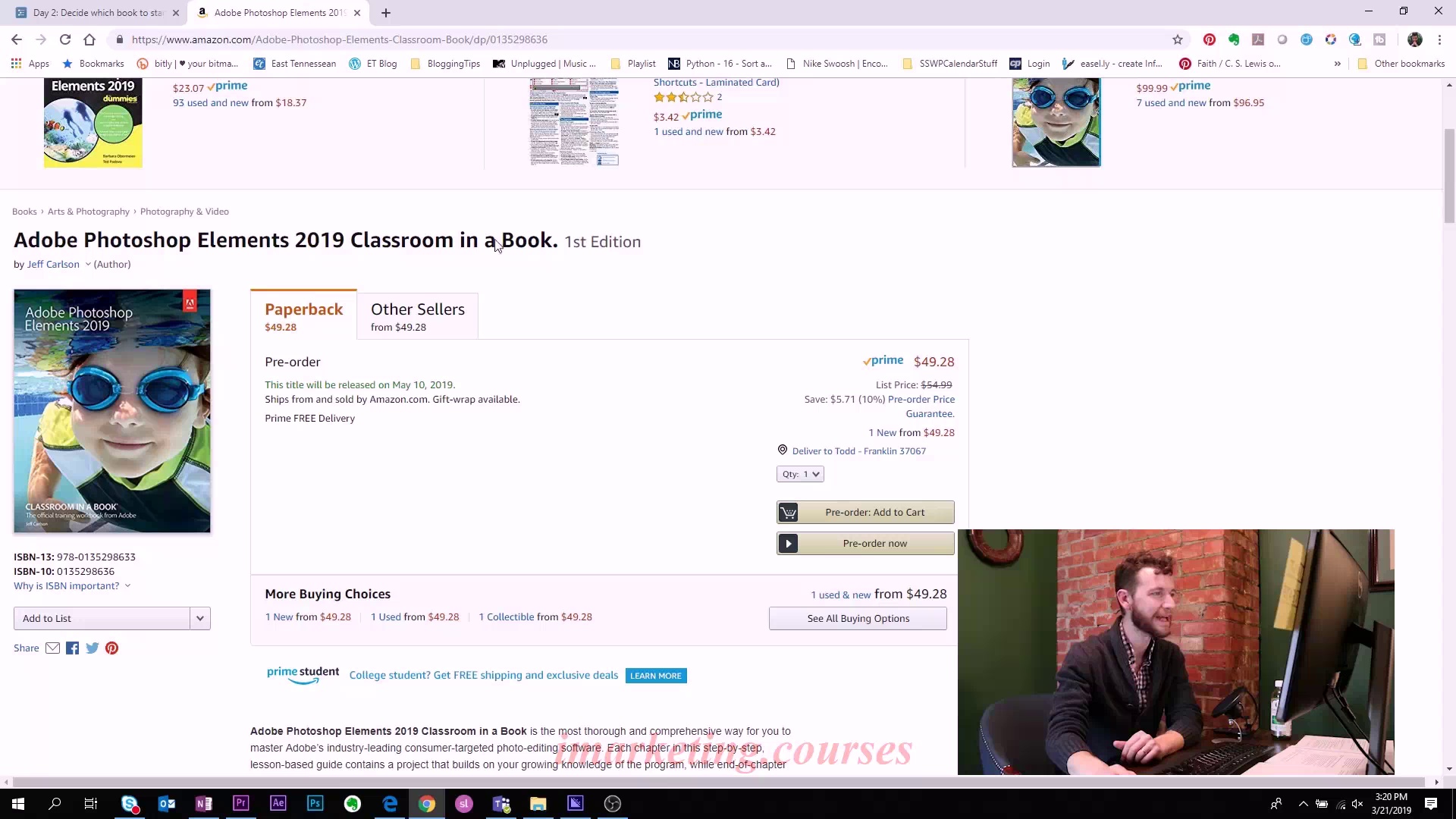
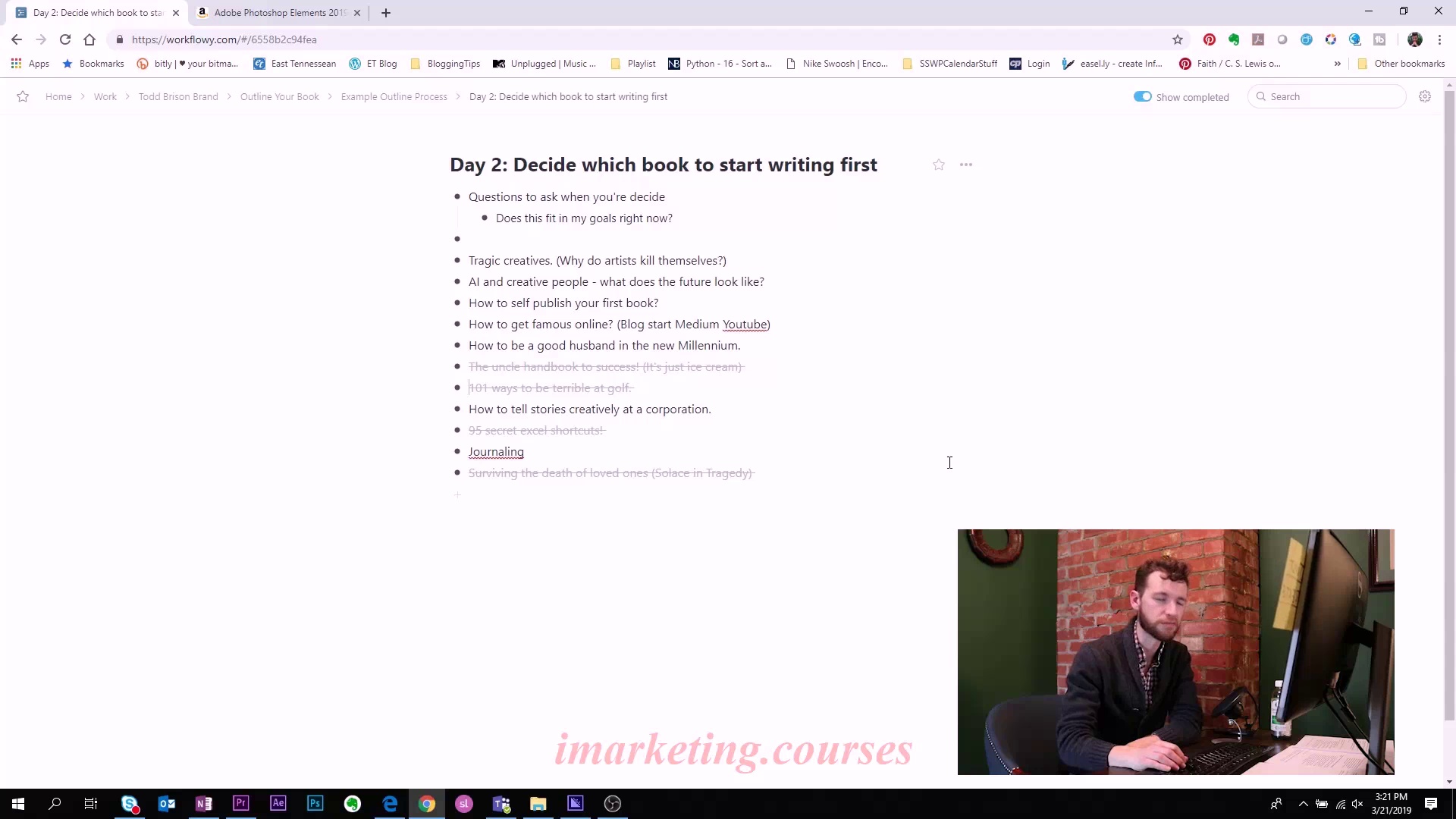
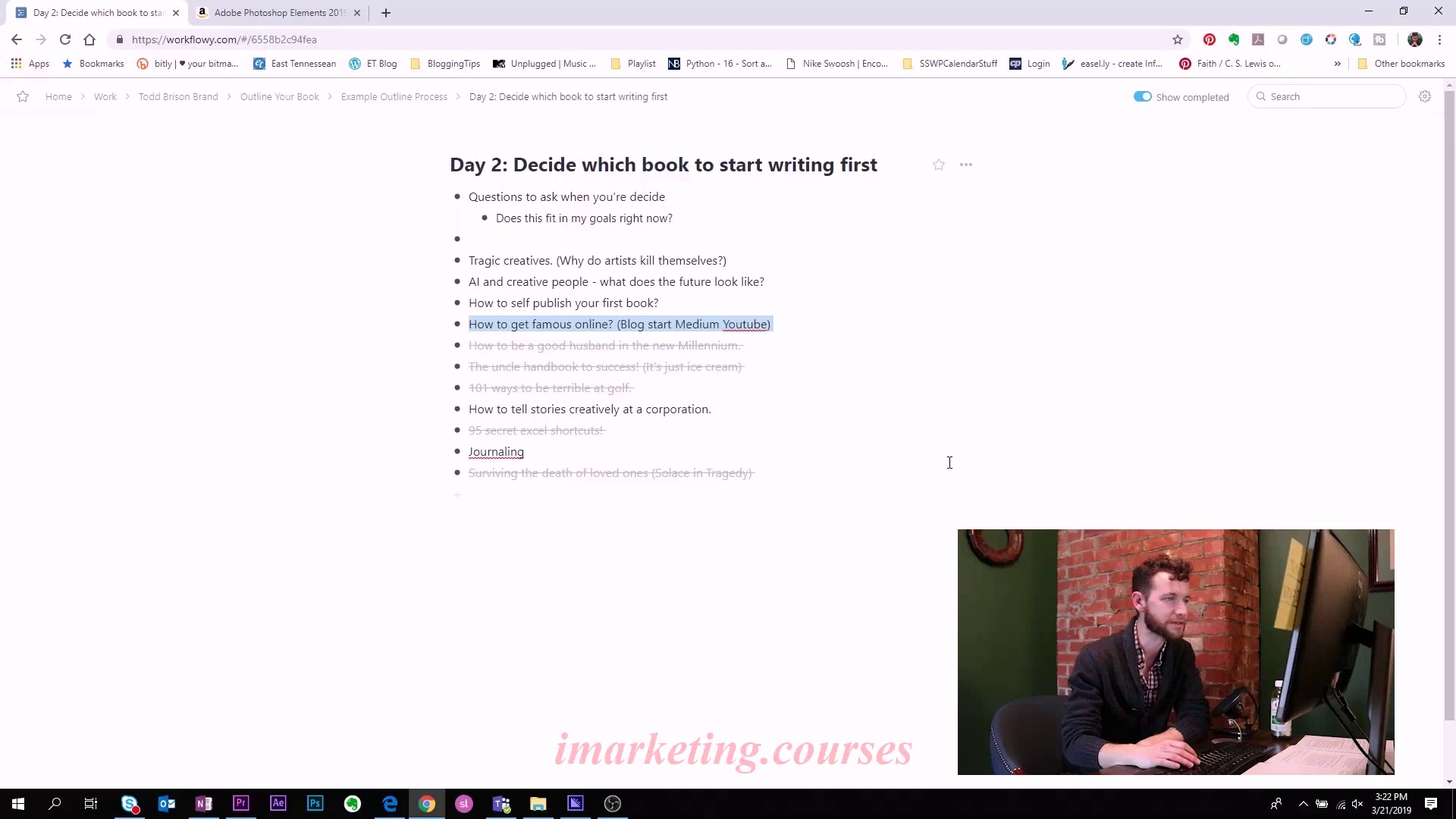
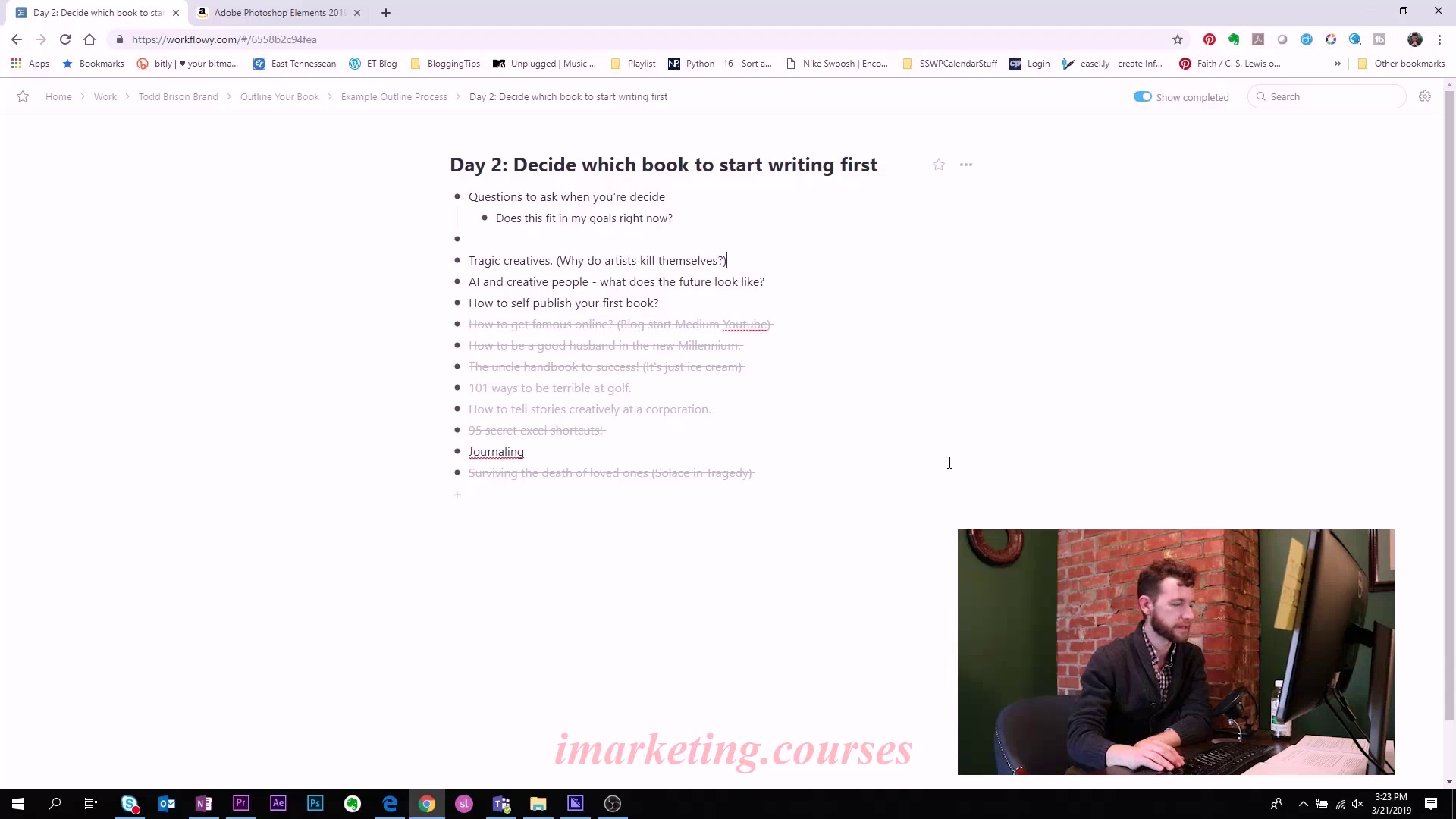
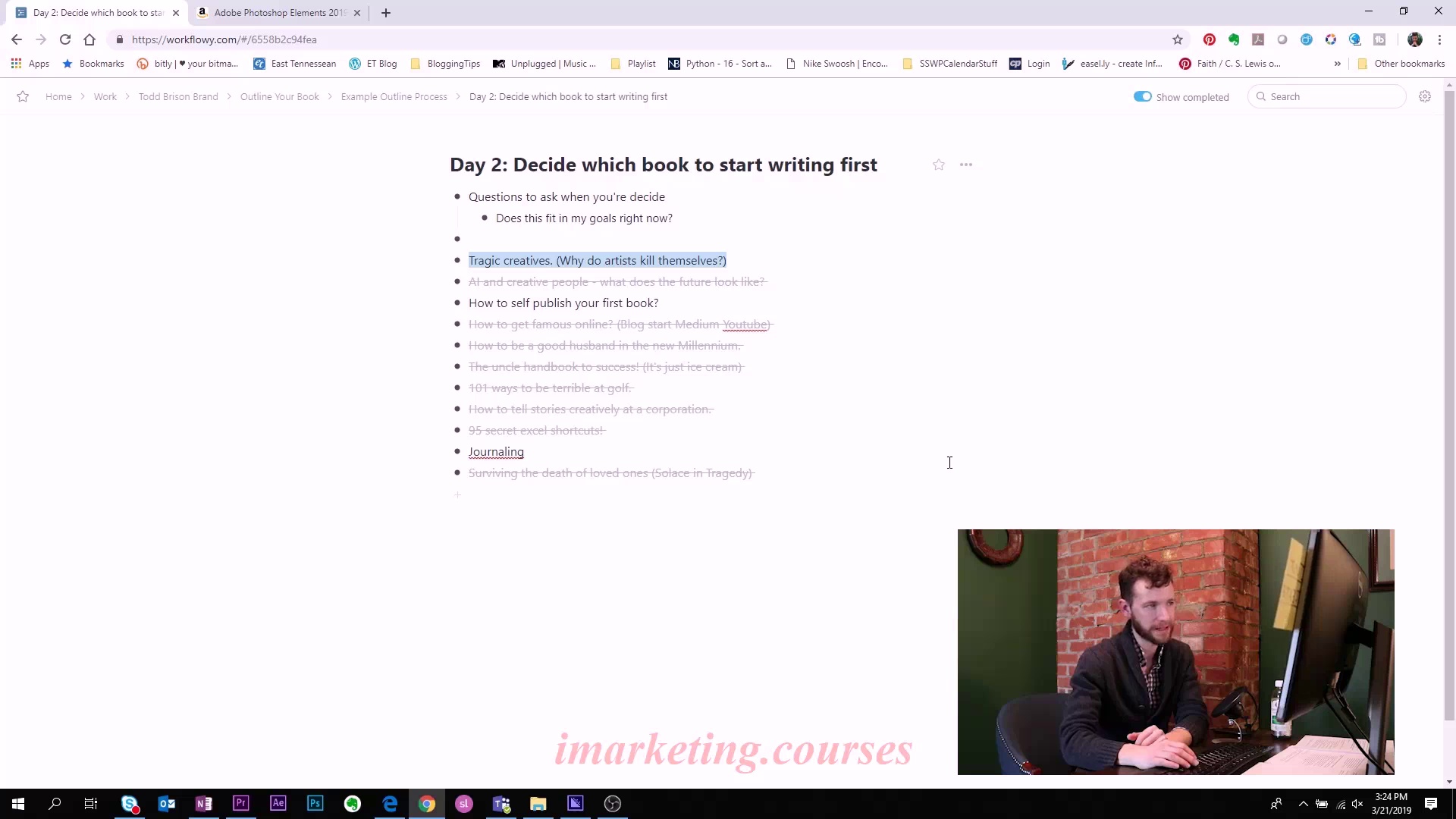
The narrator discusses the challenges of being a one-person media production team and having to operate the camera while presenting. He introduces the goal of selecting the best book idea to move forward with out of a list of ideas generated in a previous lesson.
The narrator explains the creative process involves freely generating ideas first, then ruthlessly cutting down to the best one later, a technique he learned when editing news stories. He advises readers to "kill your darlings" and not get attached to any one idea if you want to actually write your book.
The narrator demonstrates evaluating book ideas based on goals, passion/expertise/market fit, compelling premise, and customer interest. Through this process of elimination, he settles on "How to Self-Publish Your First Book" as the idea he will outline in the next lesson.
He assigns homework to go through the workbook and use the discussed criteria to select one best book idea out of each reader's list to move forward with.
.